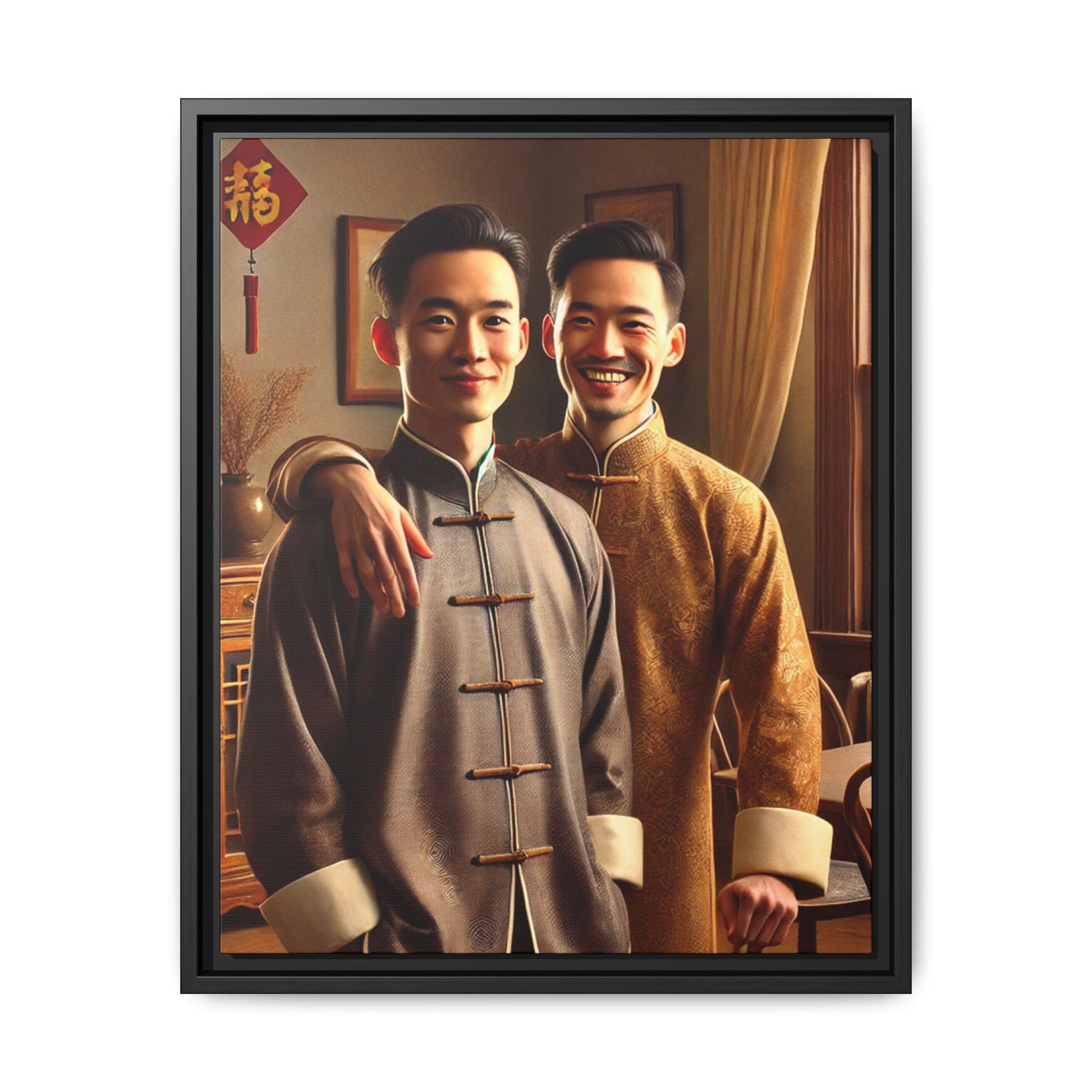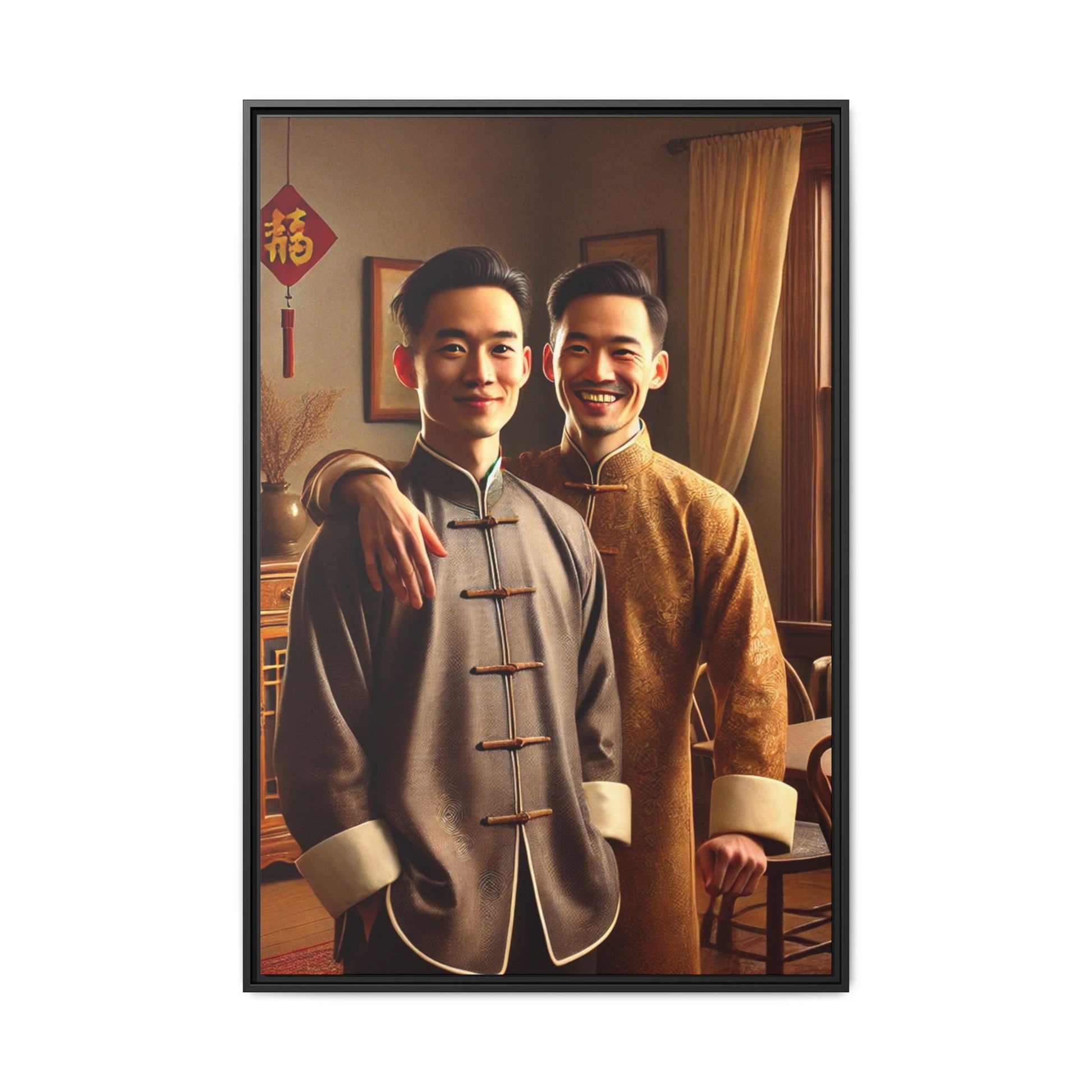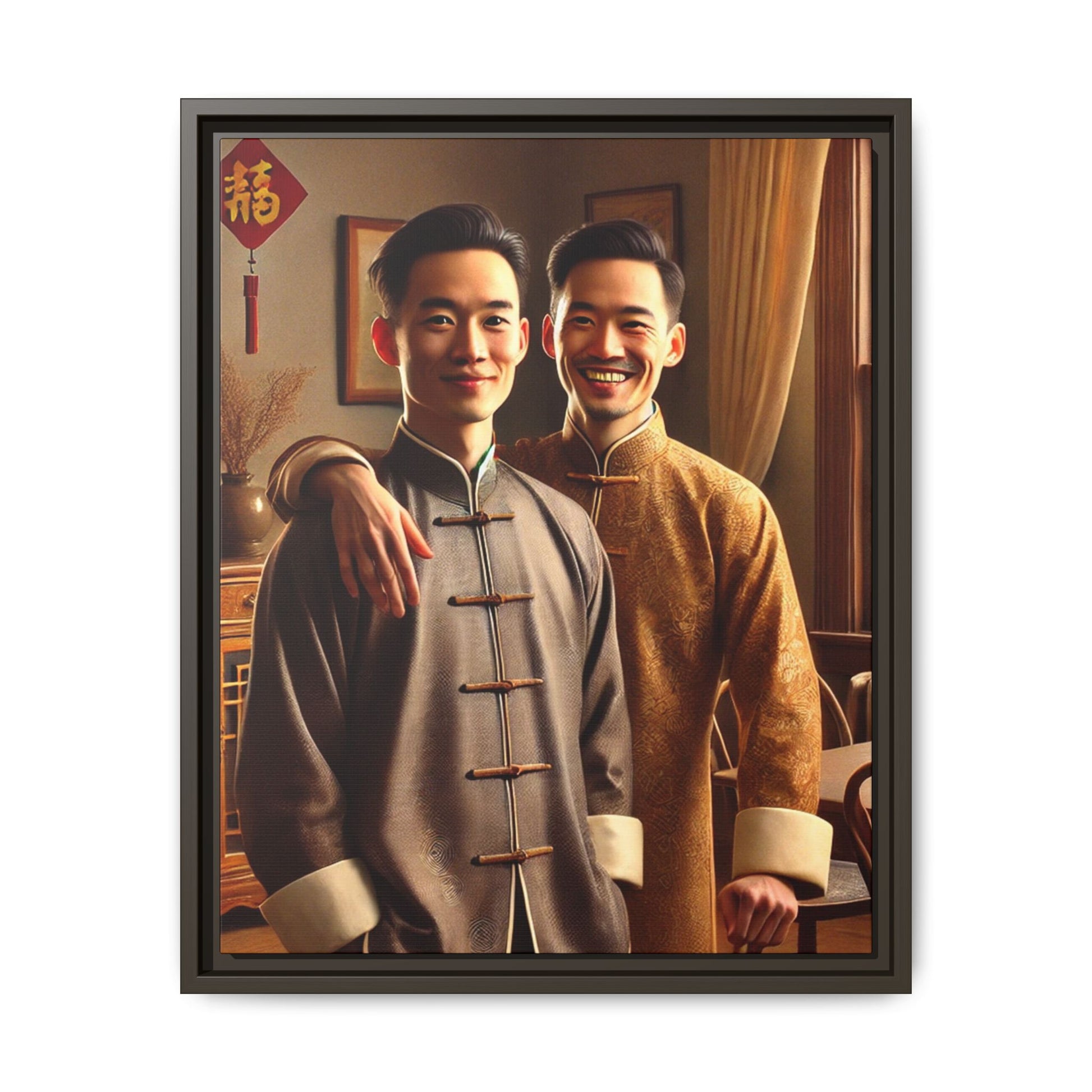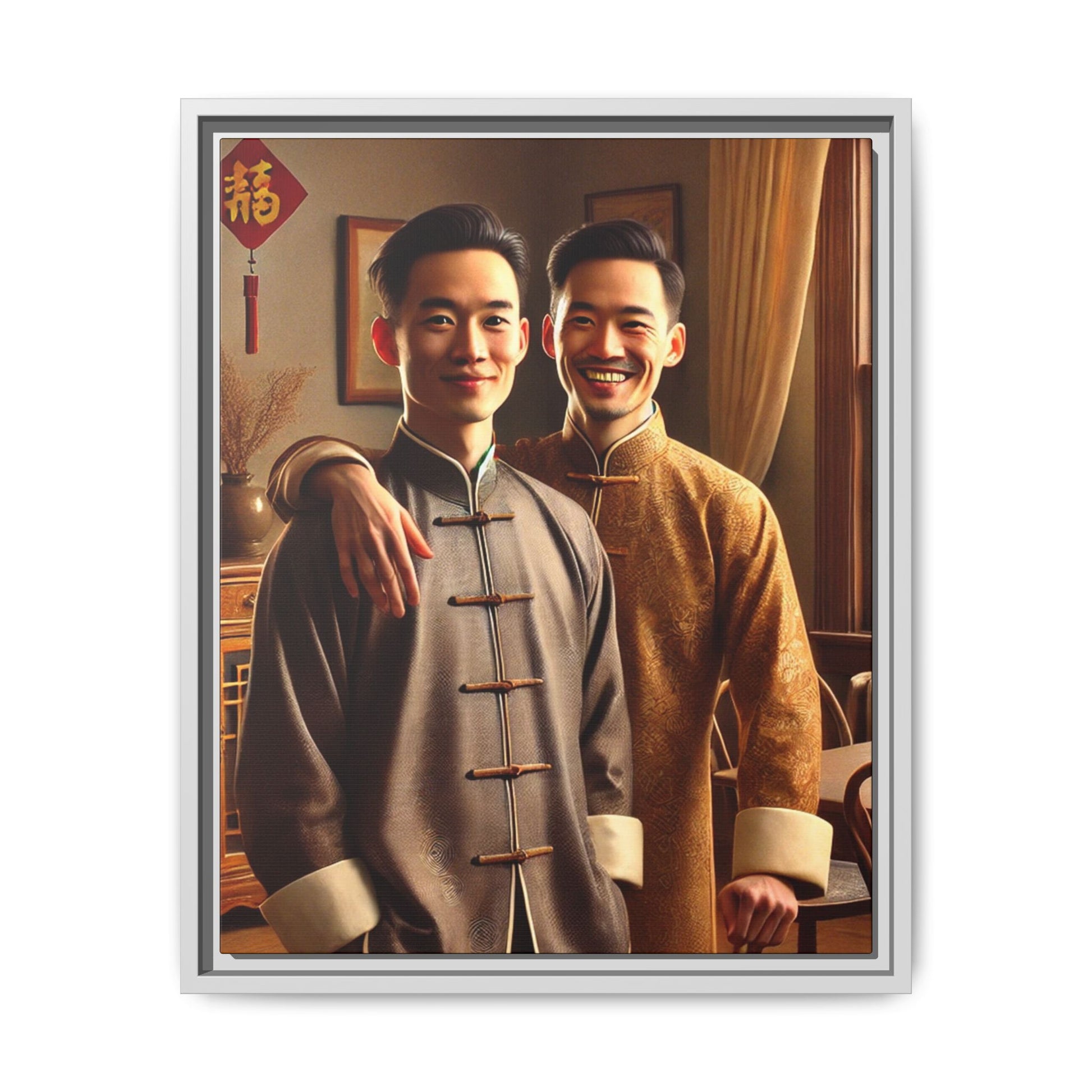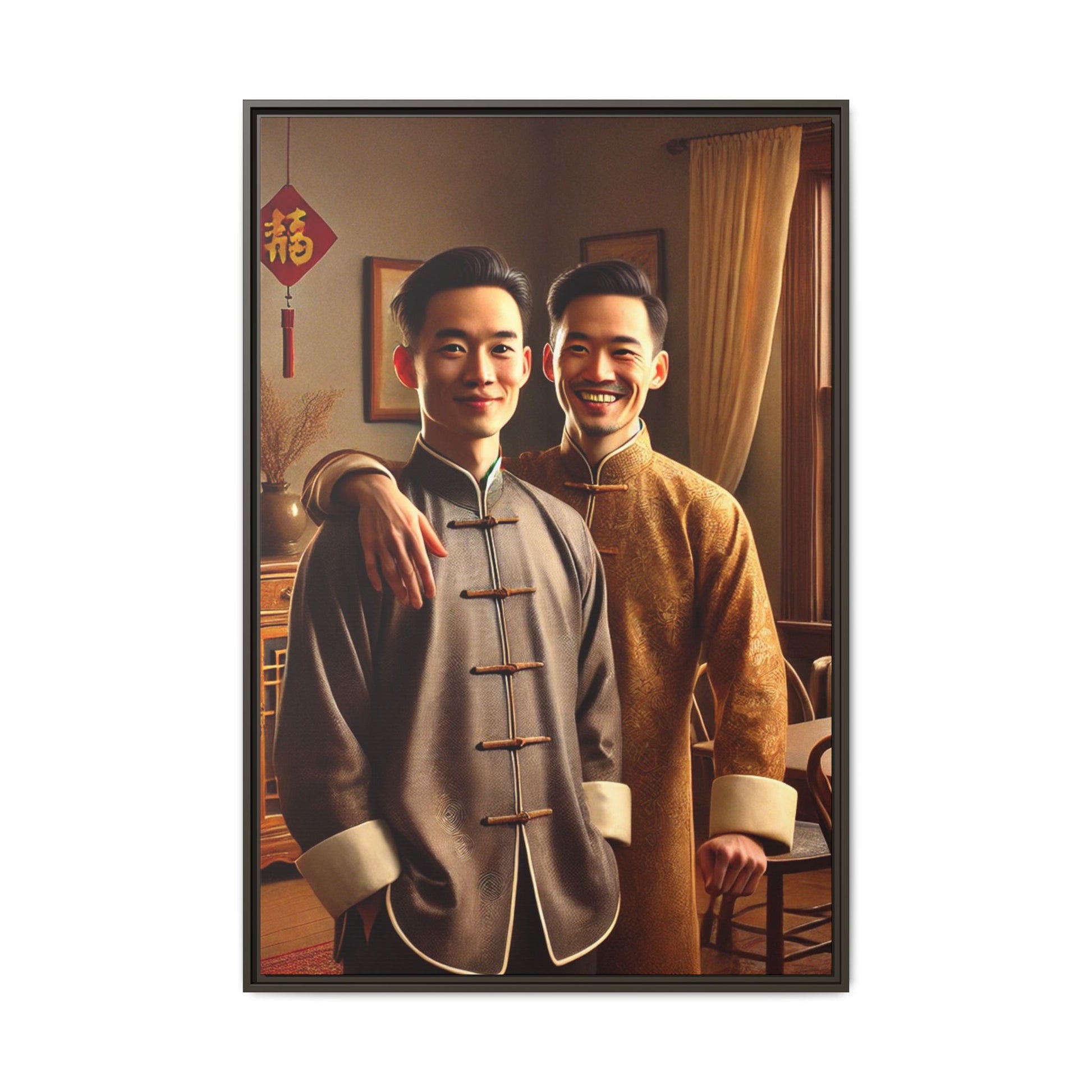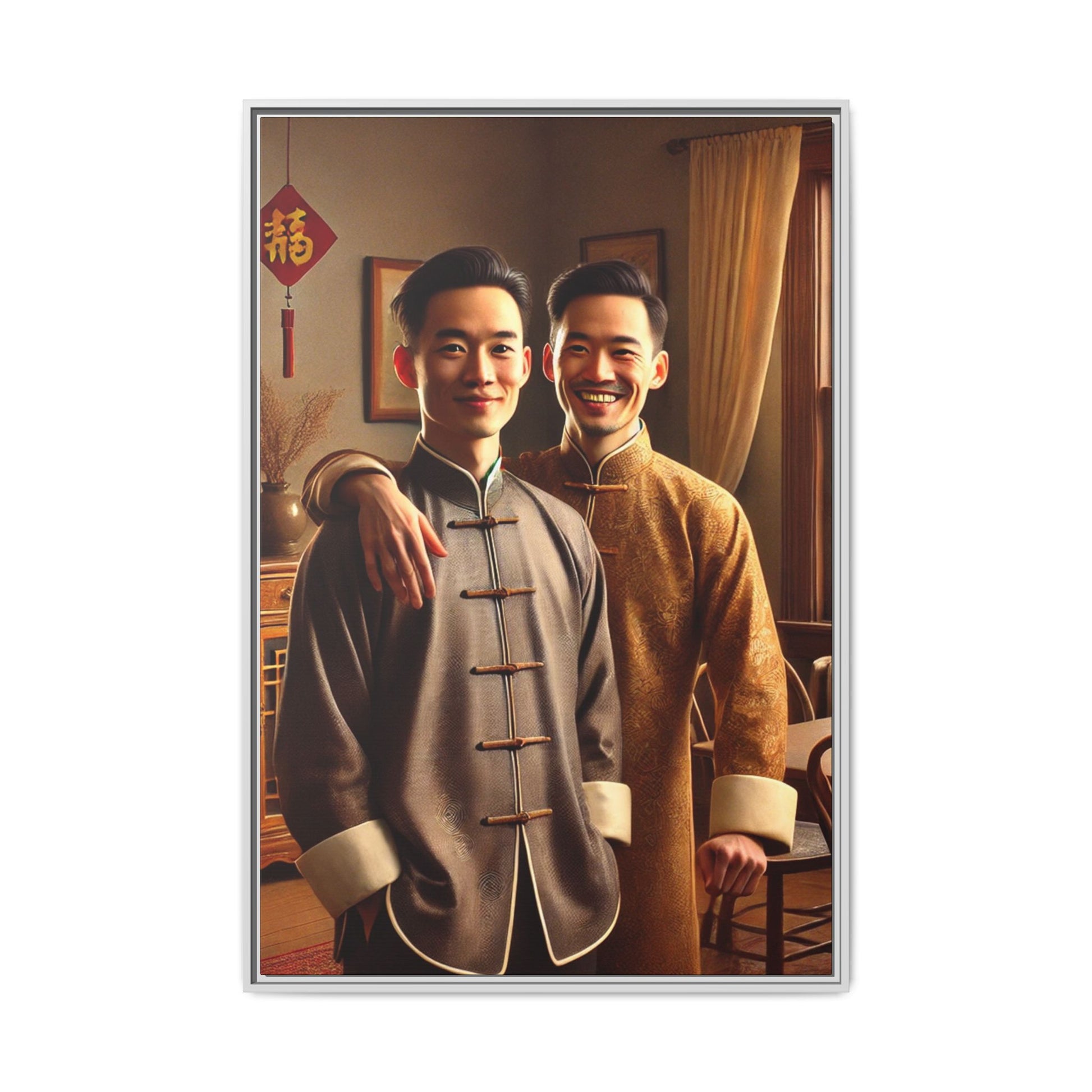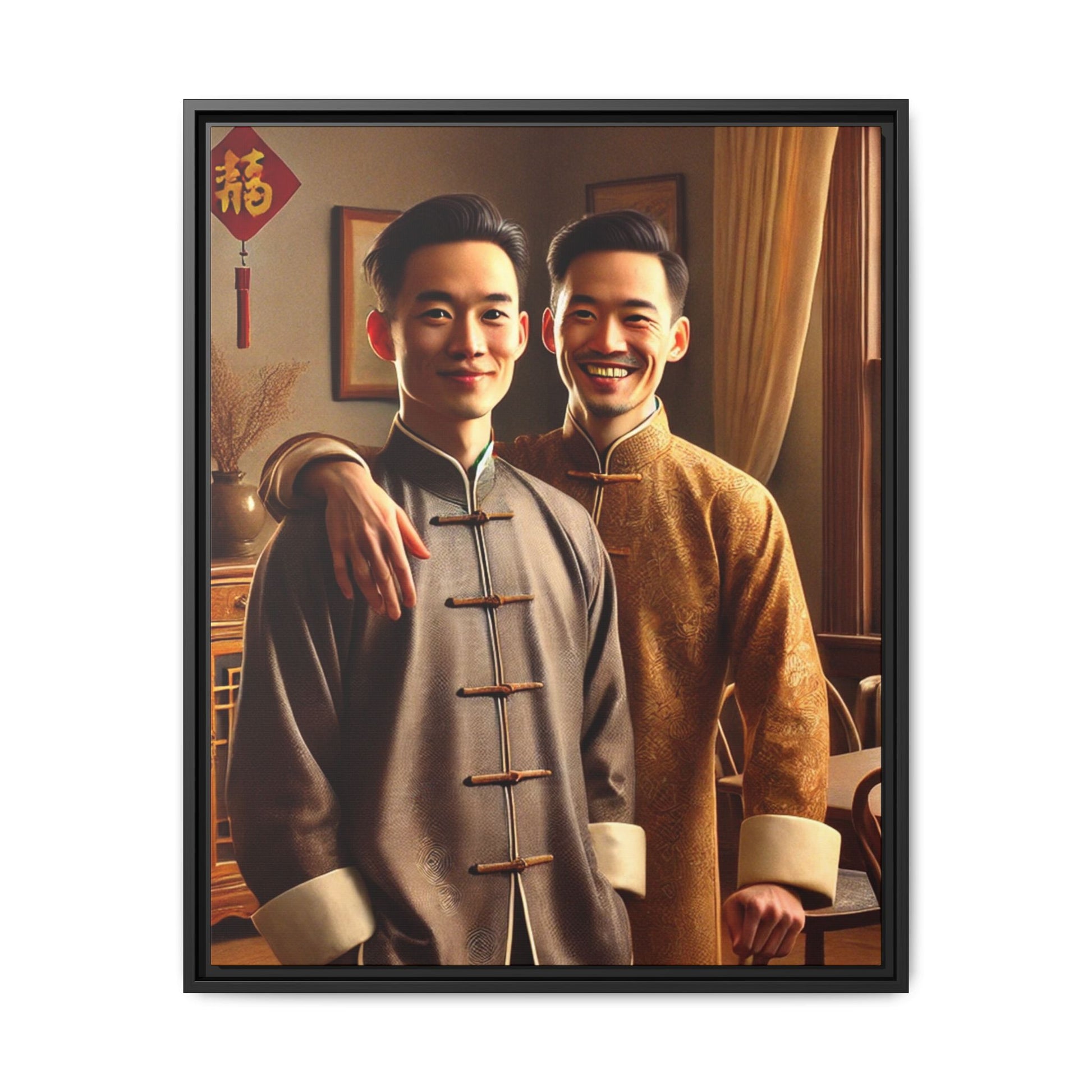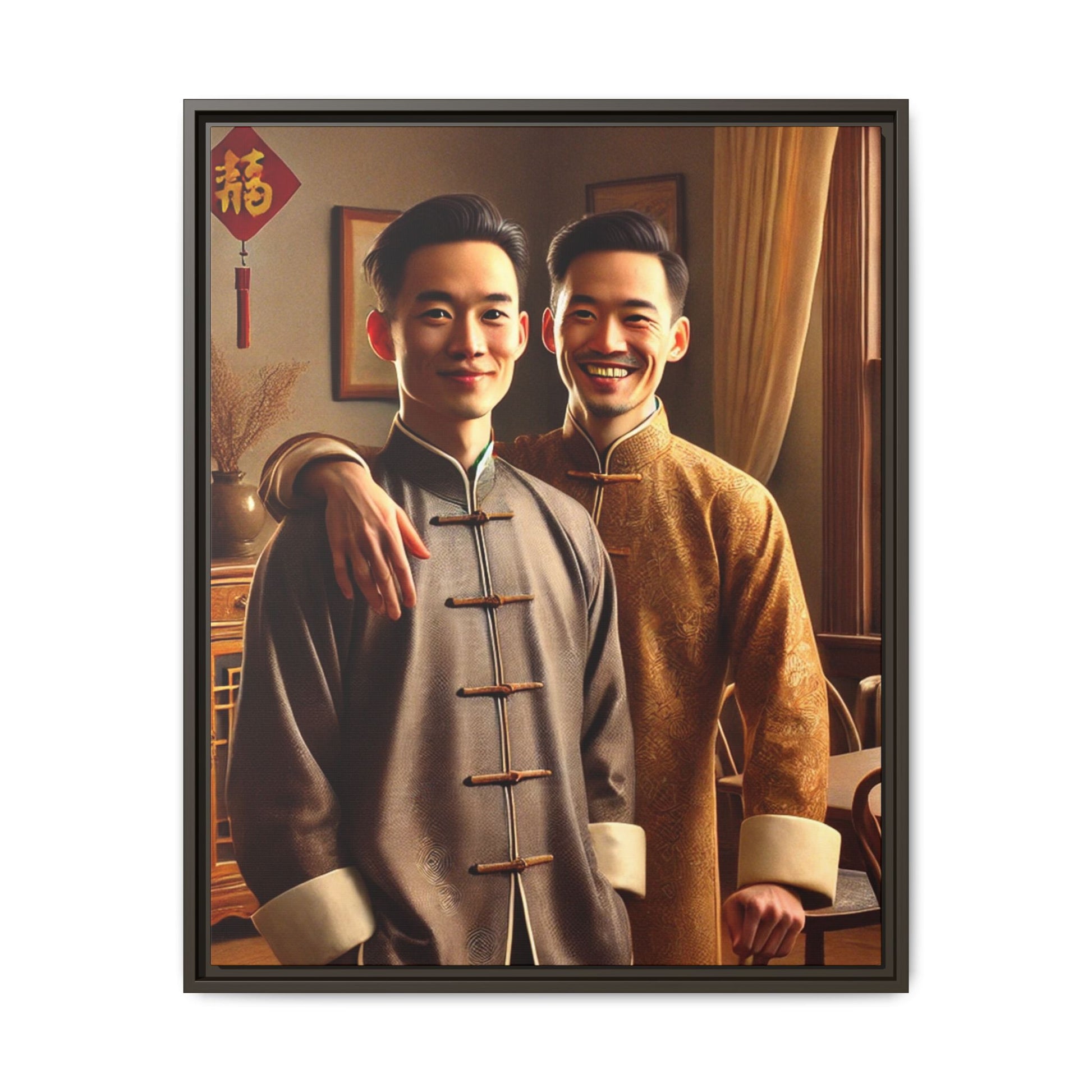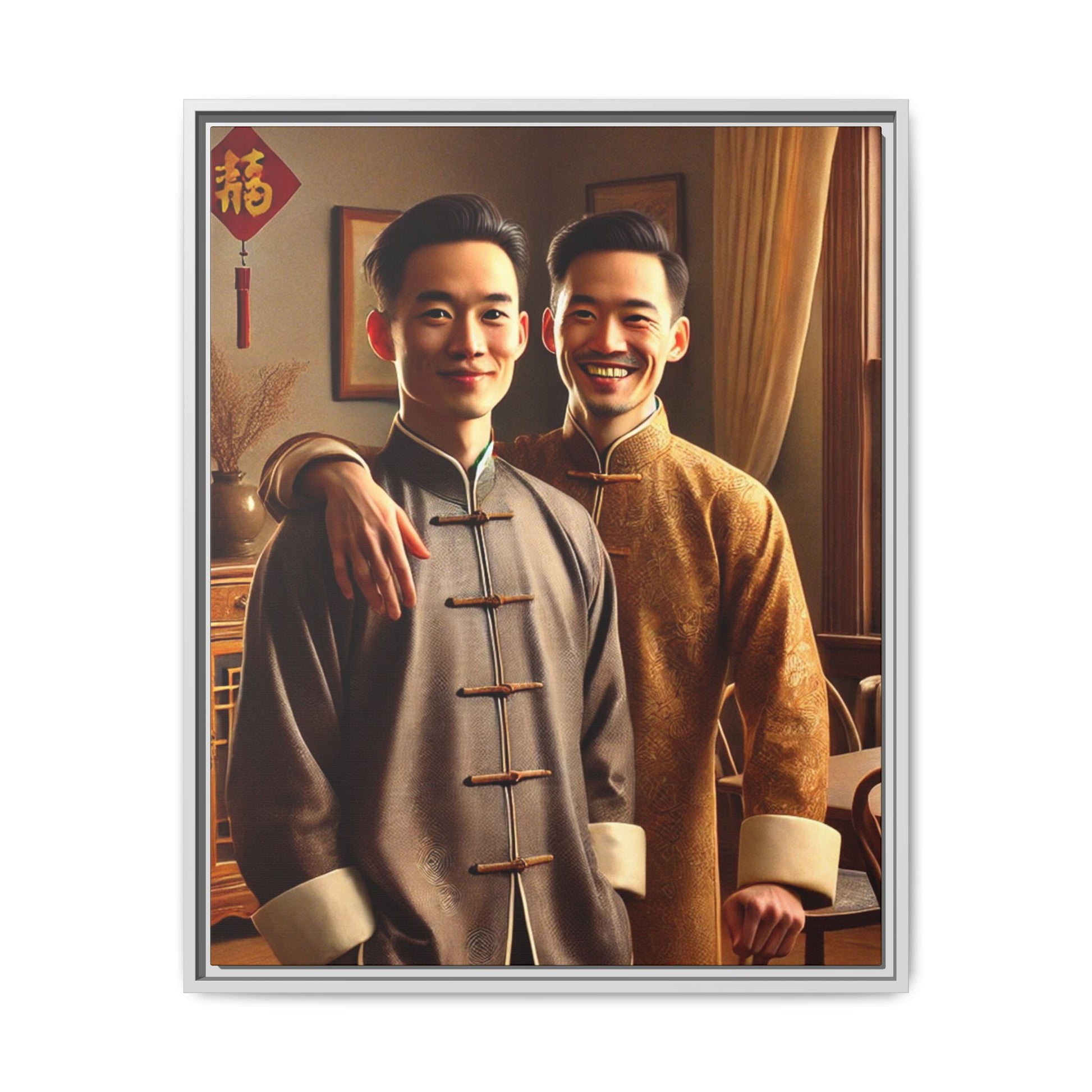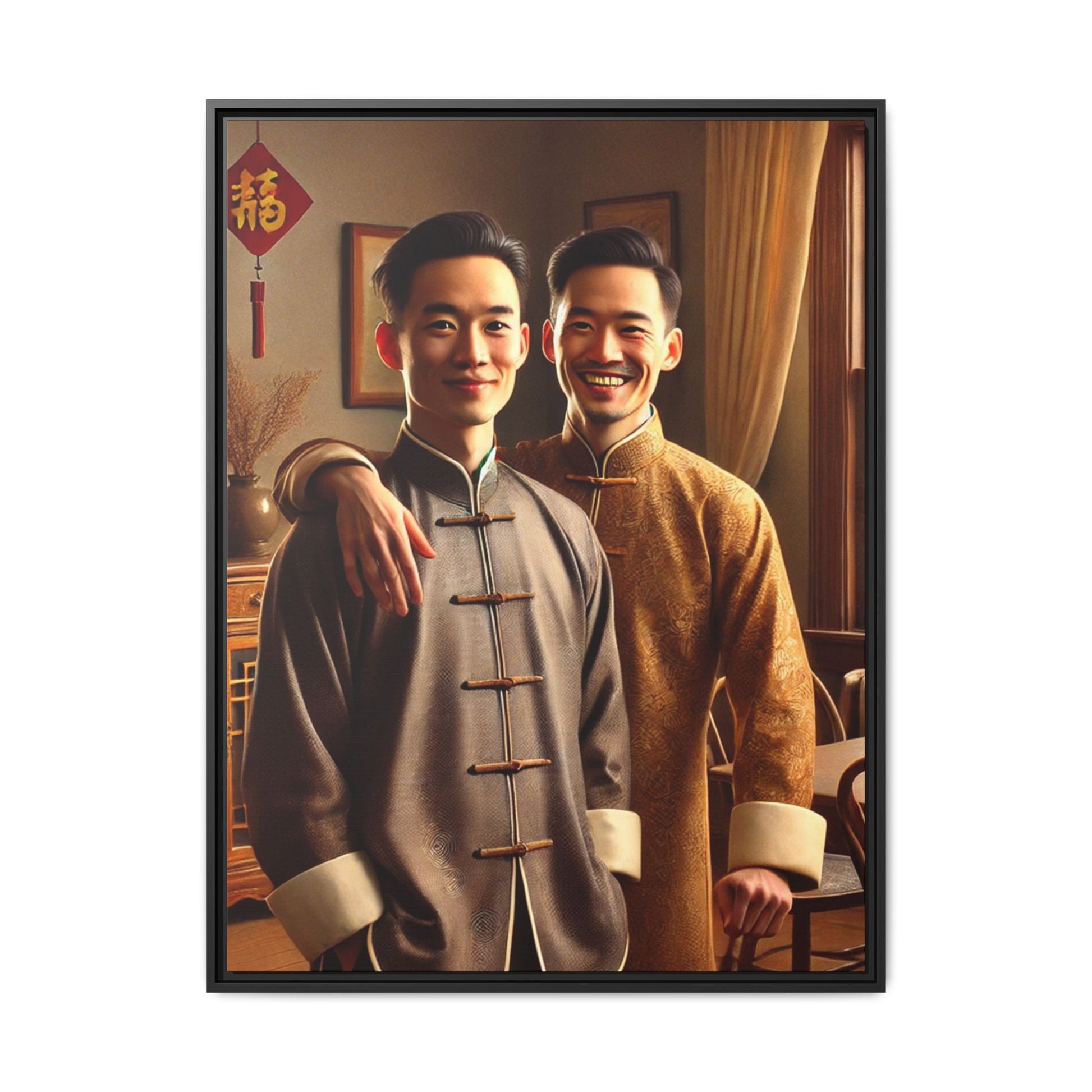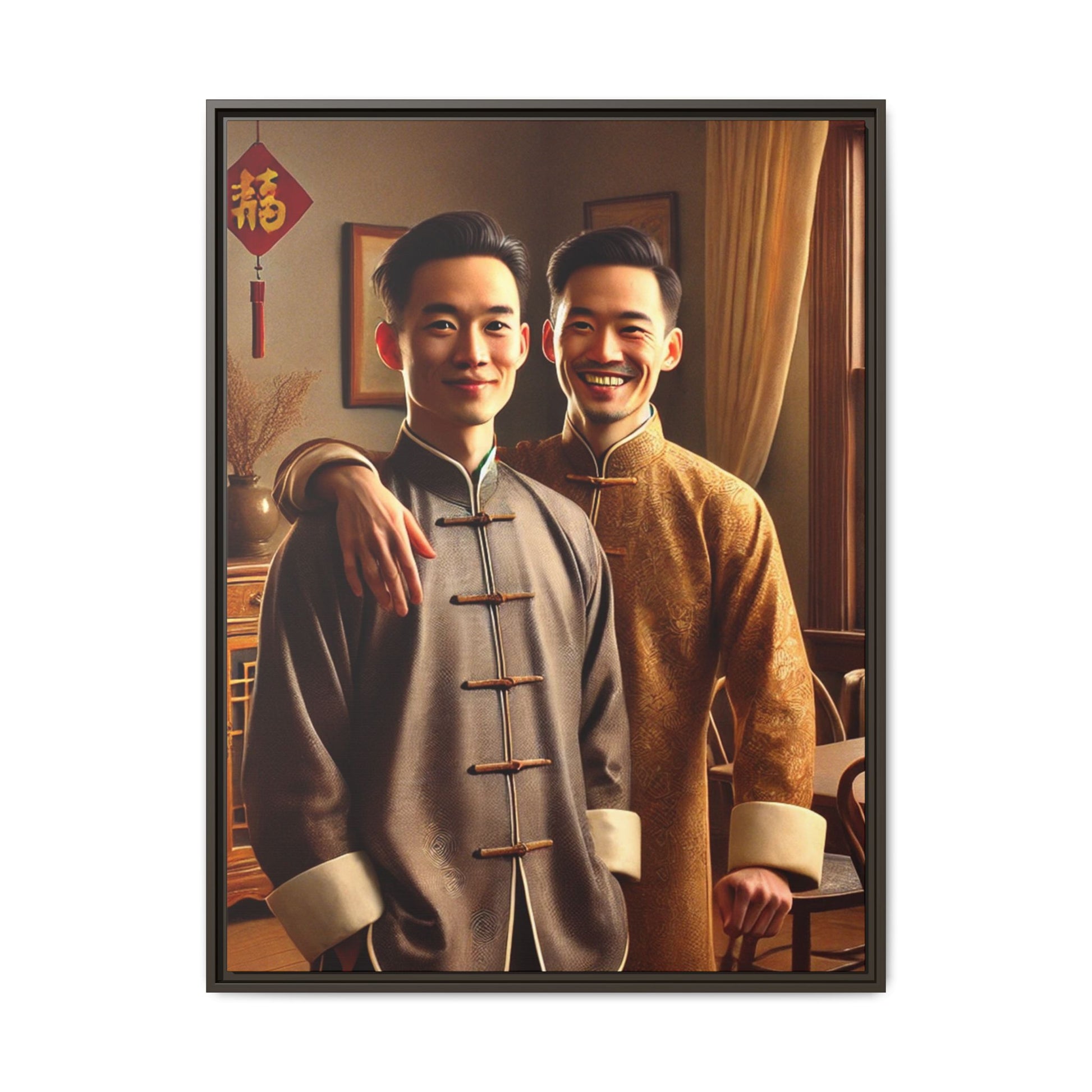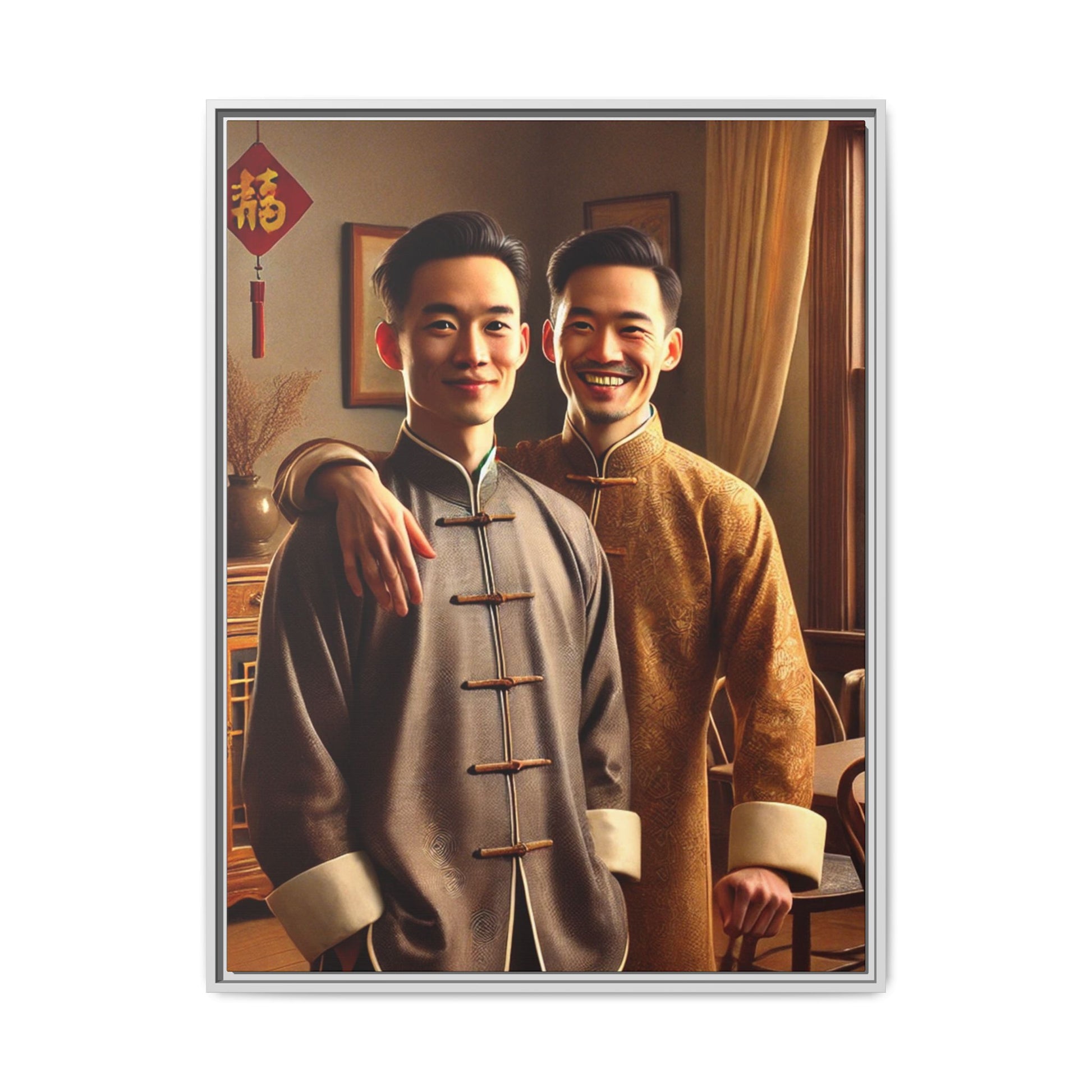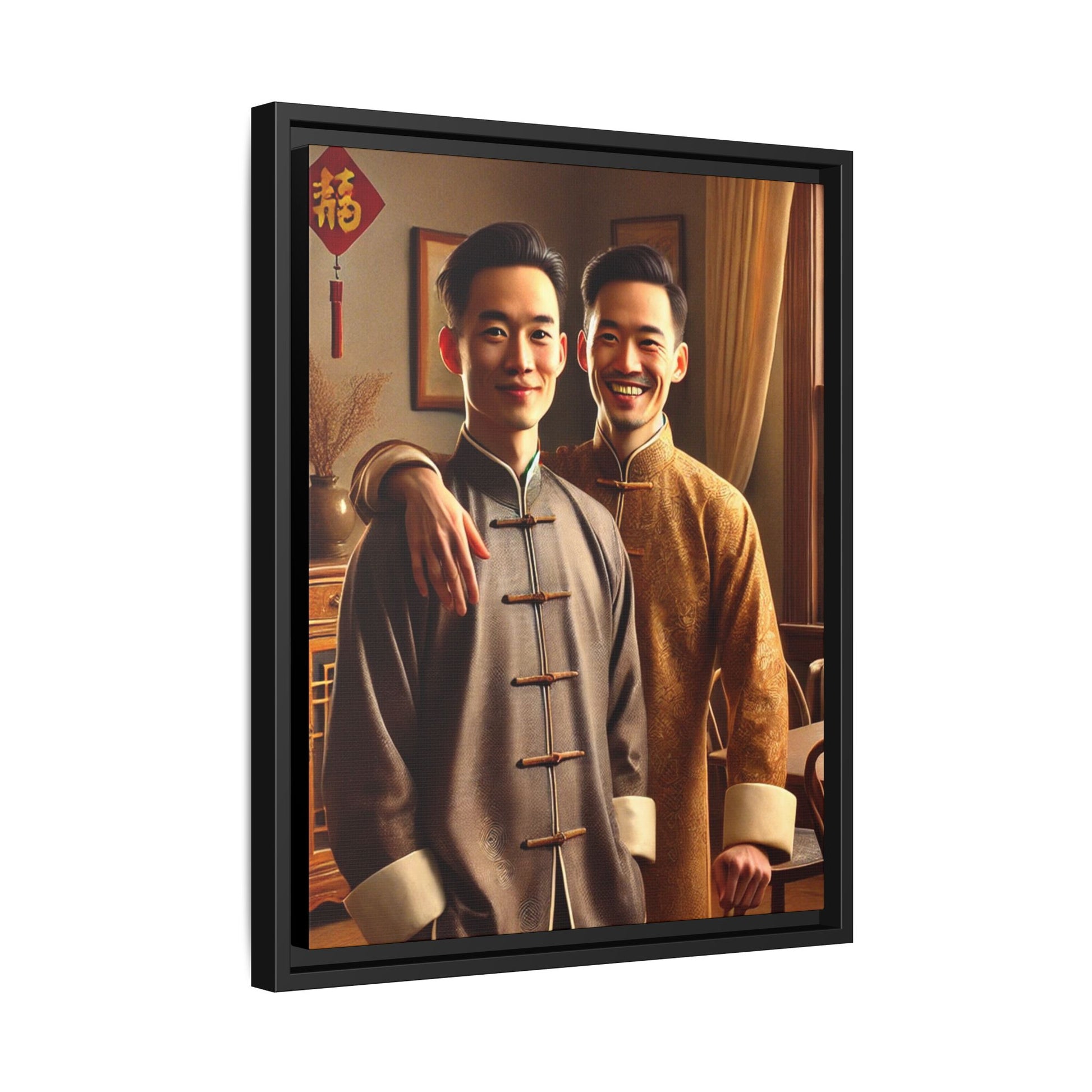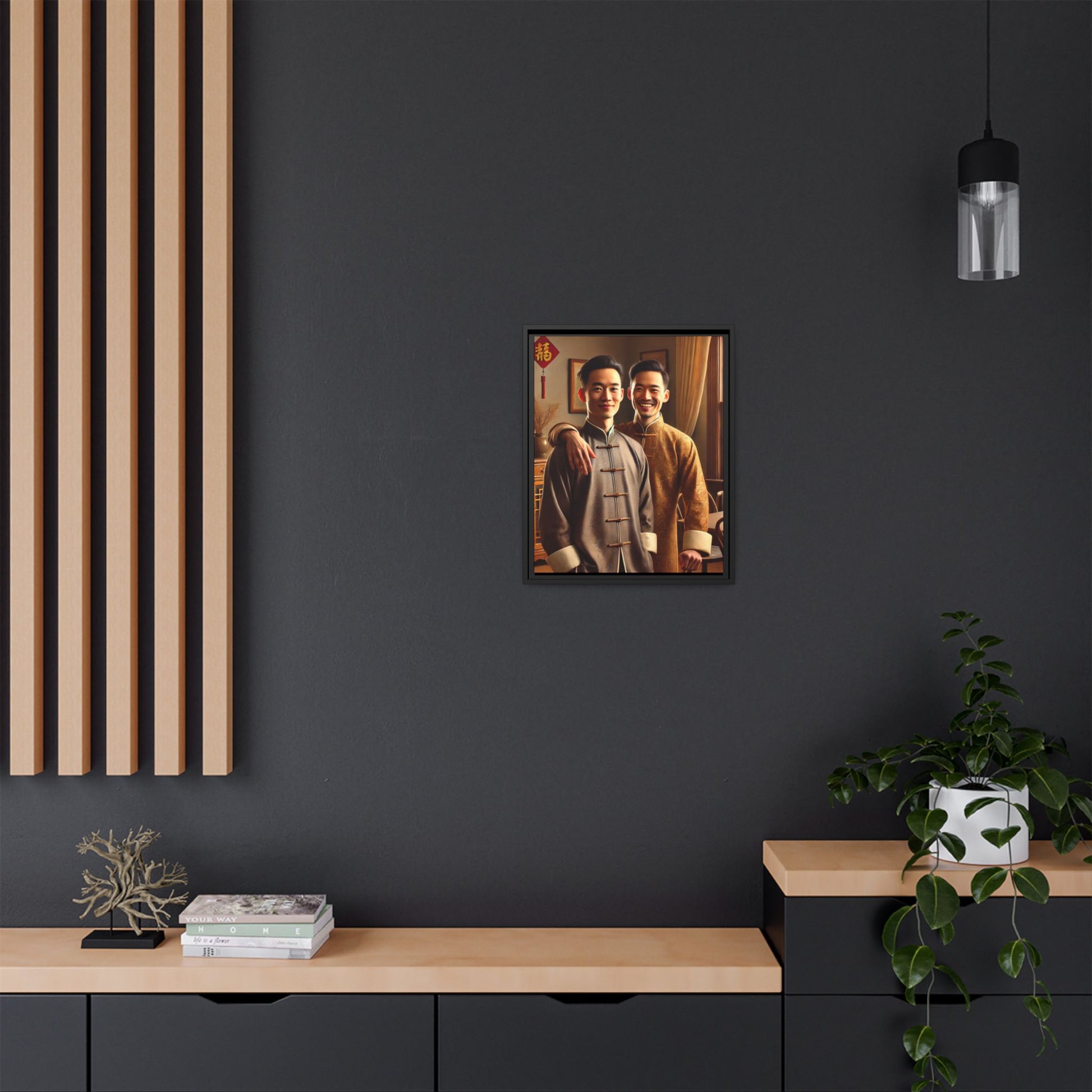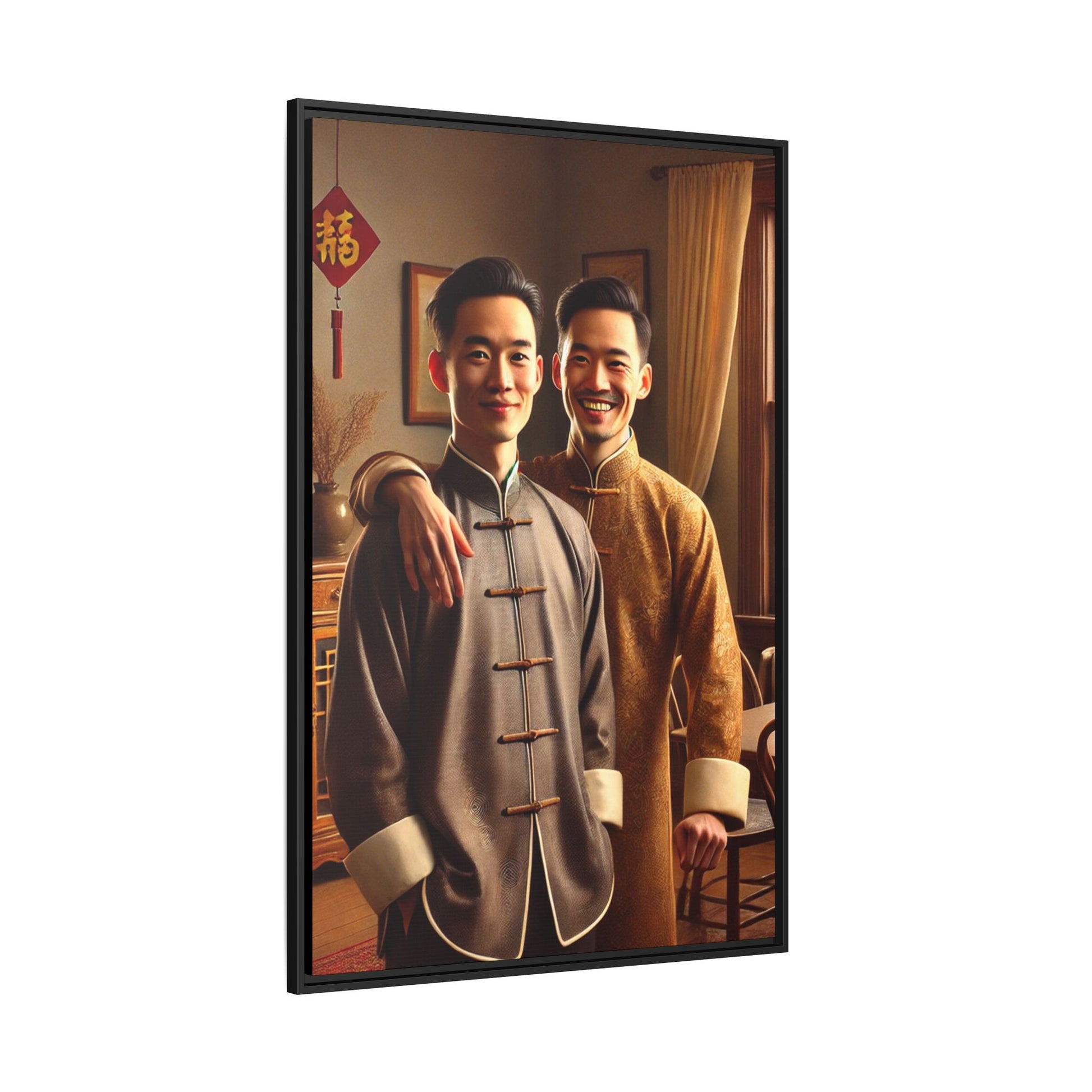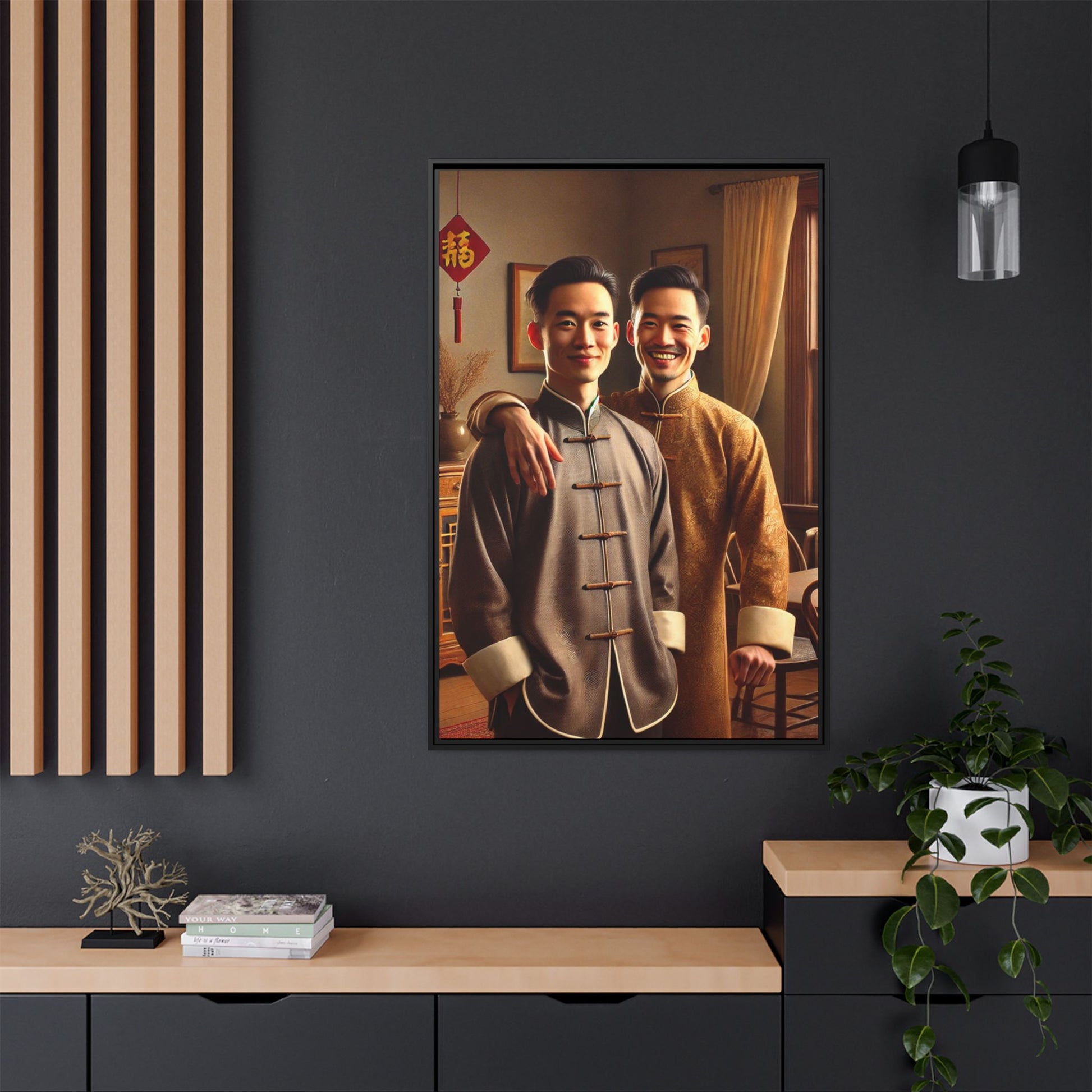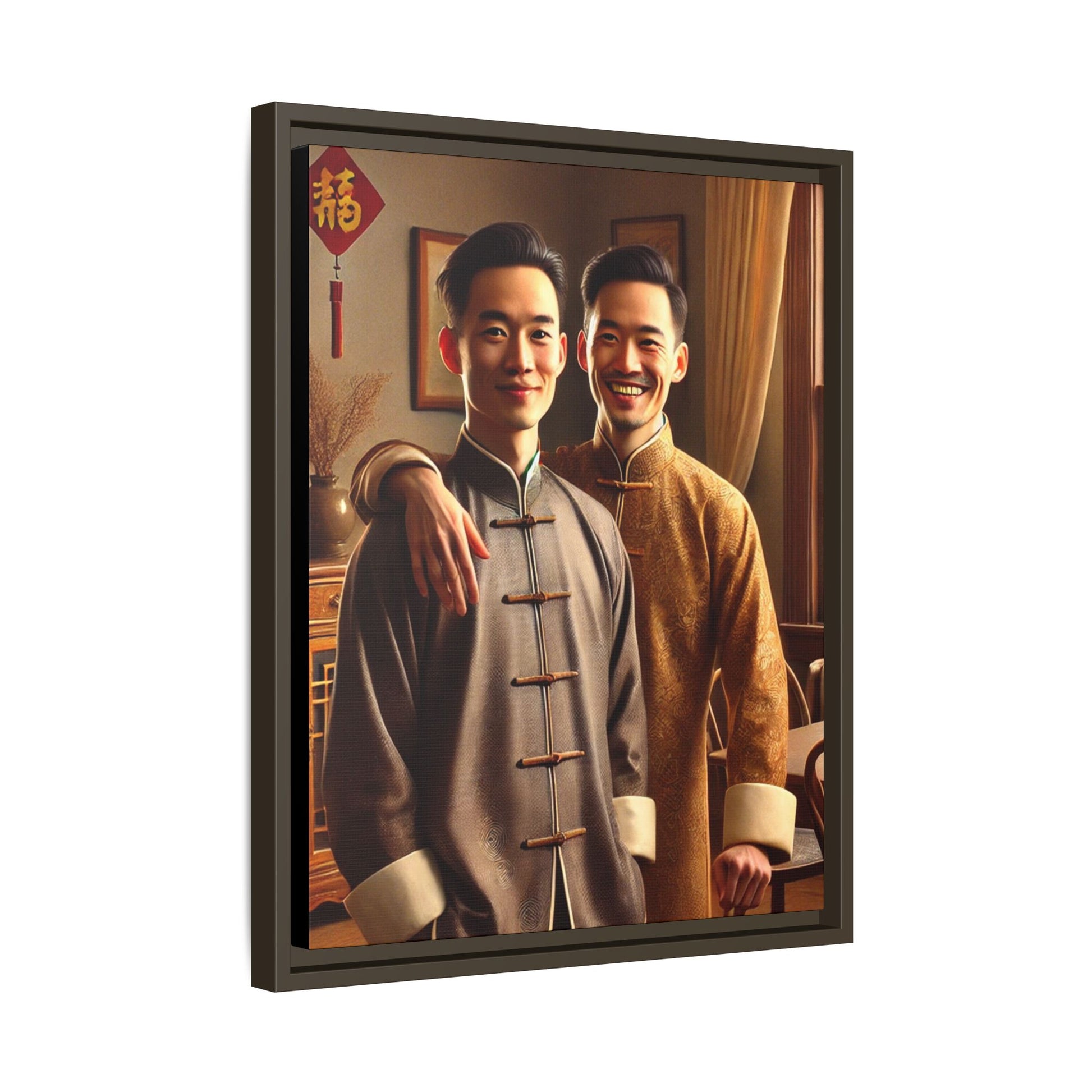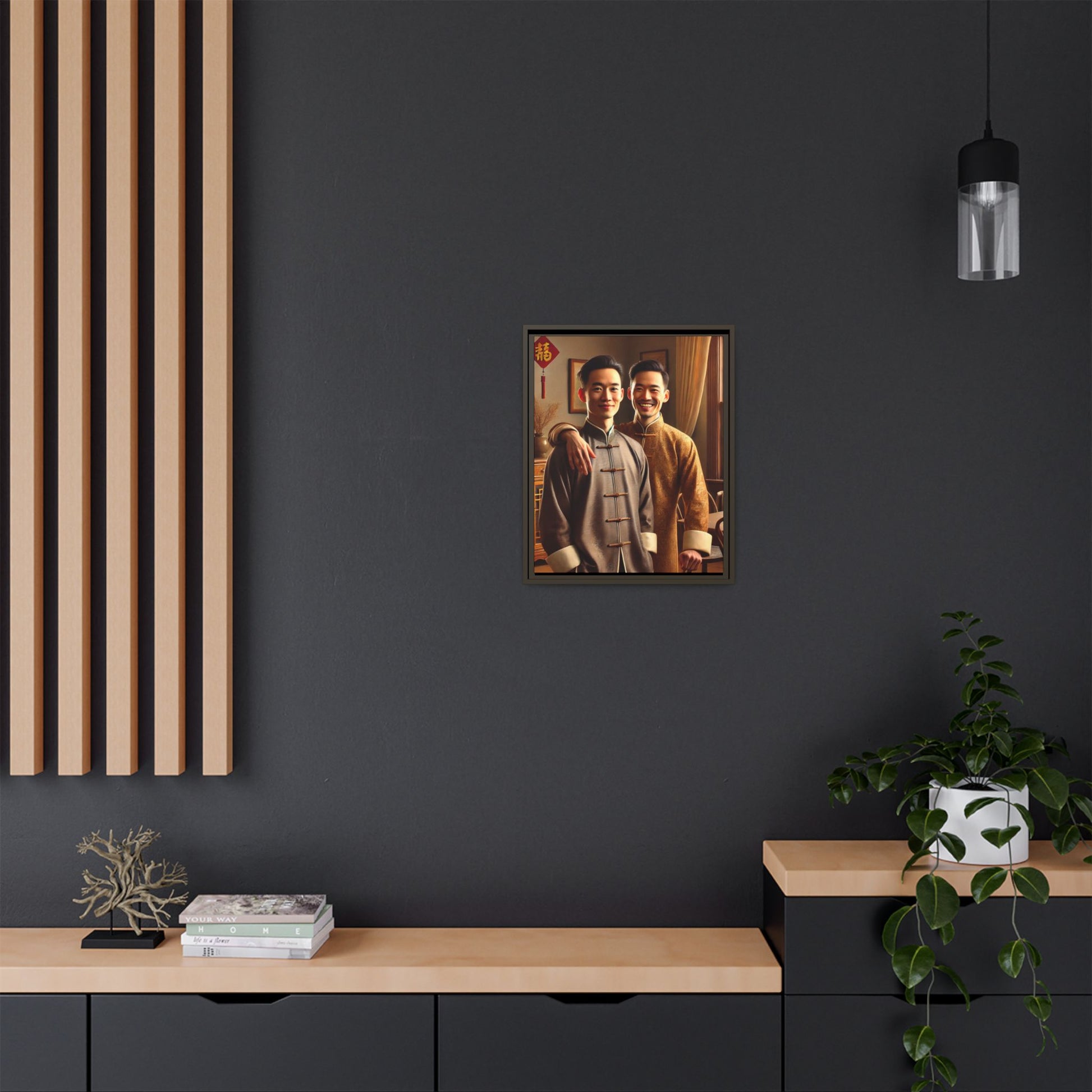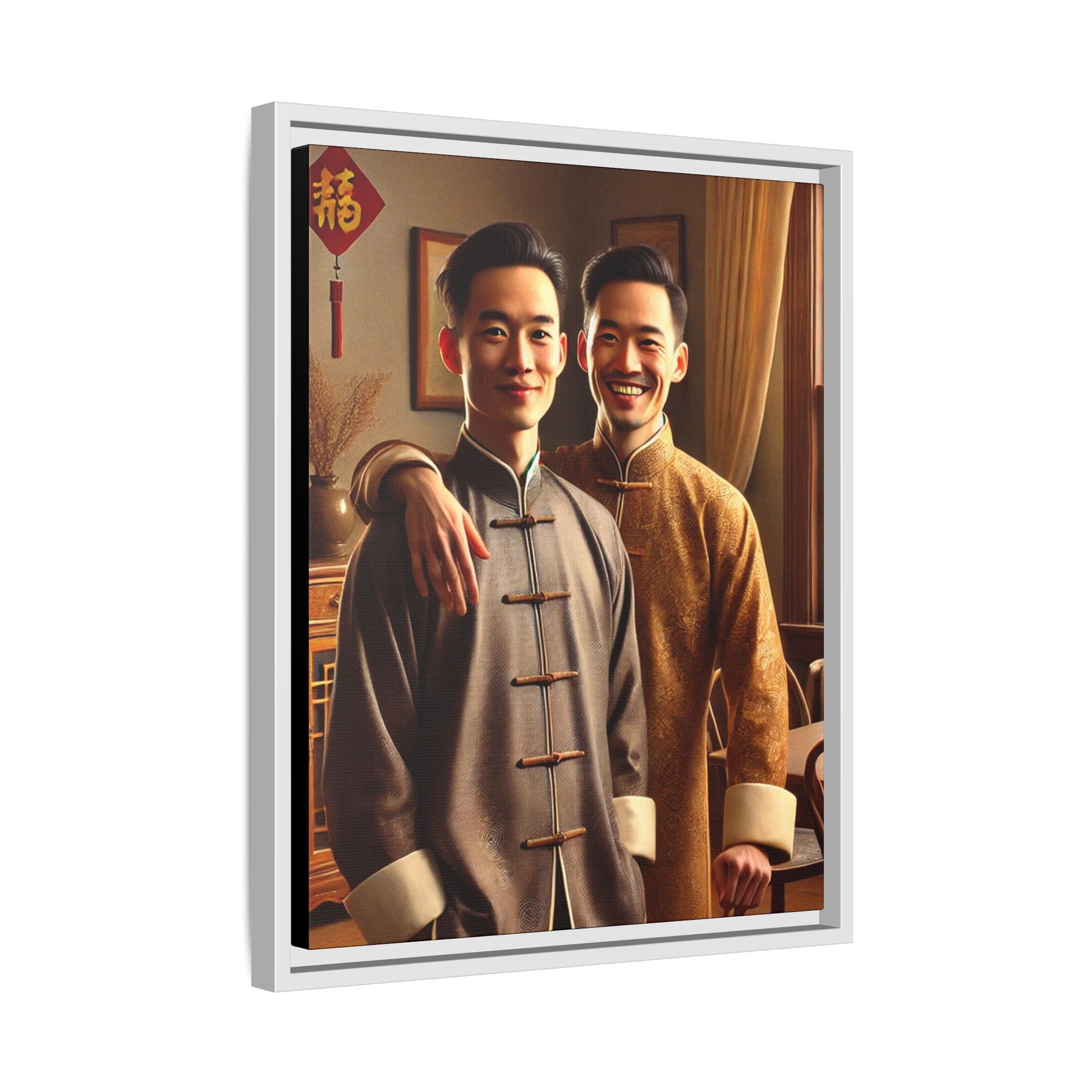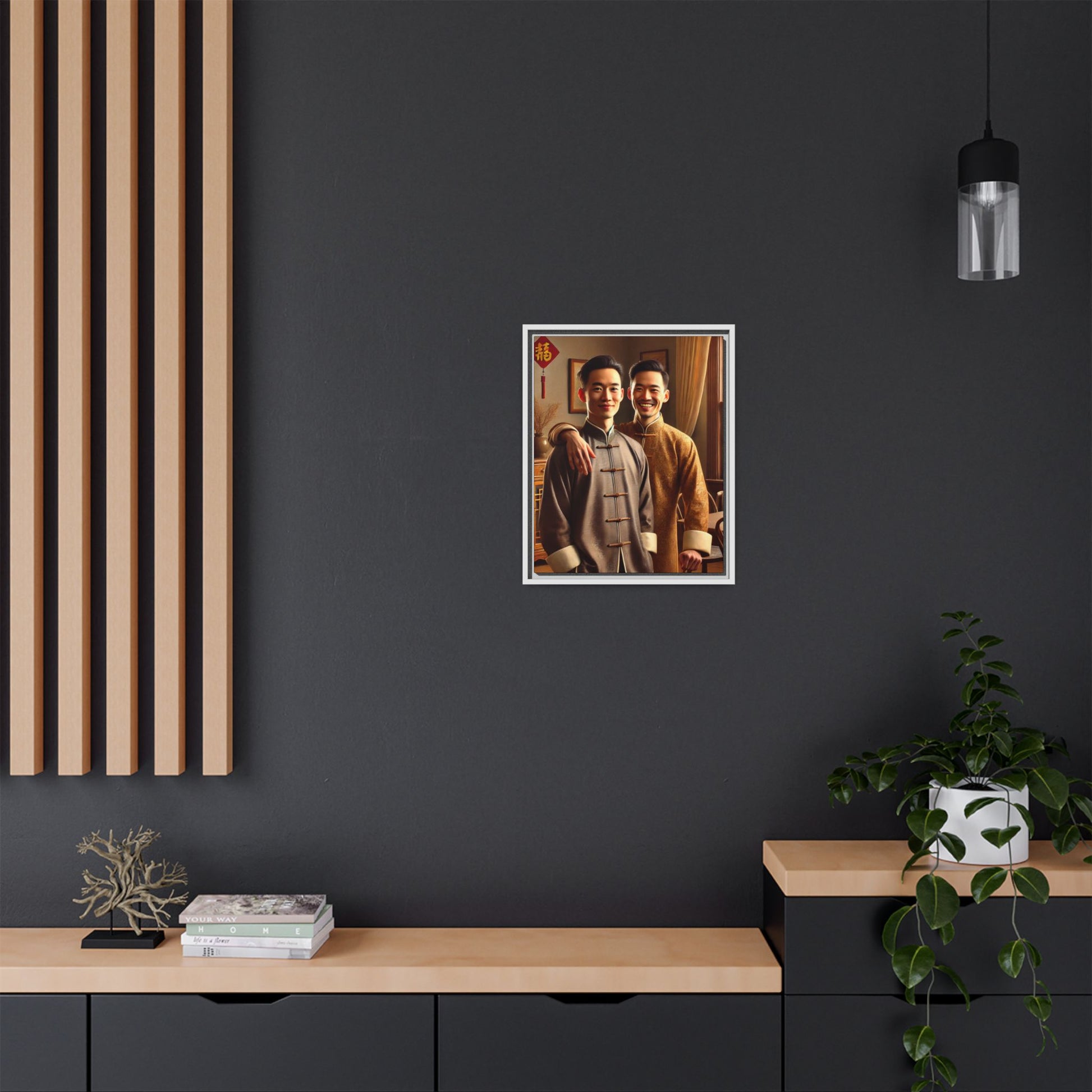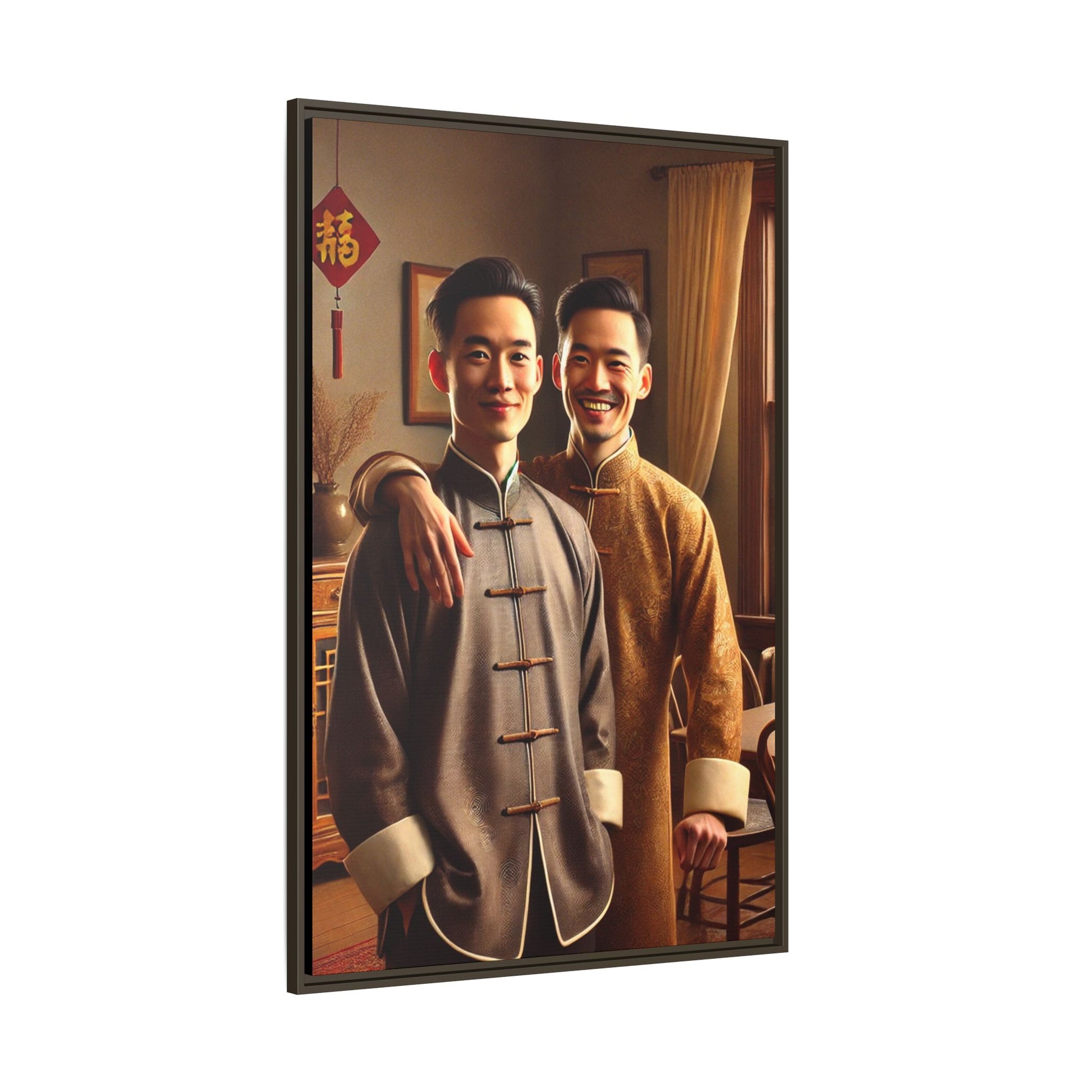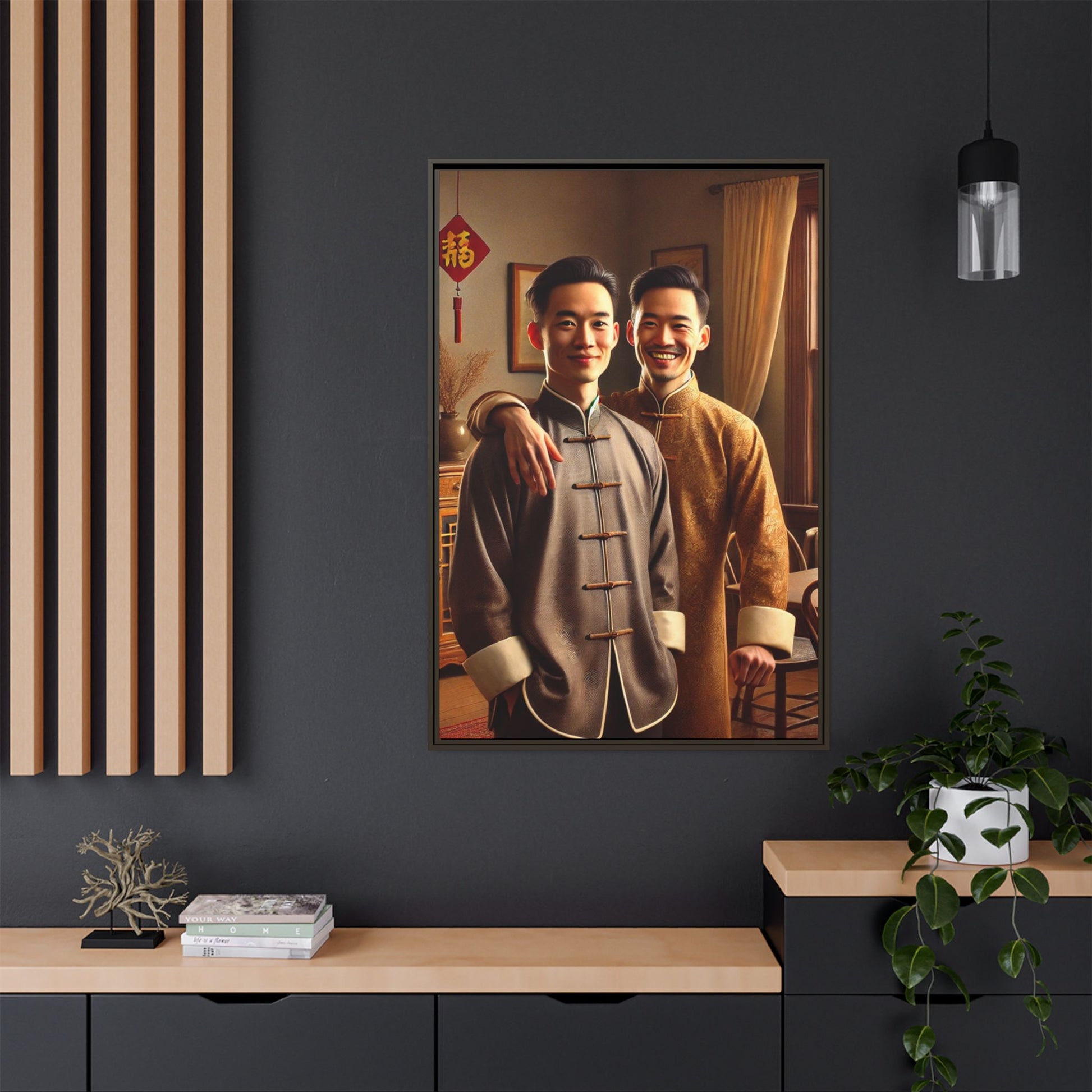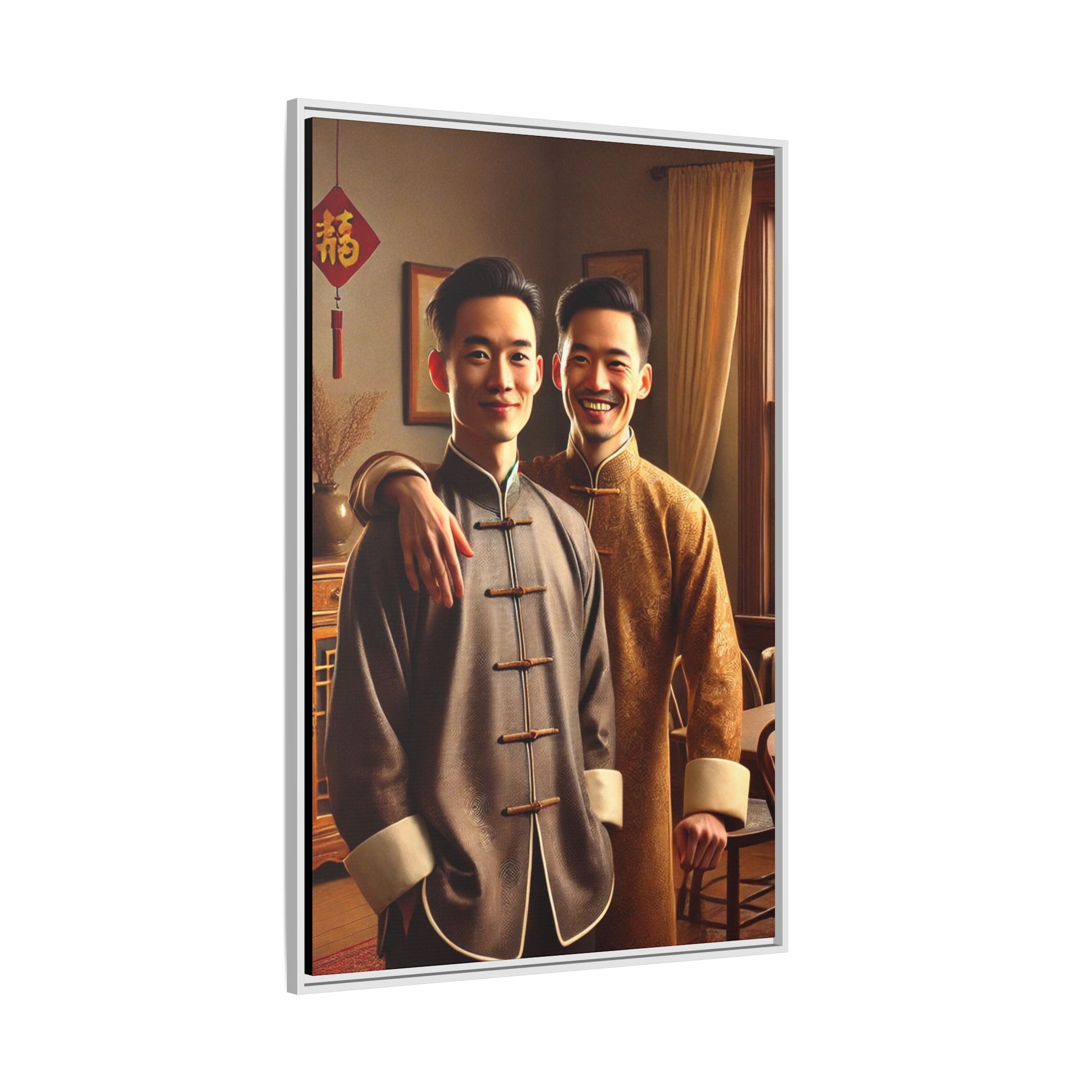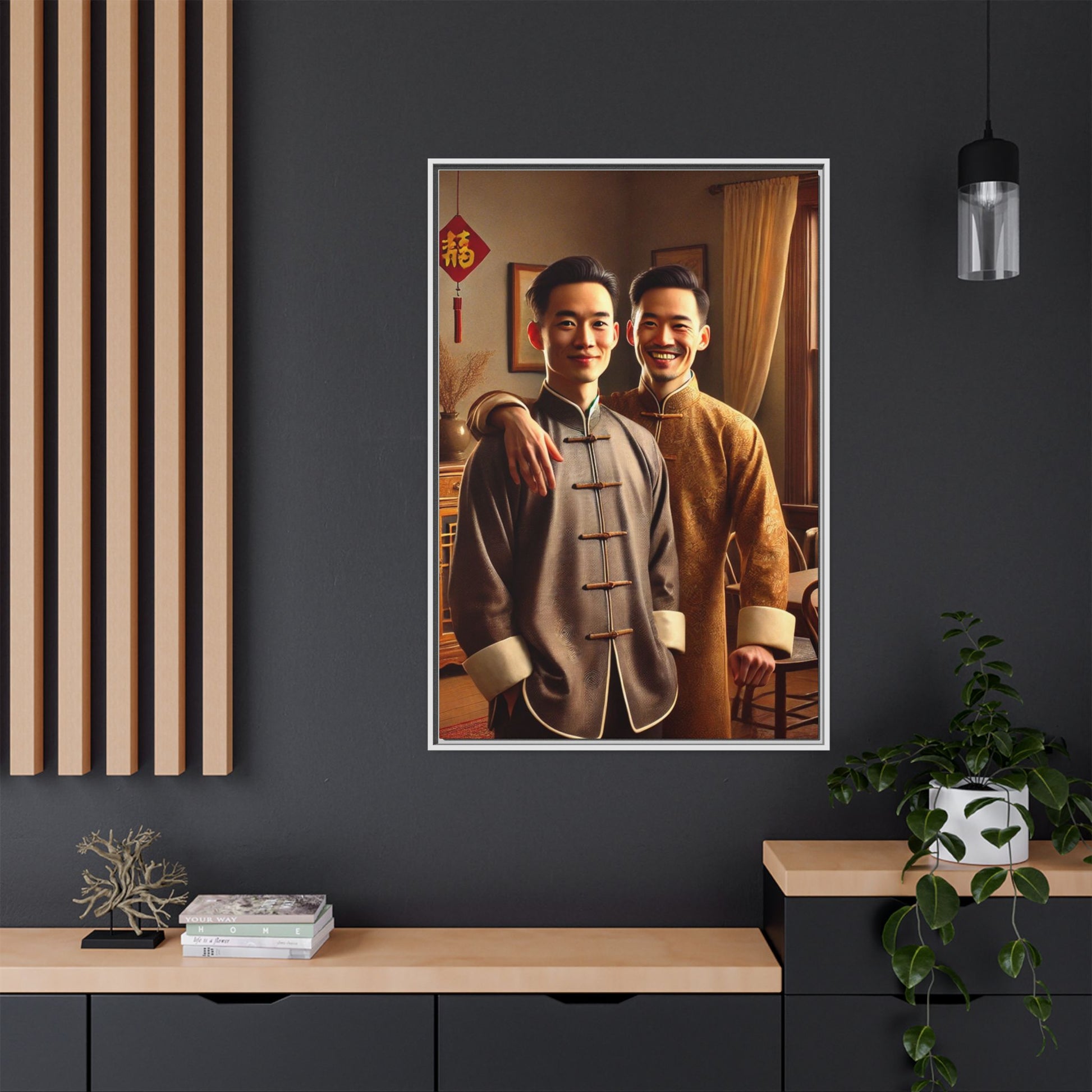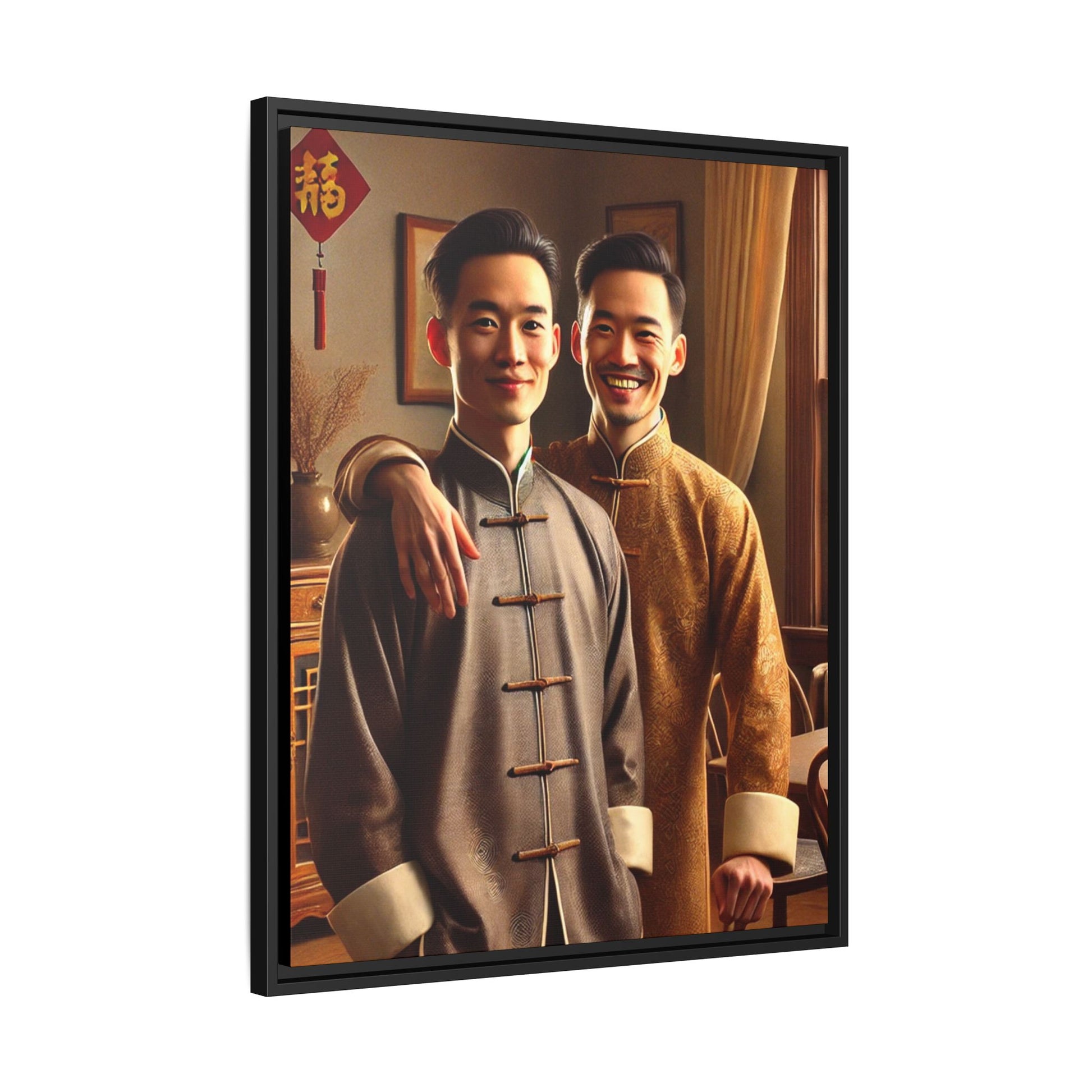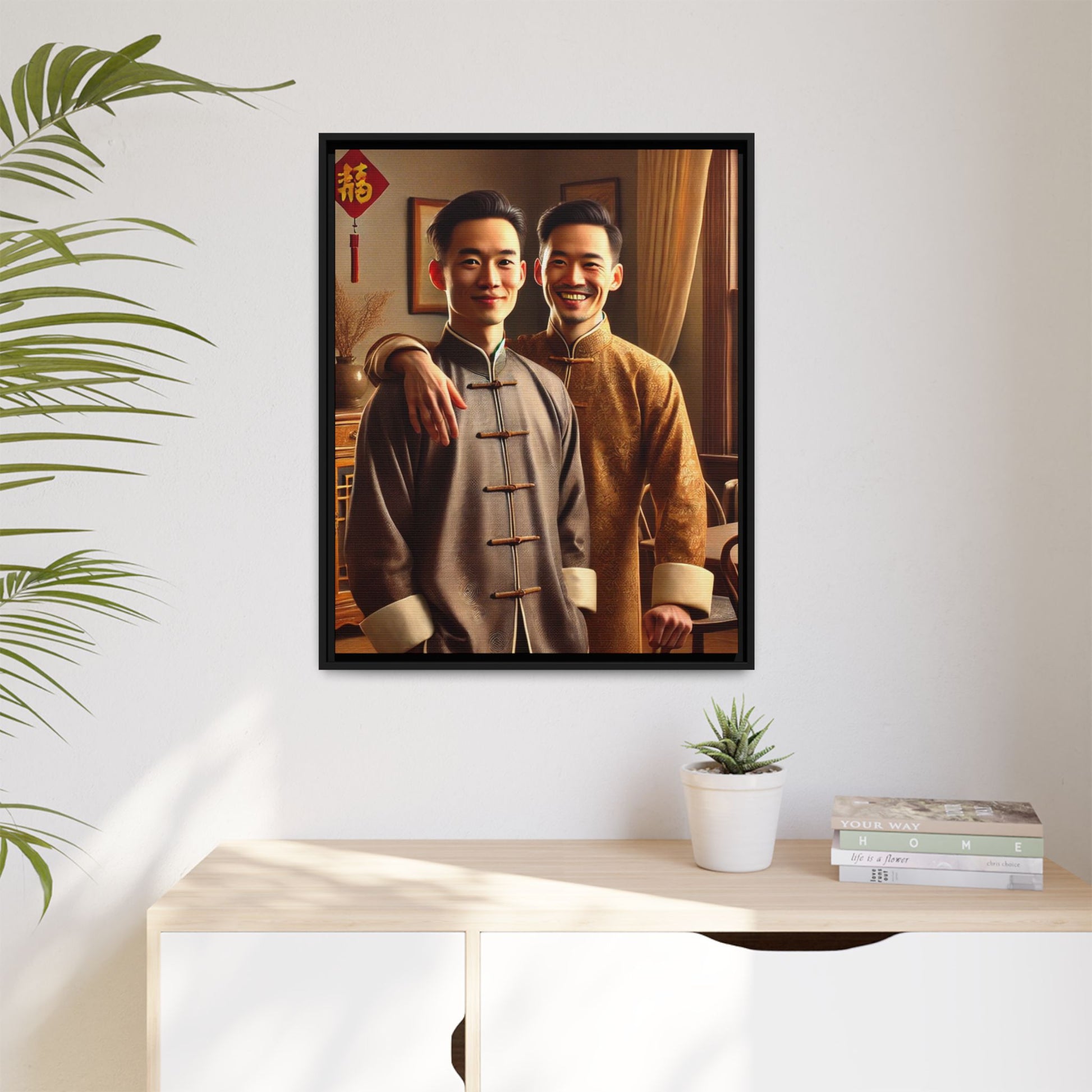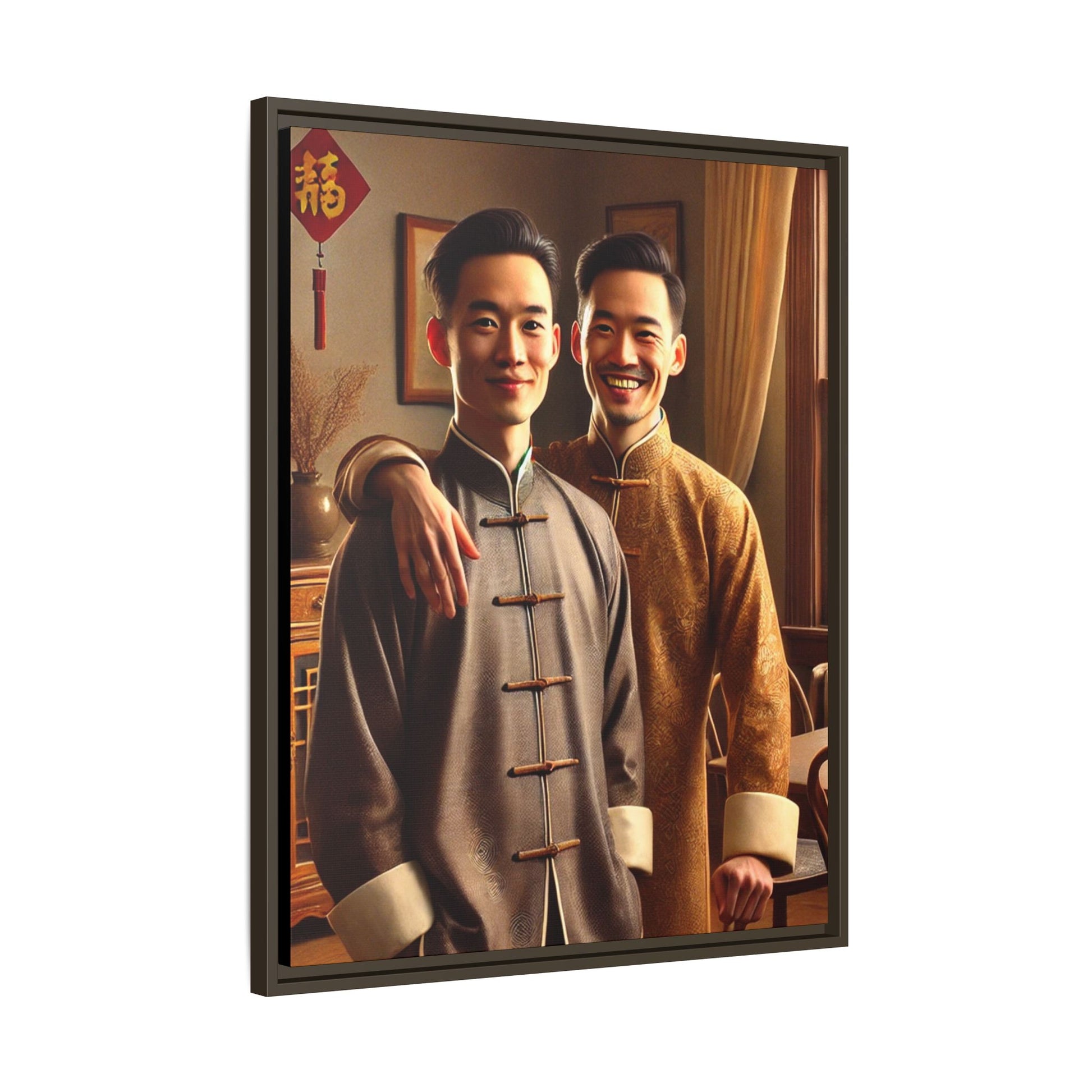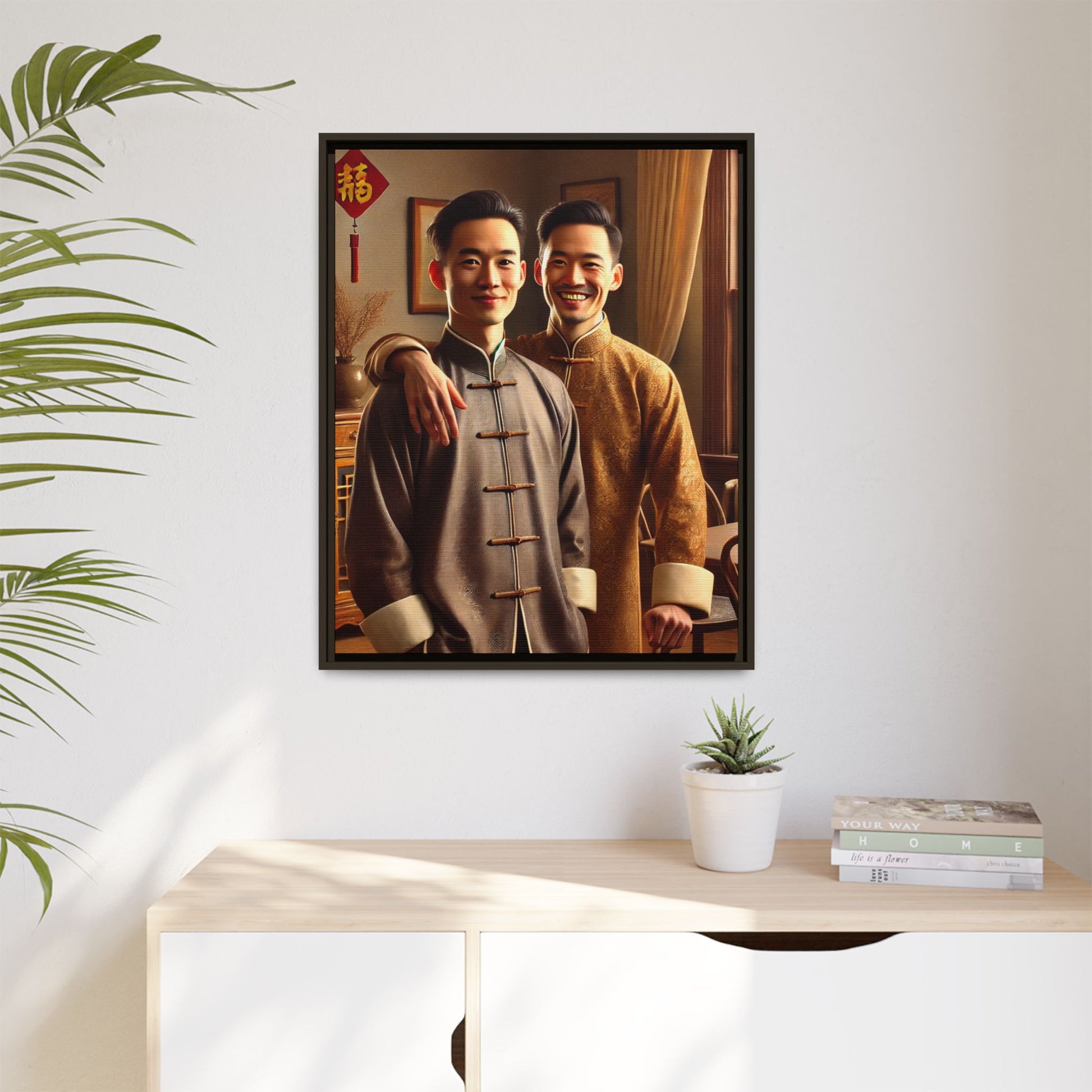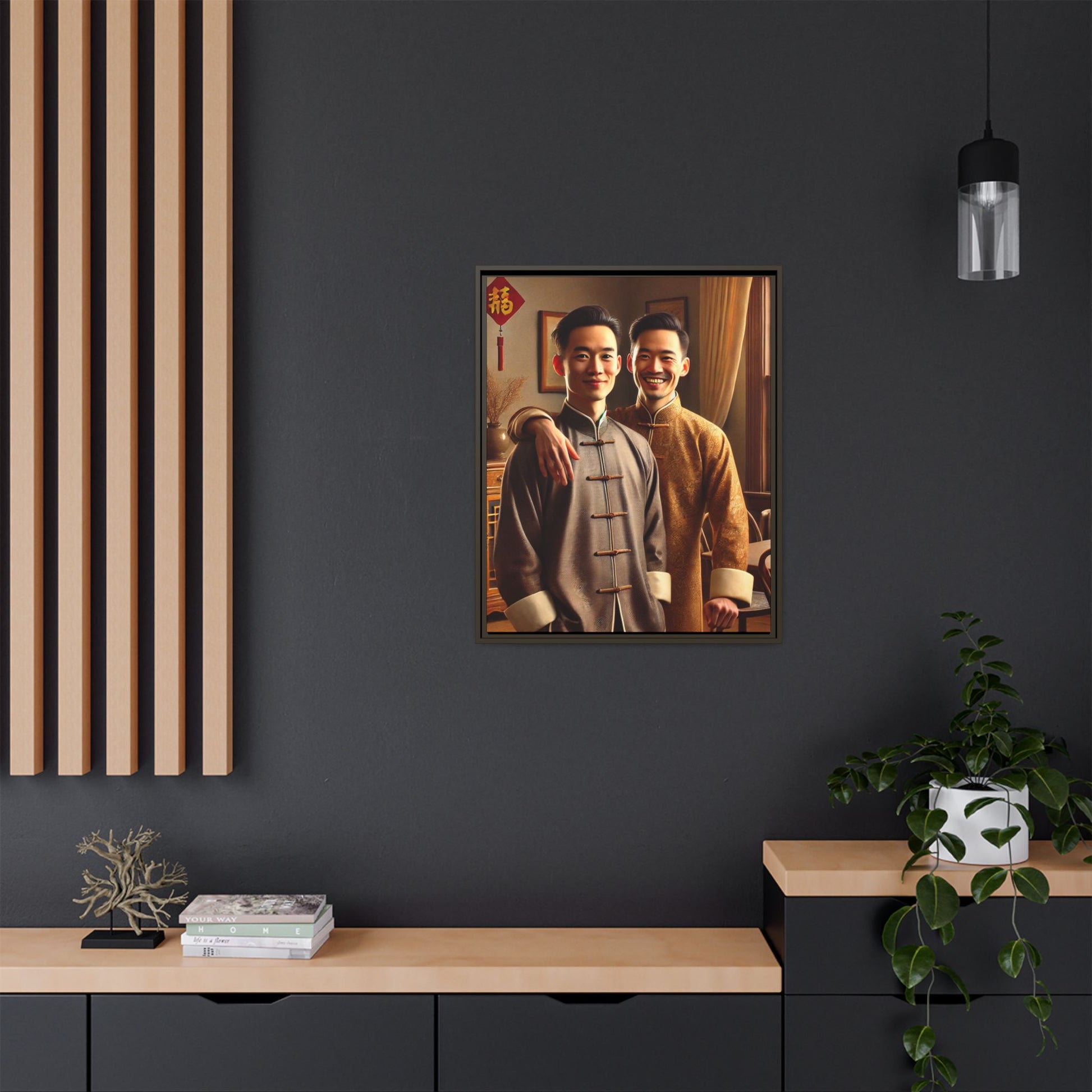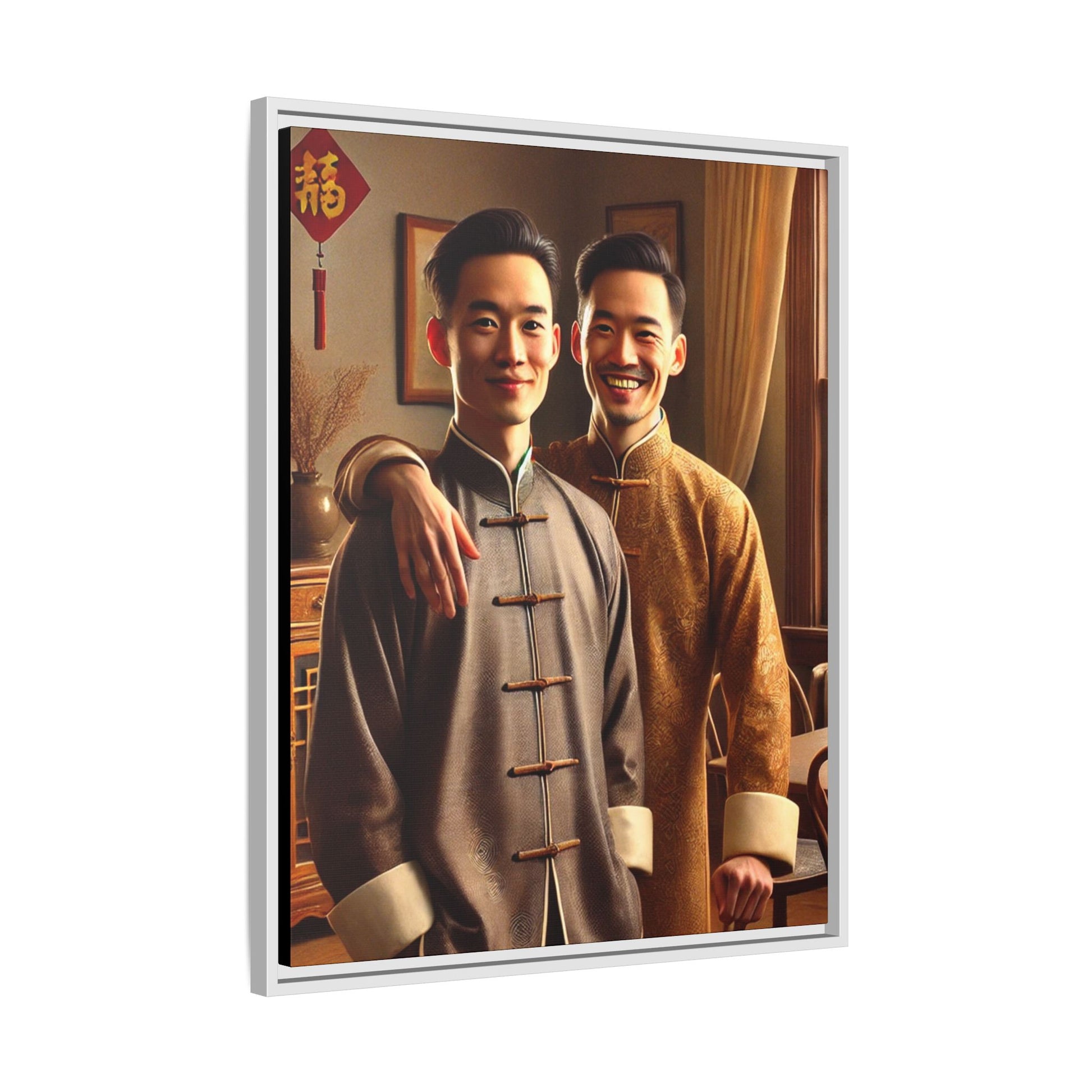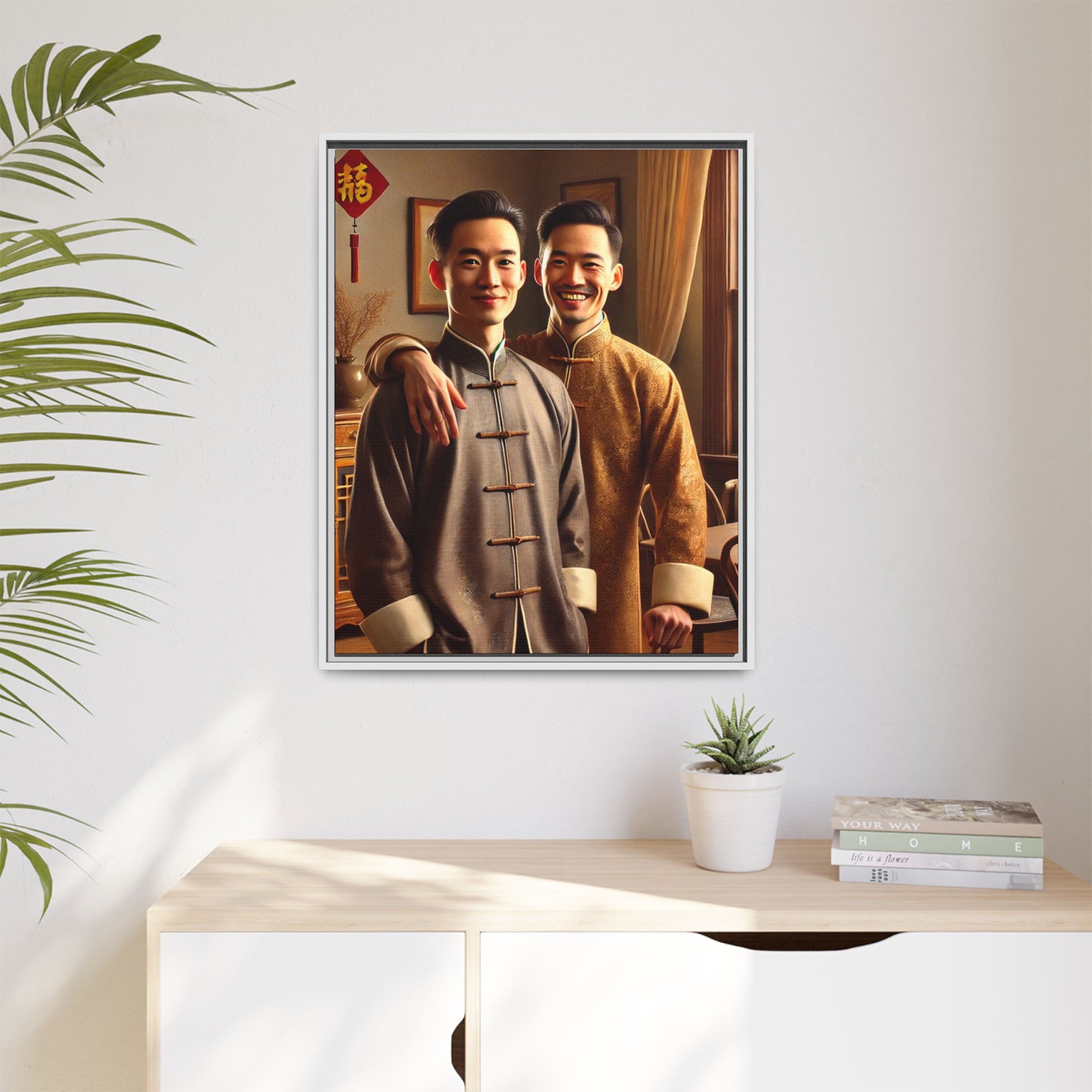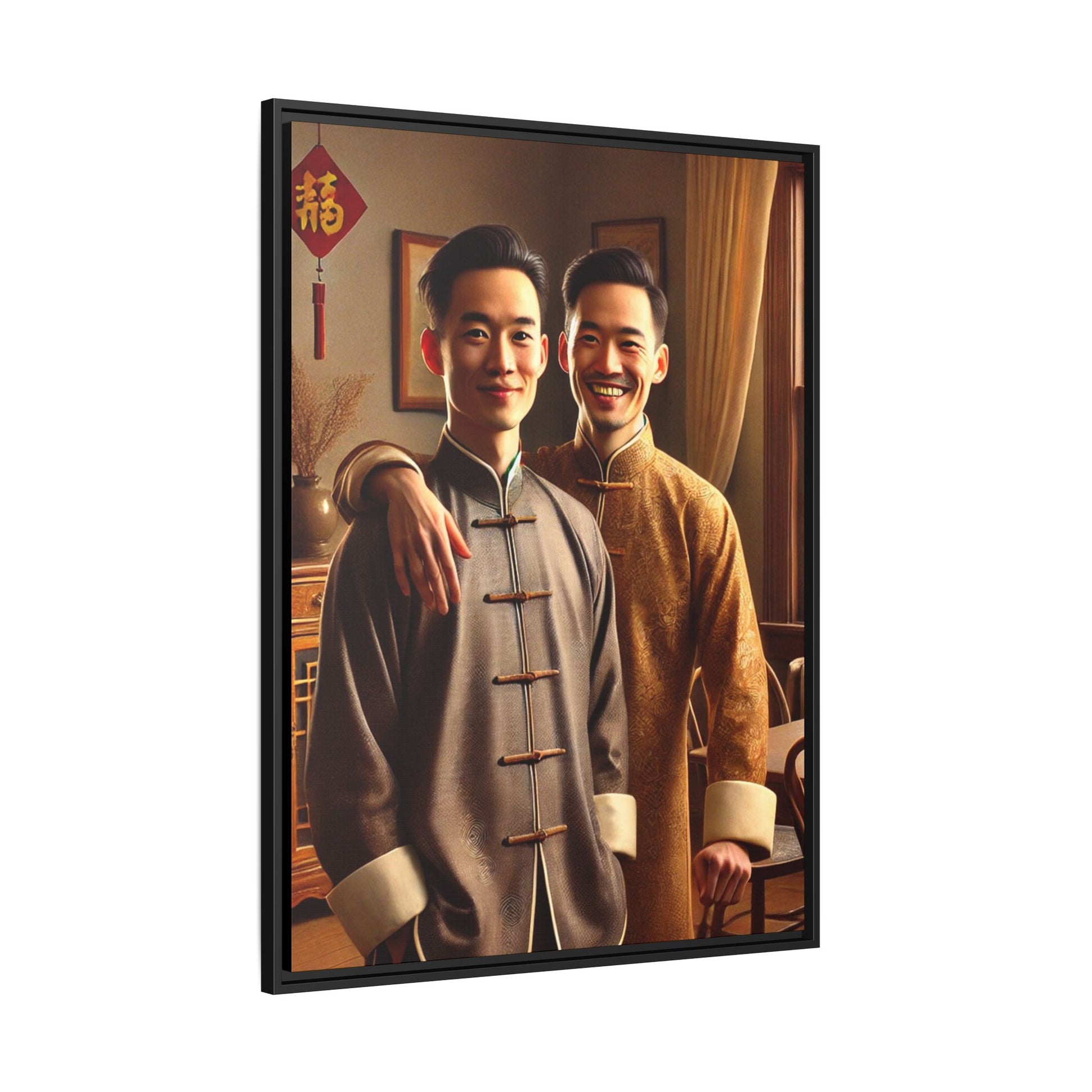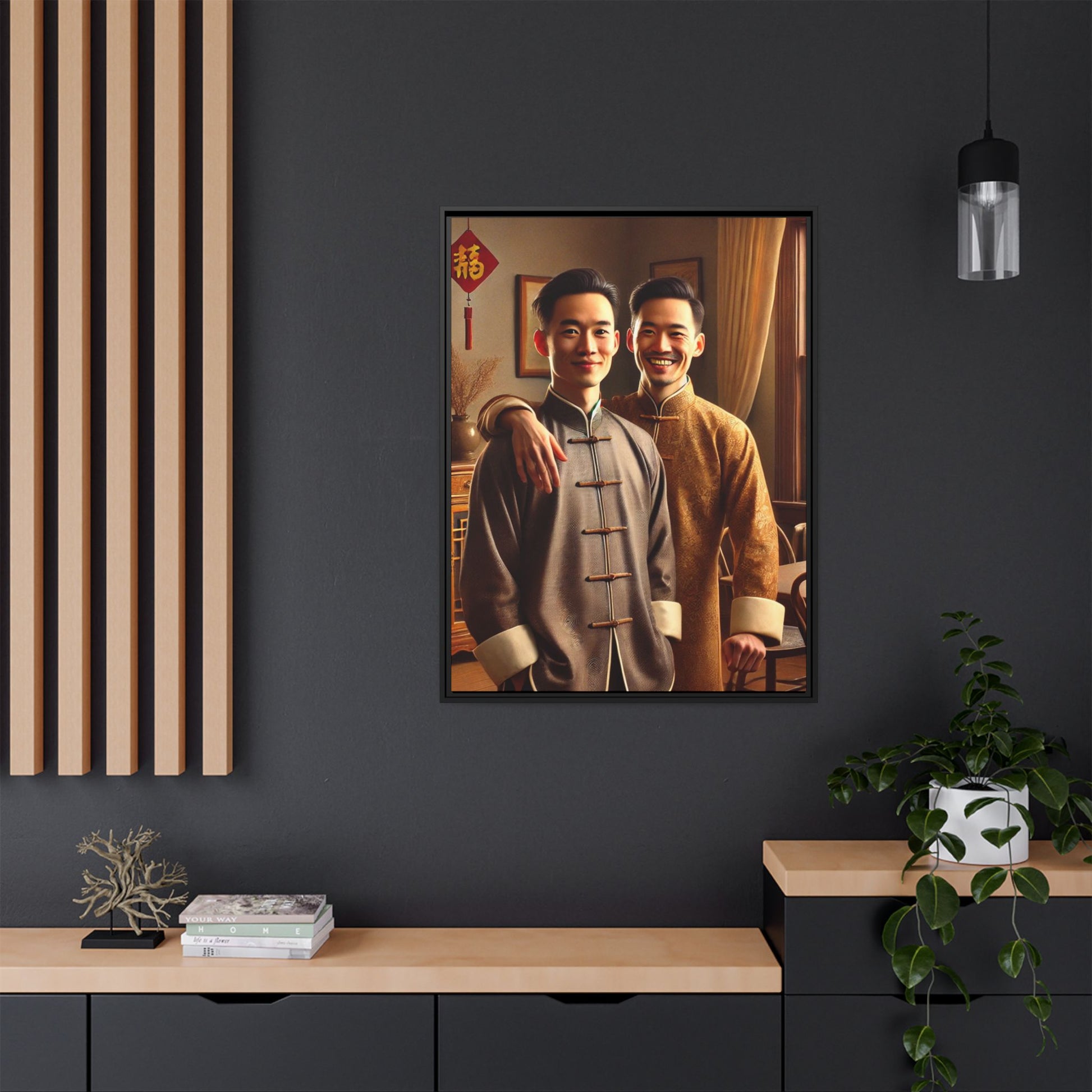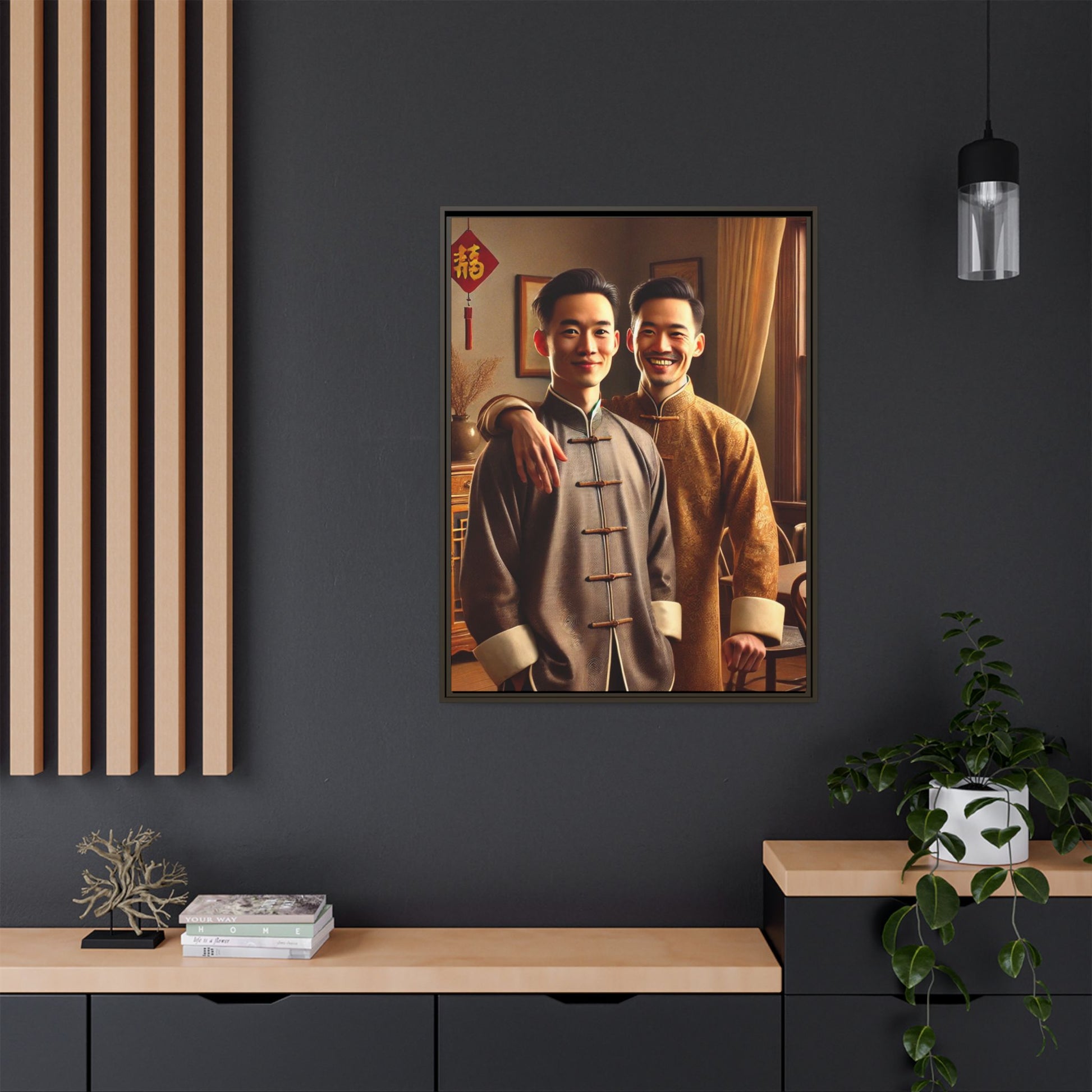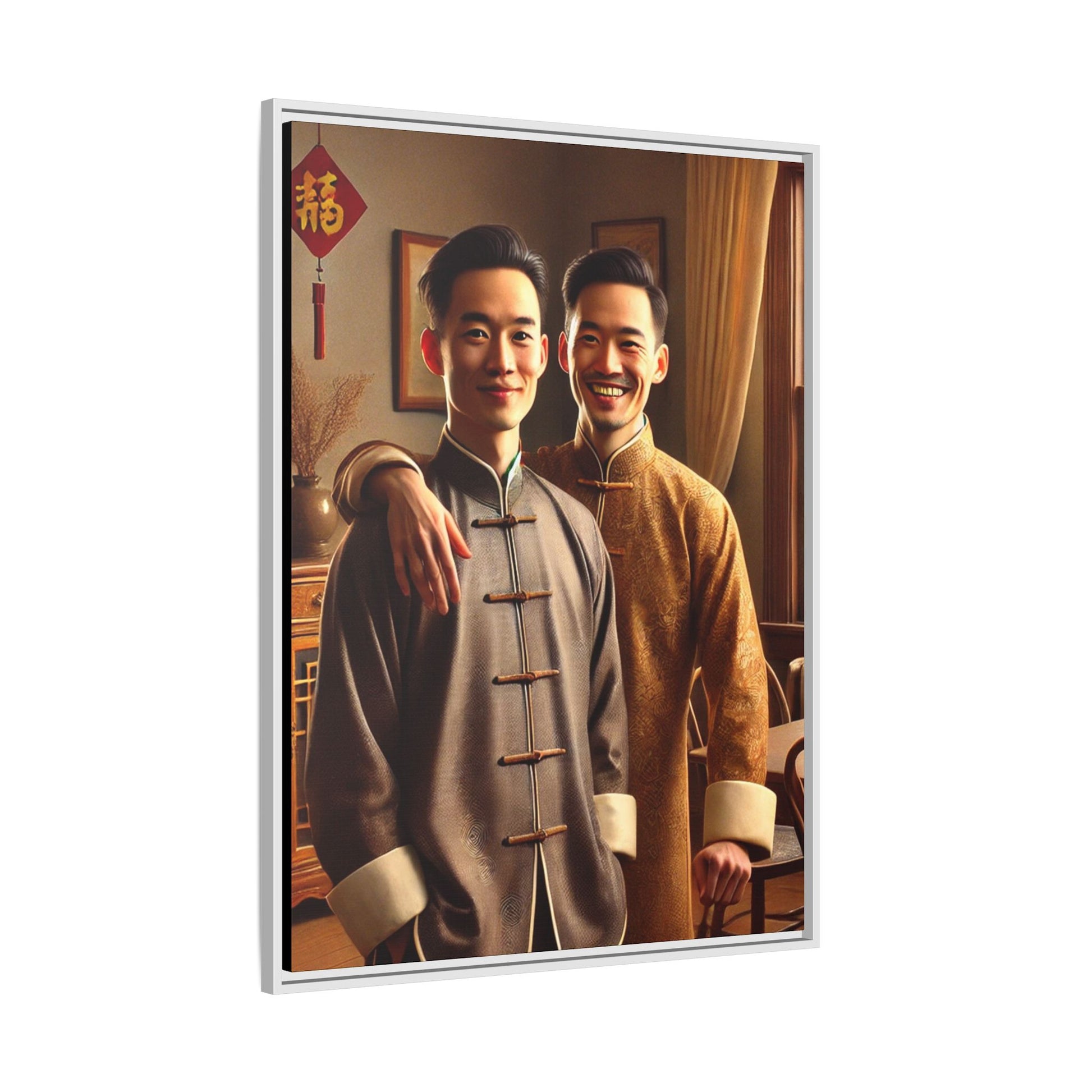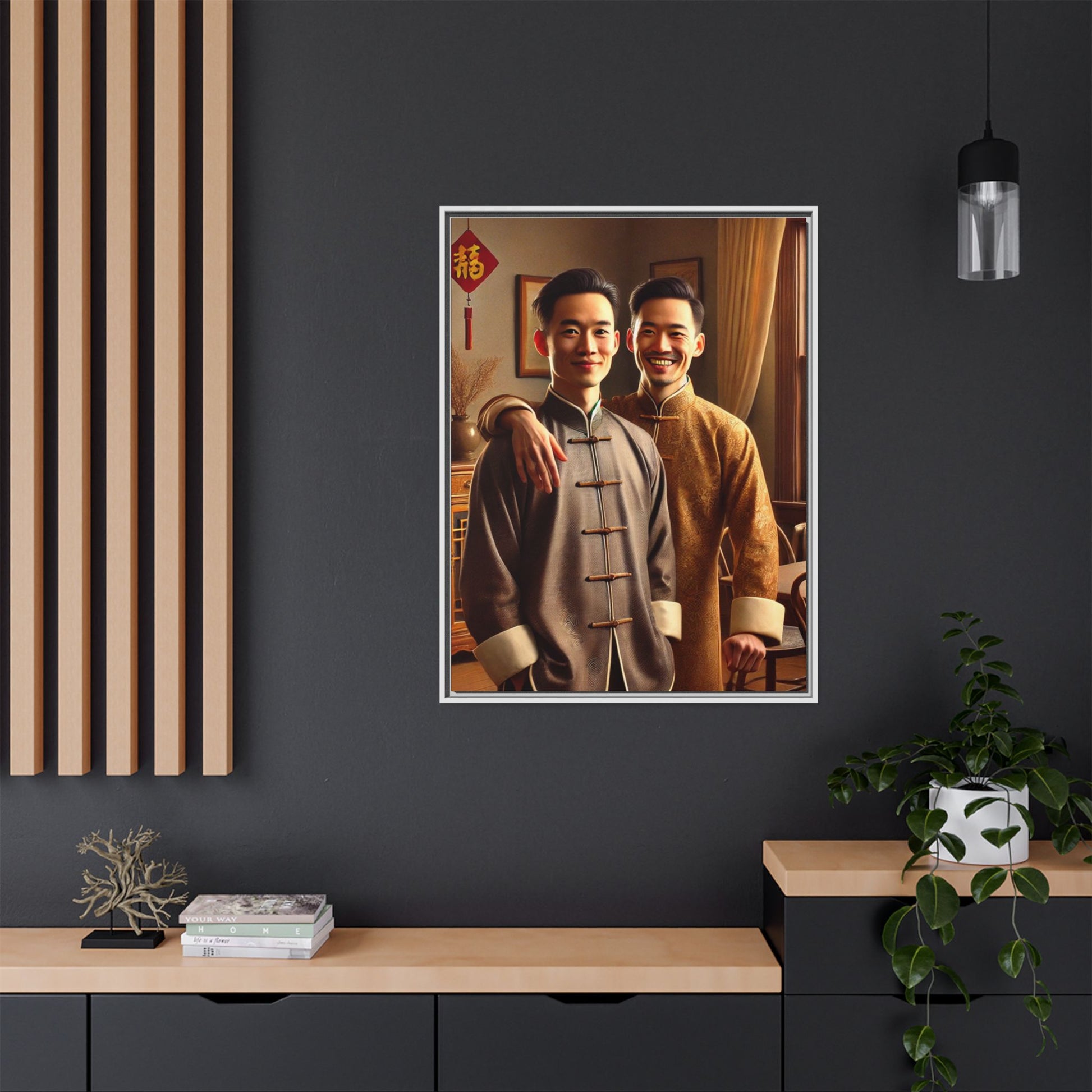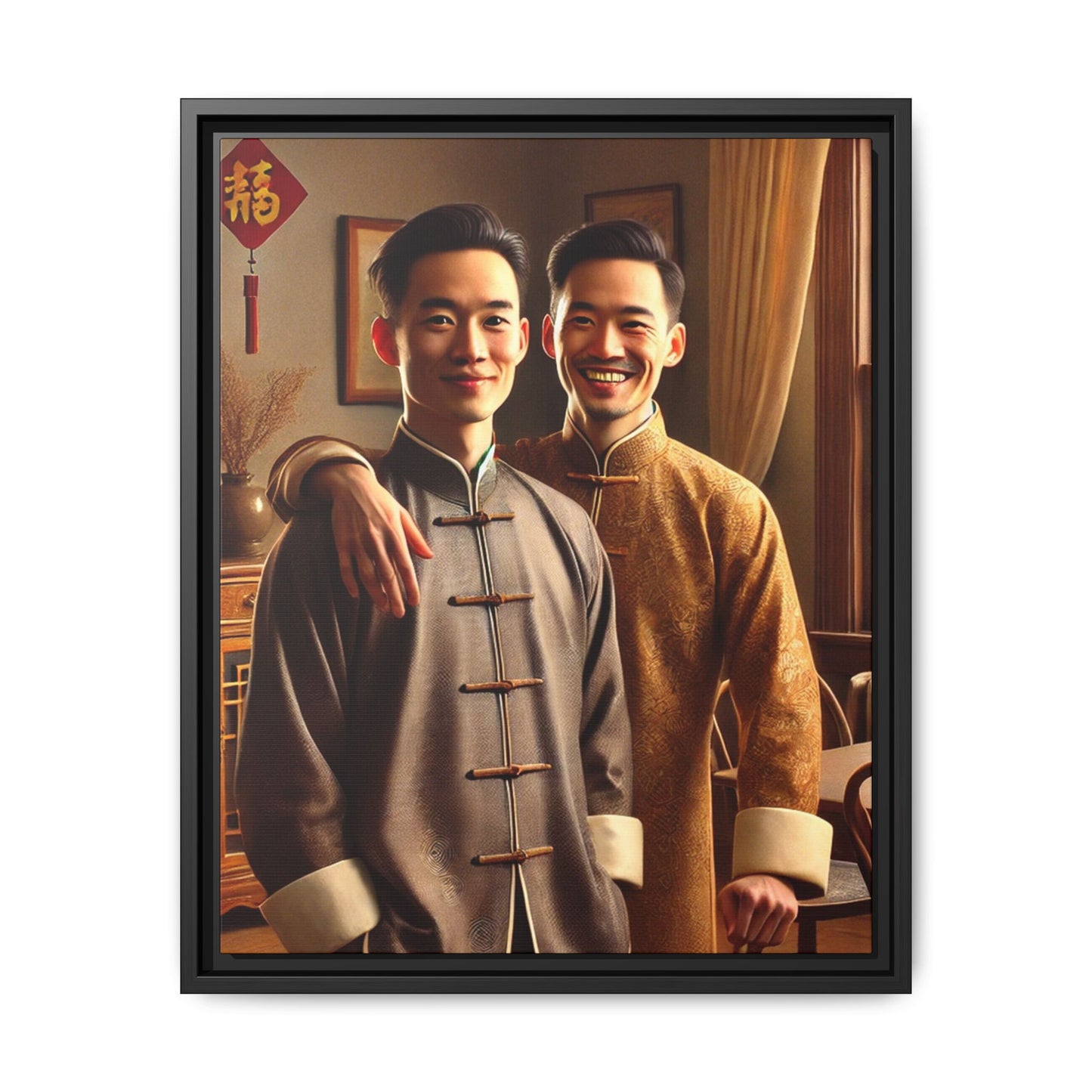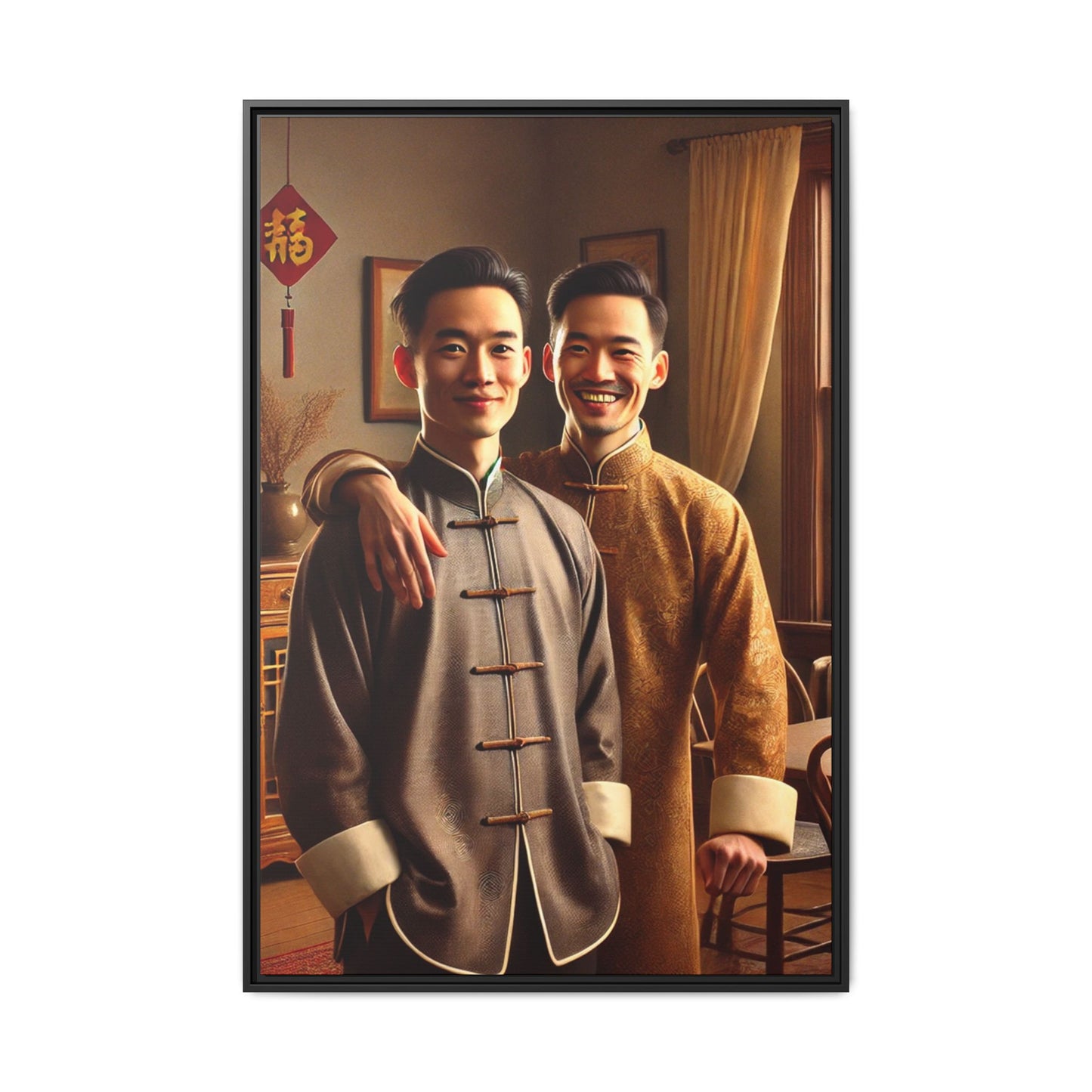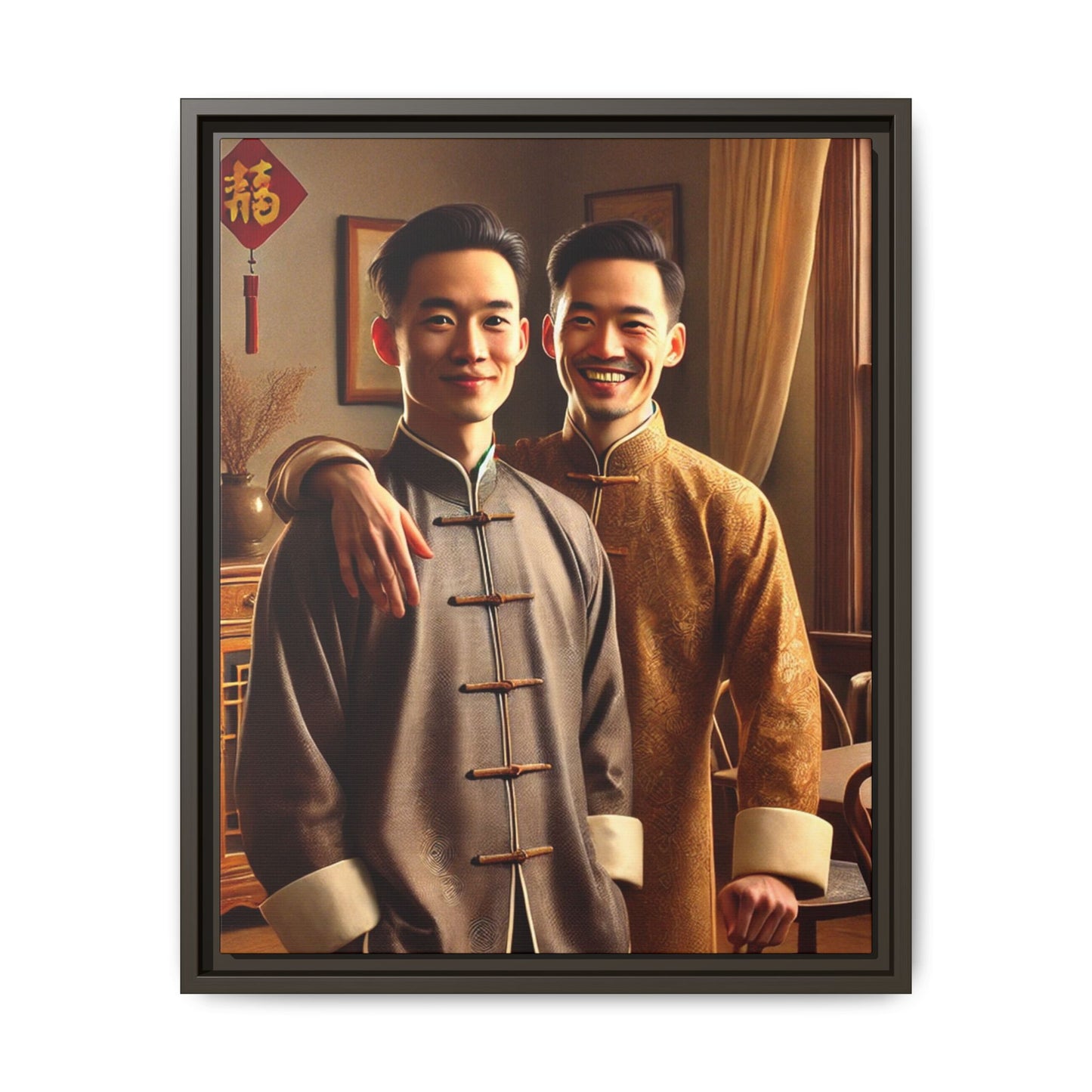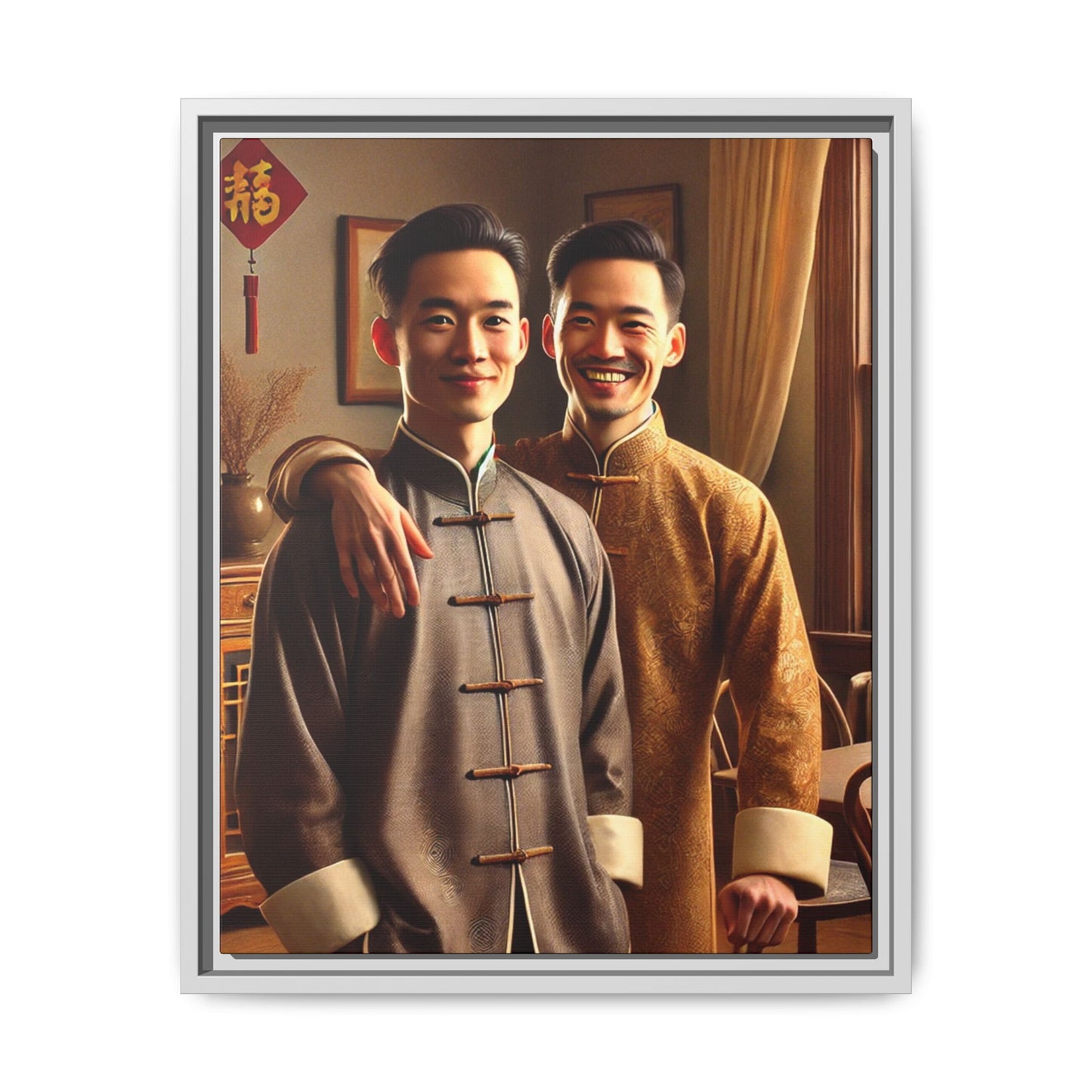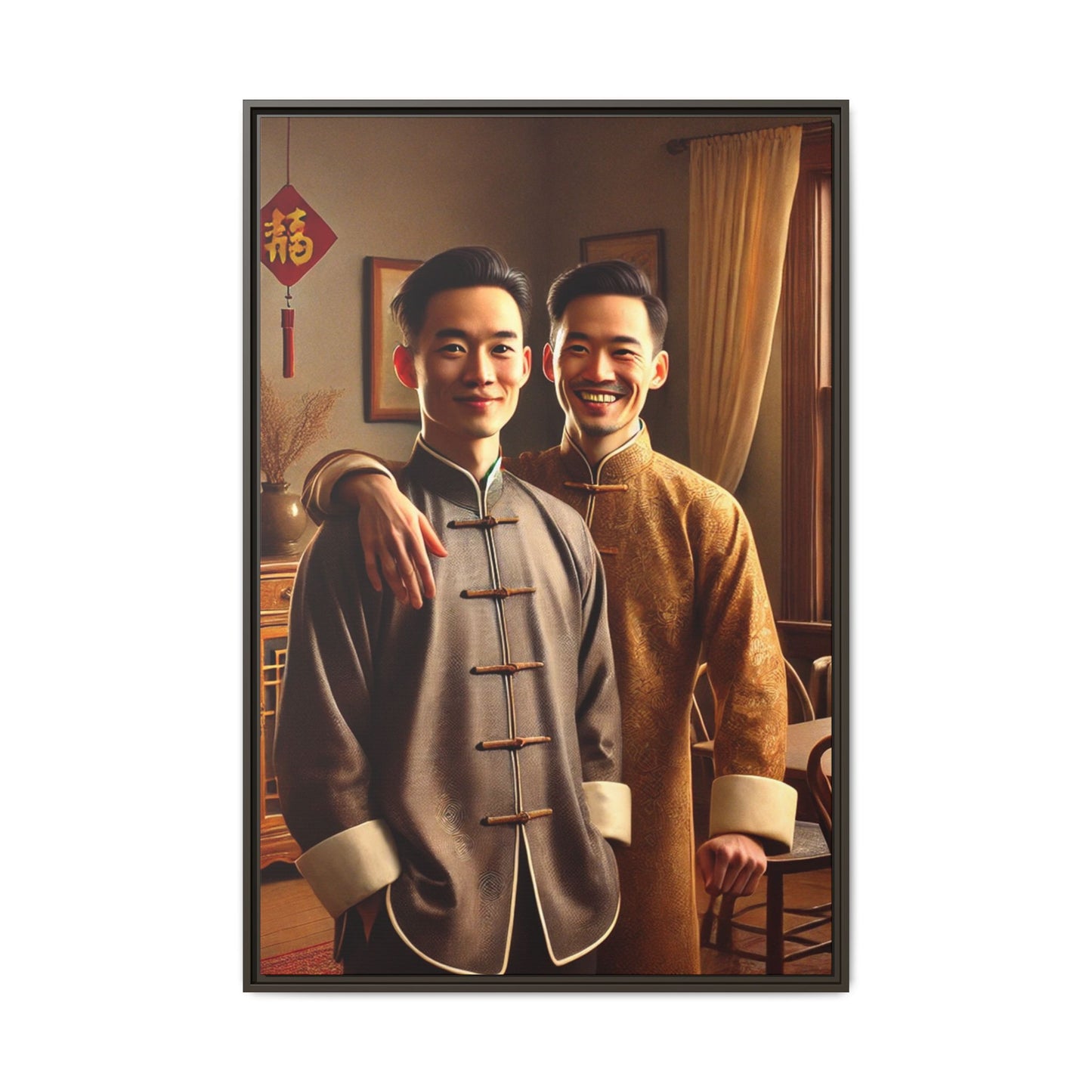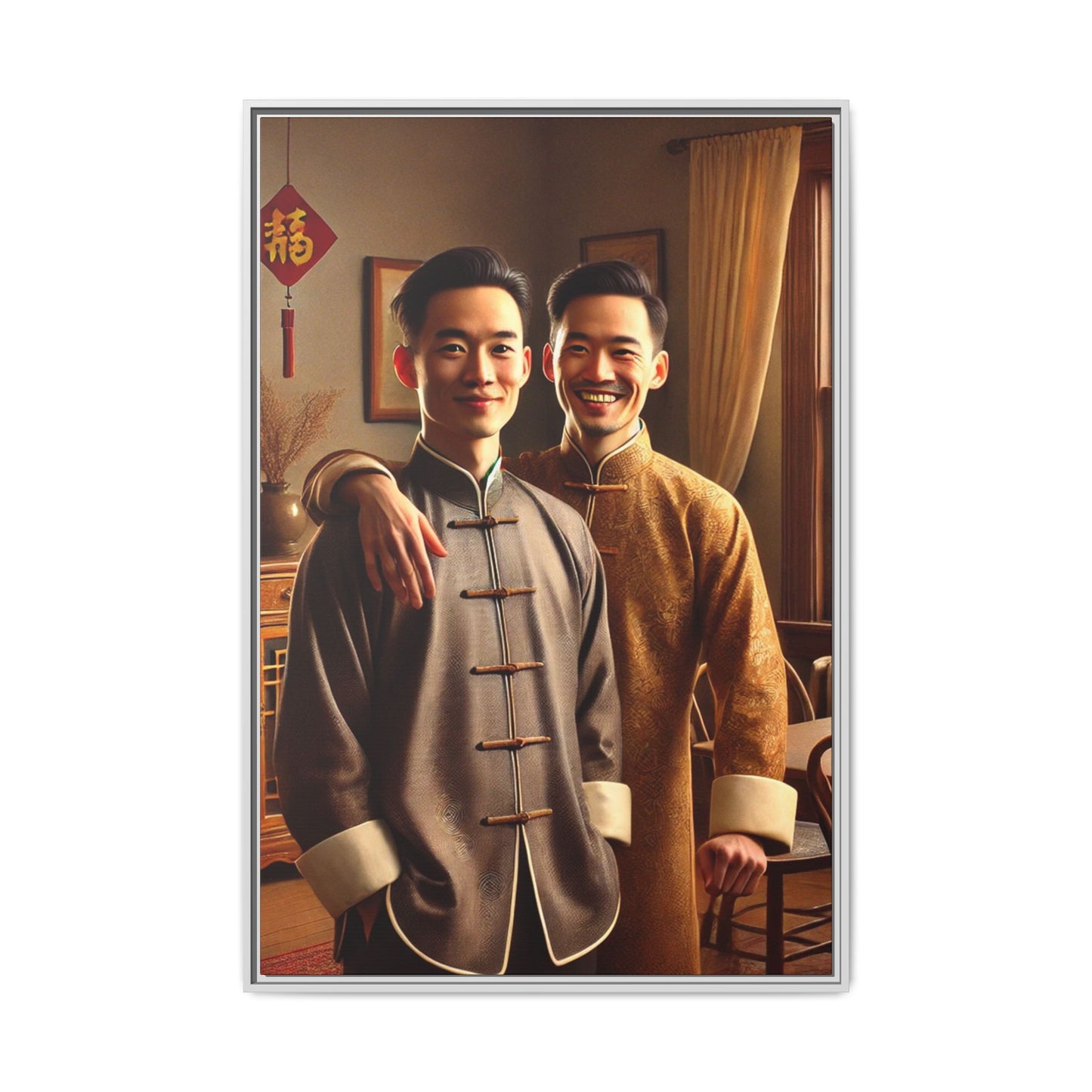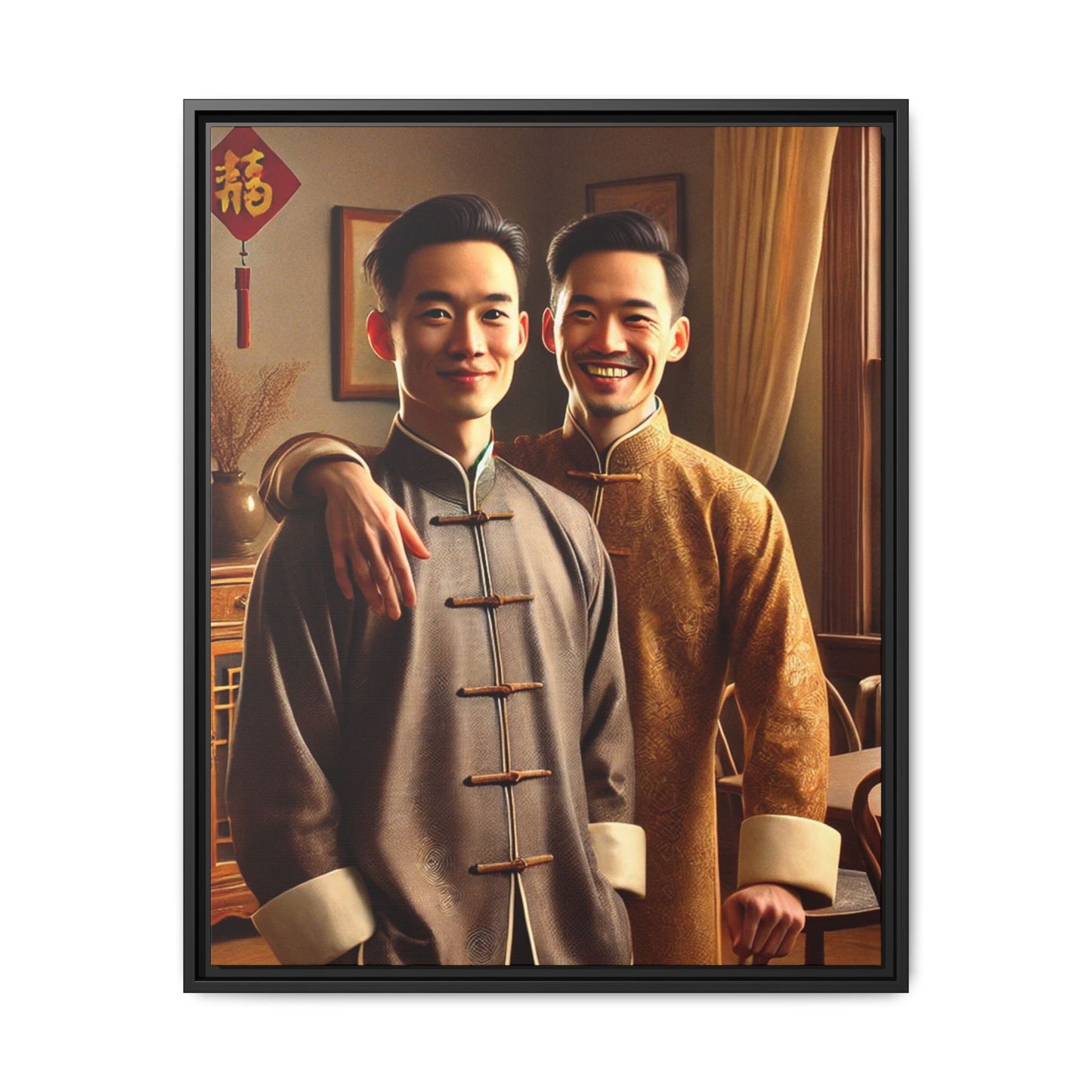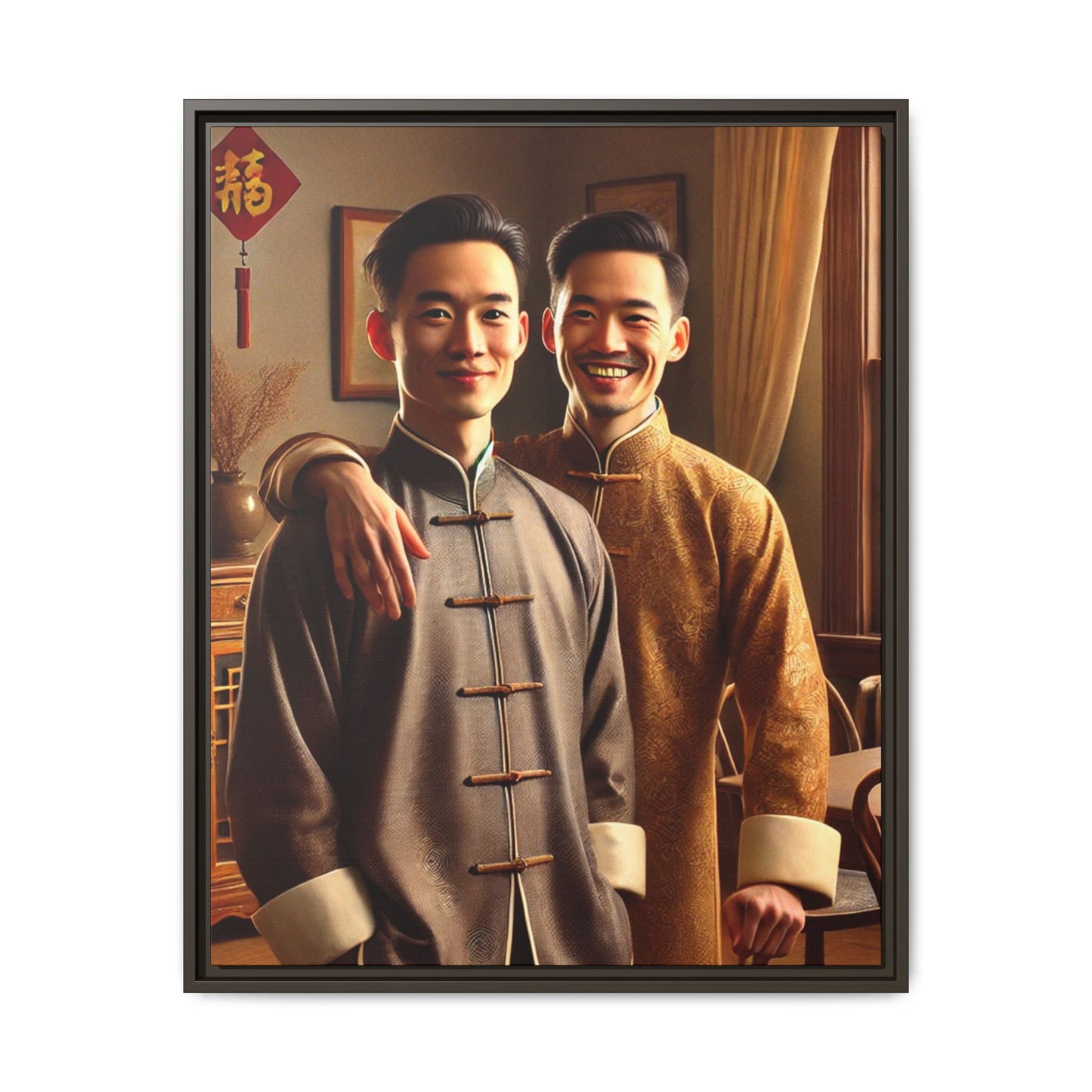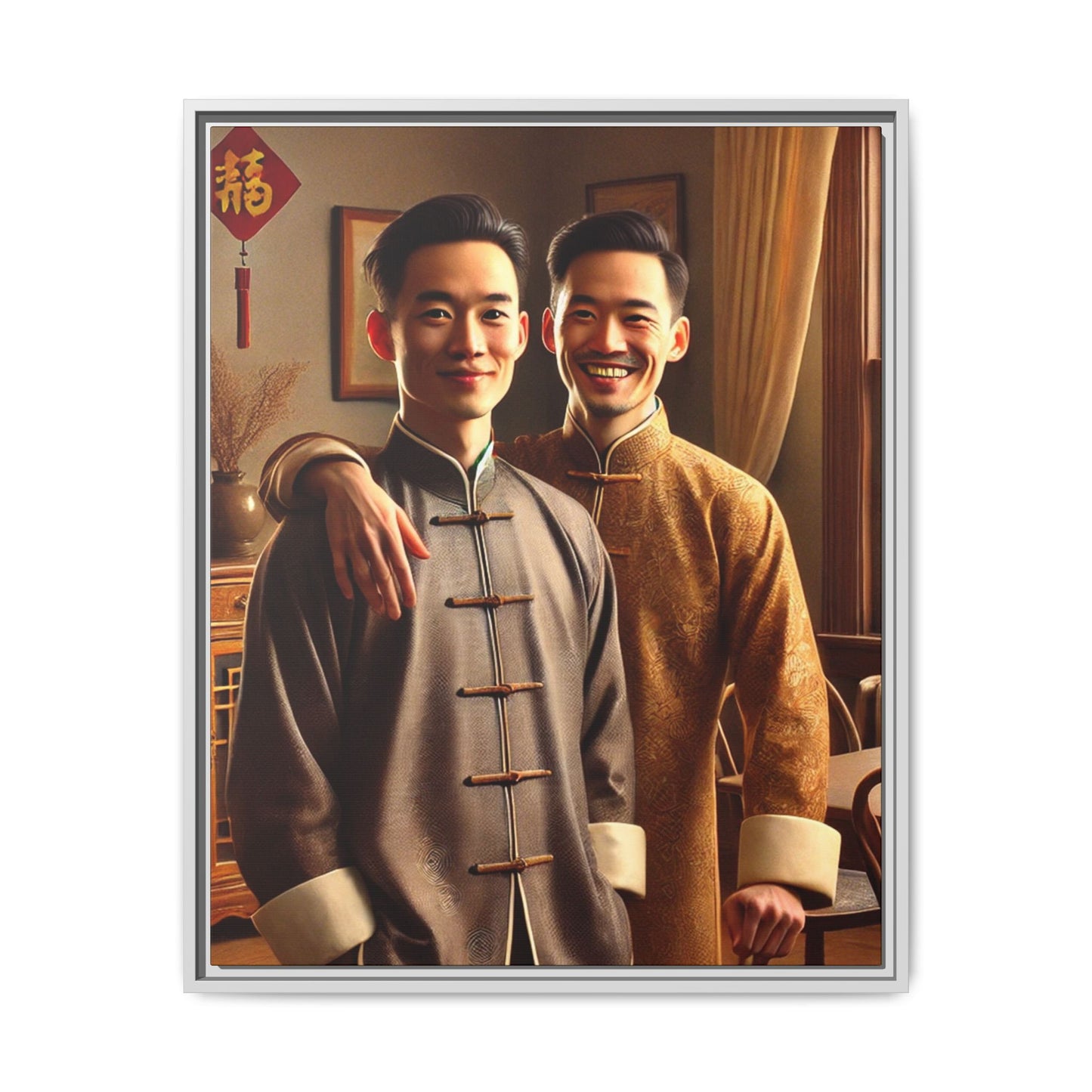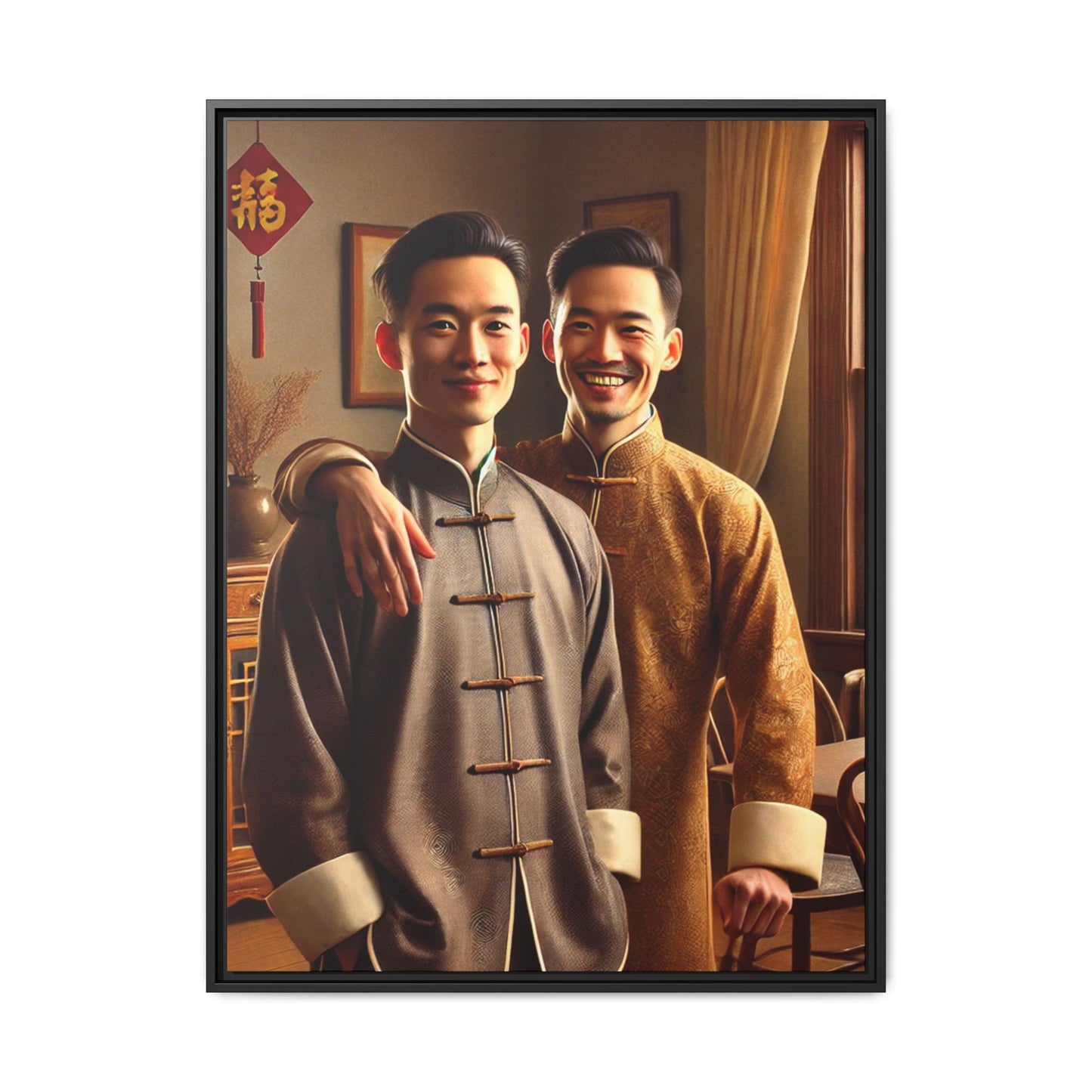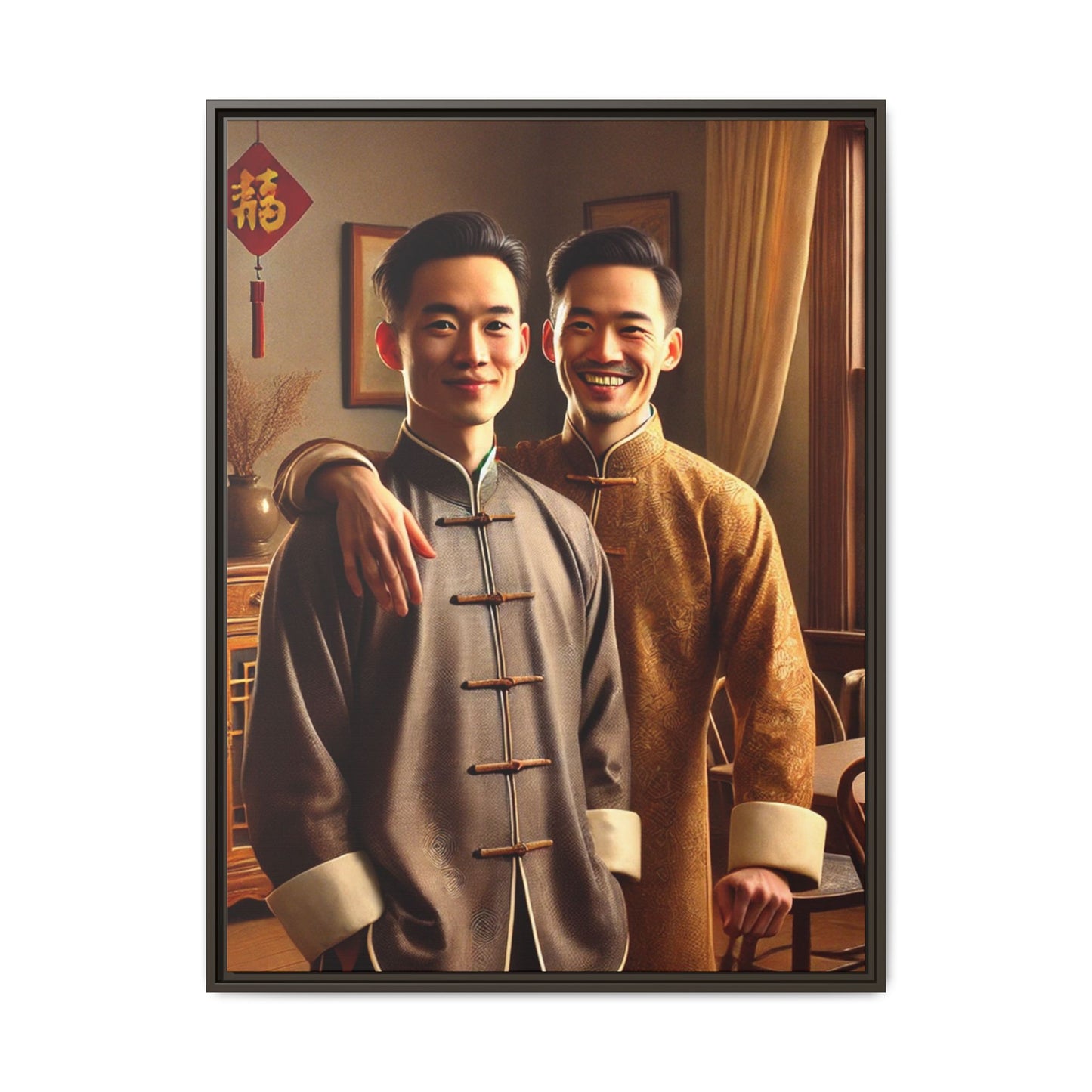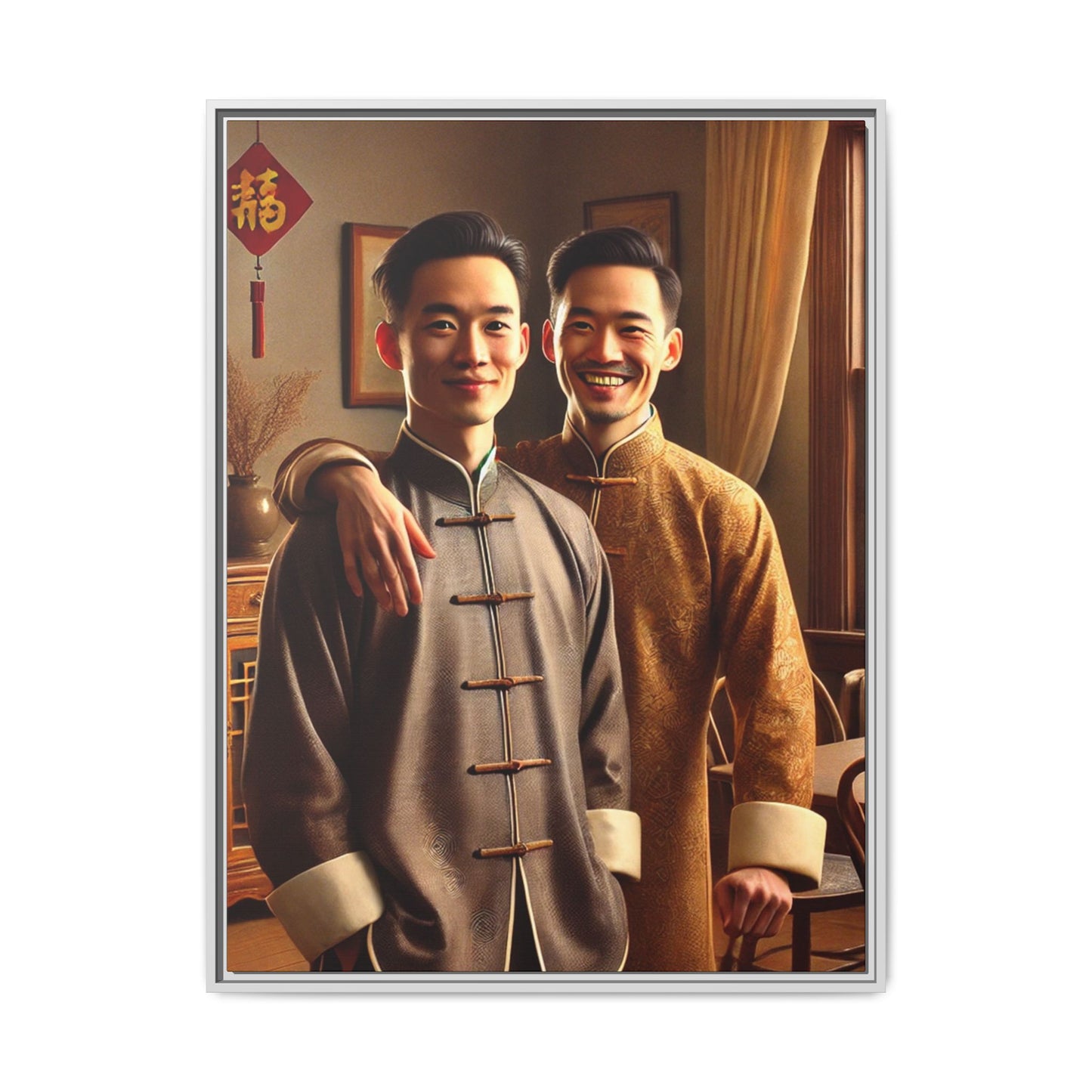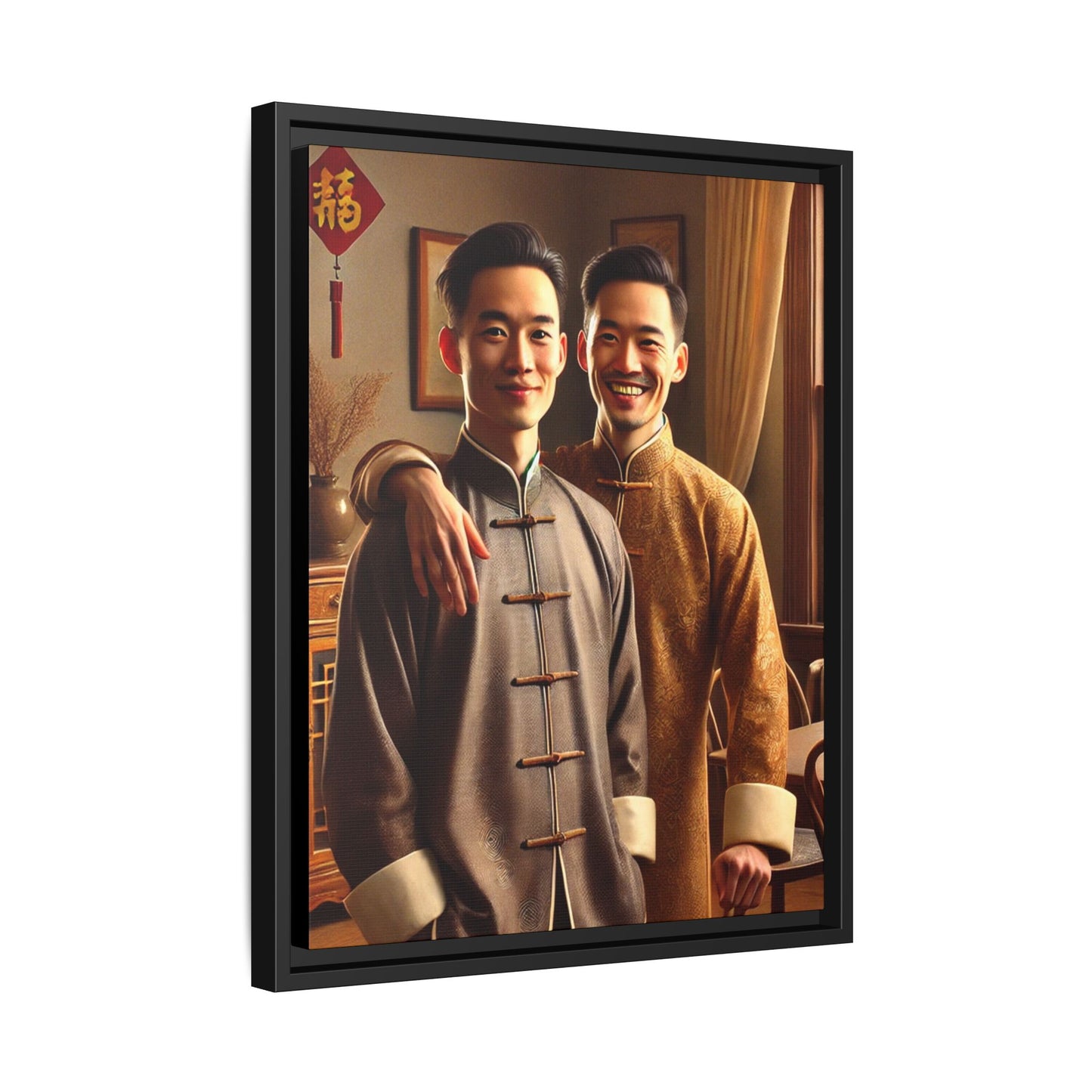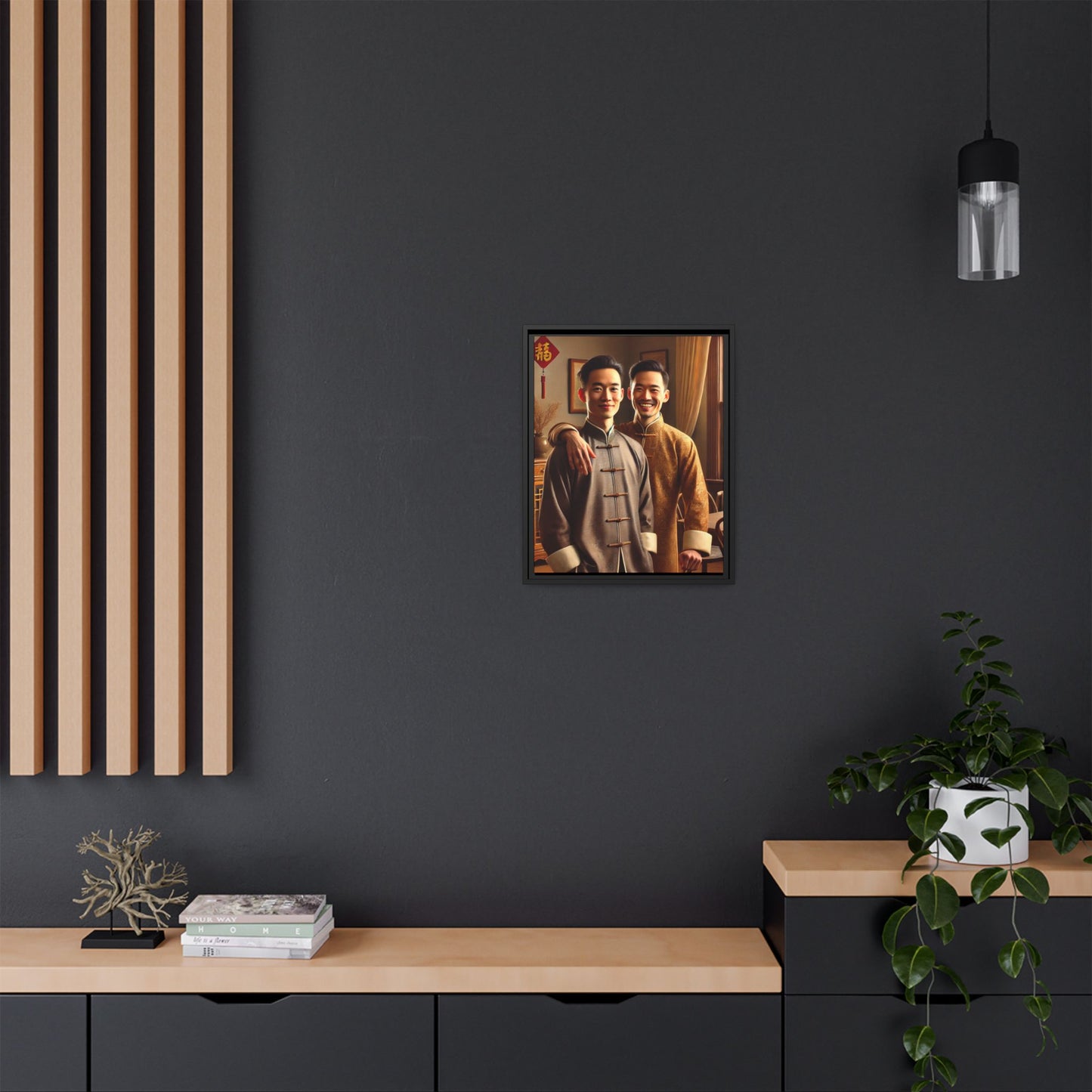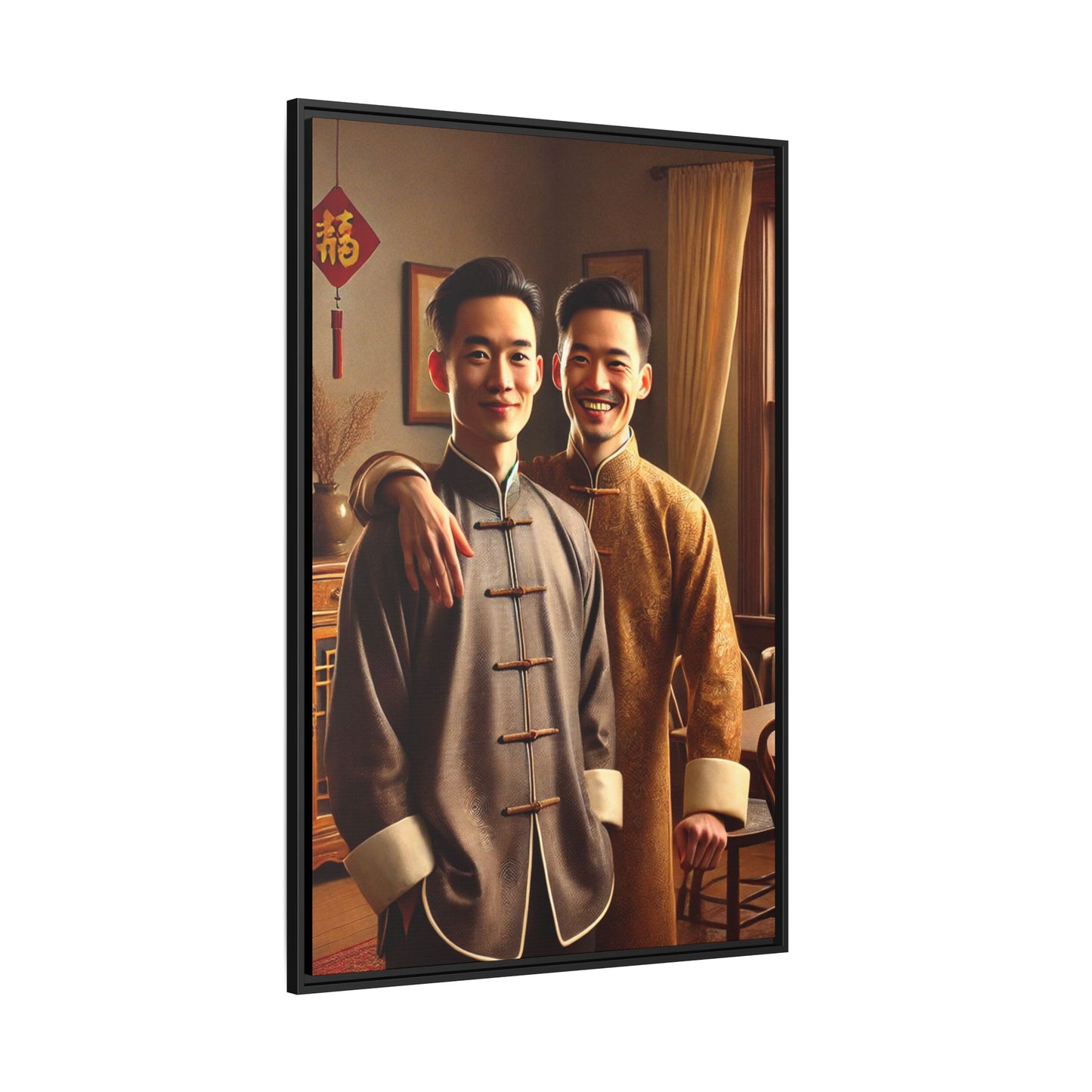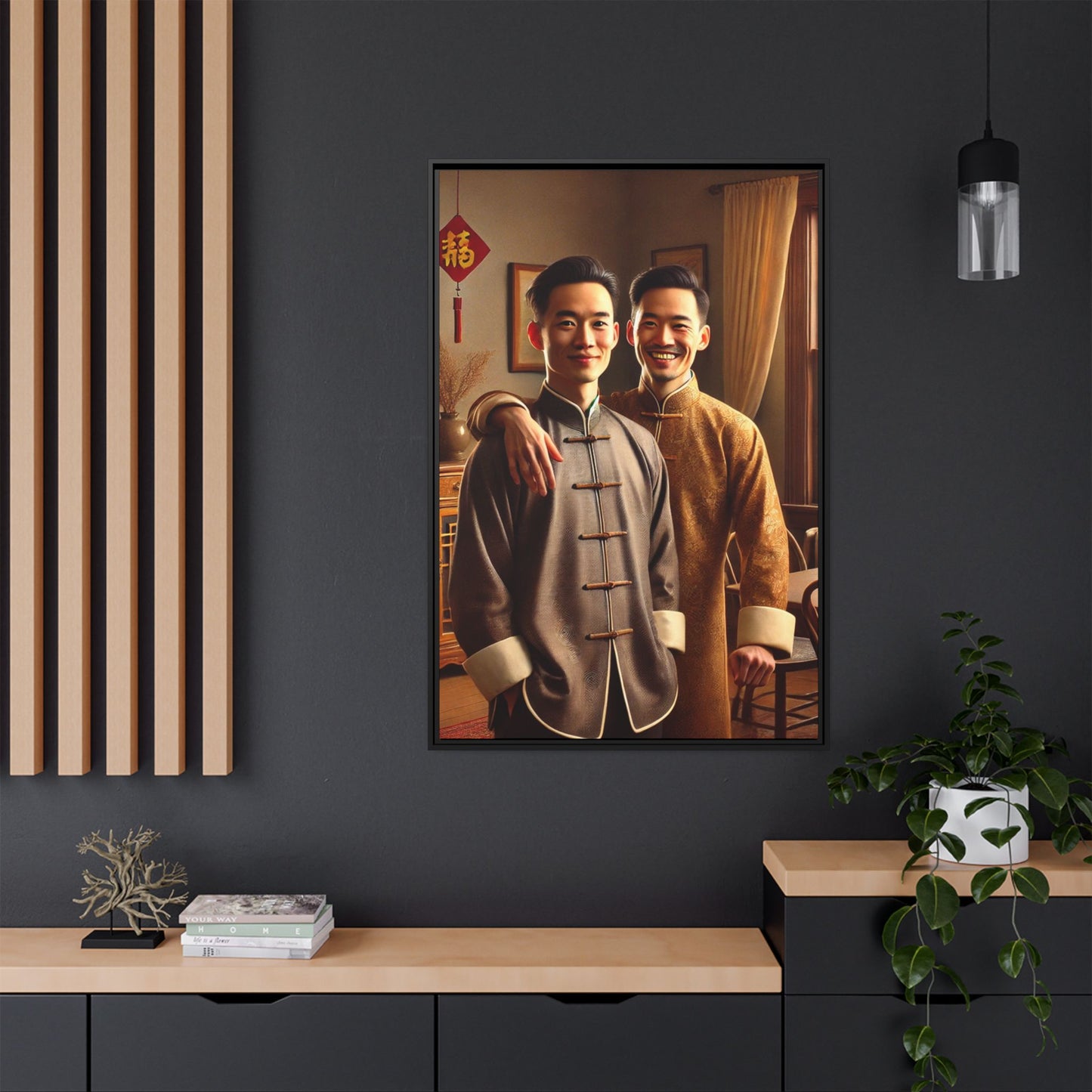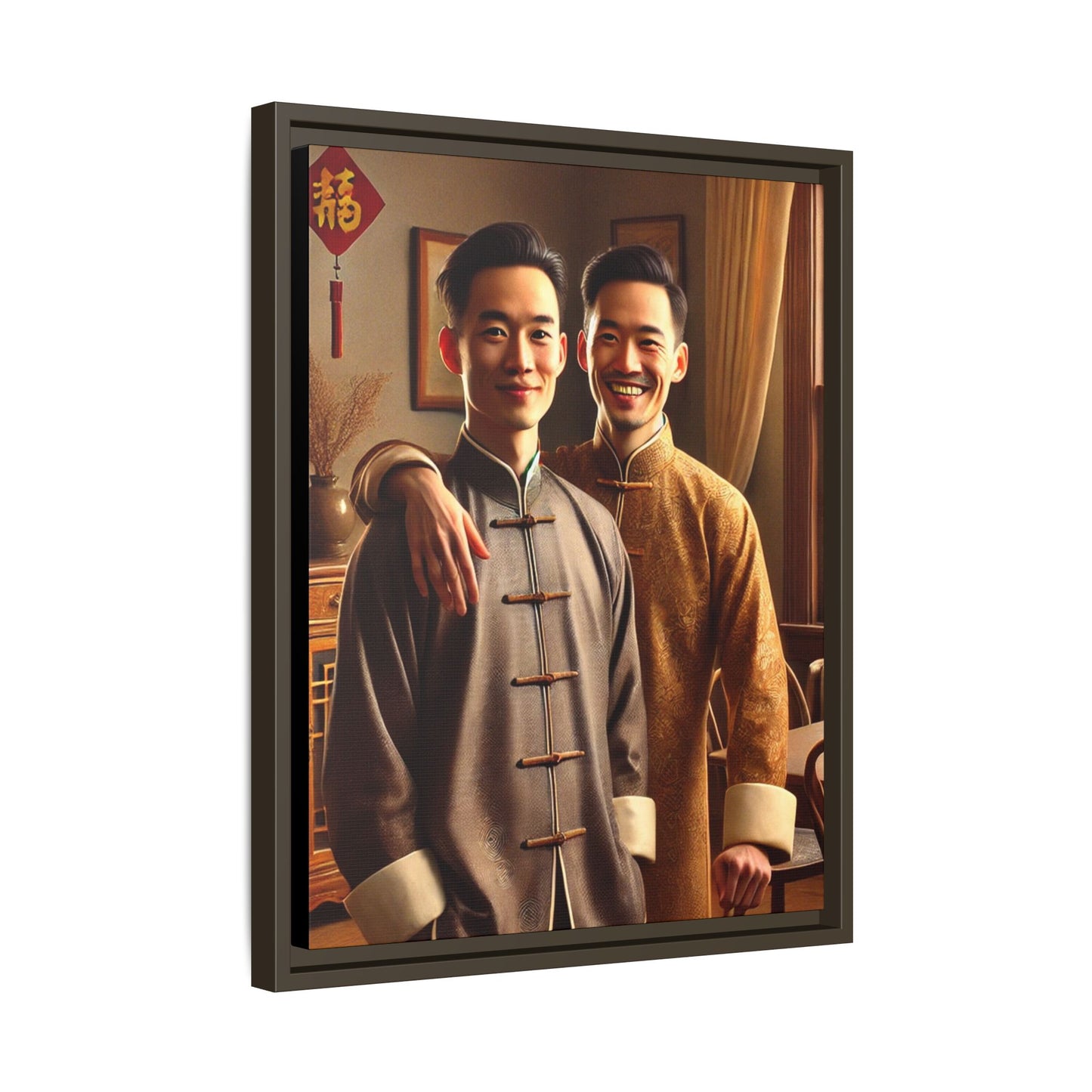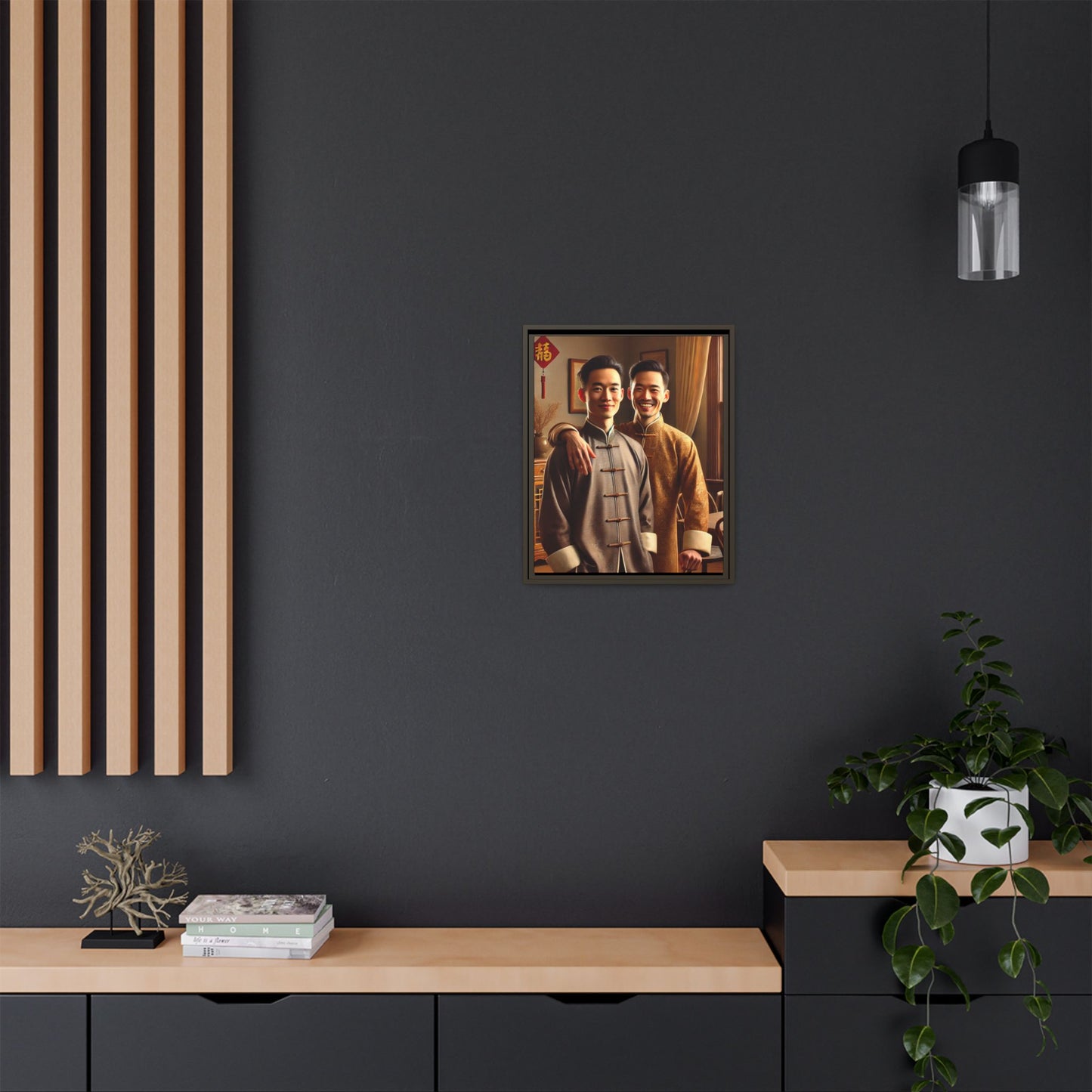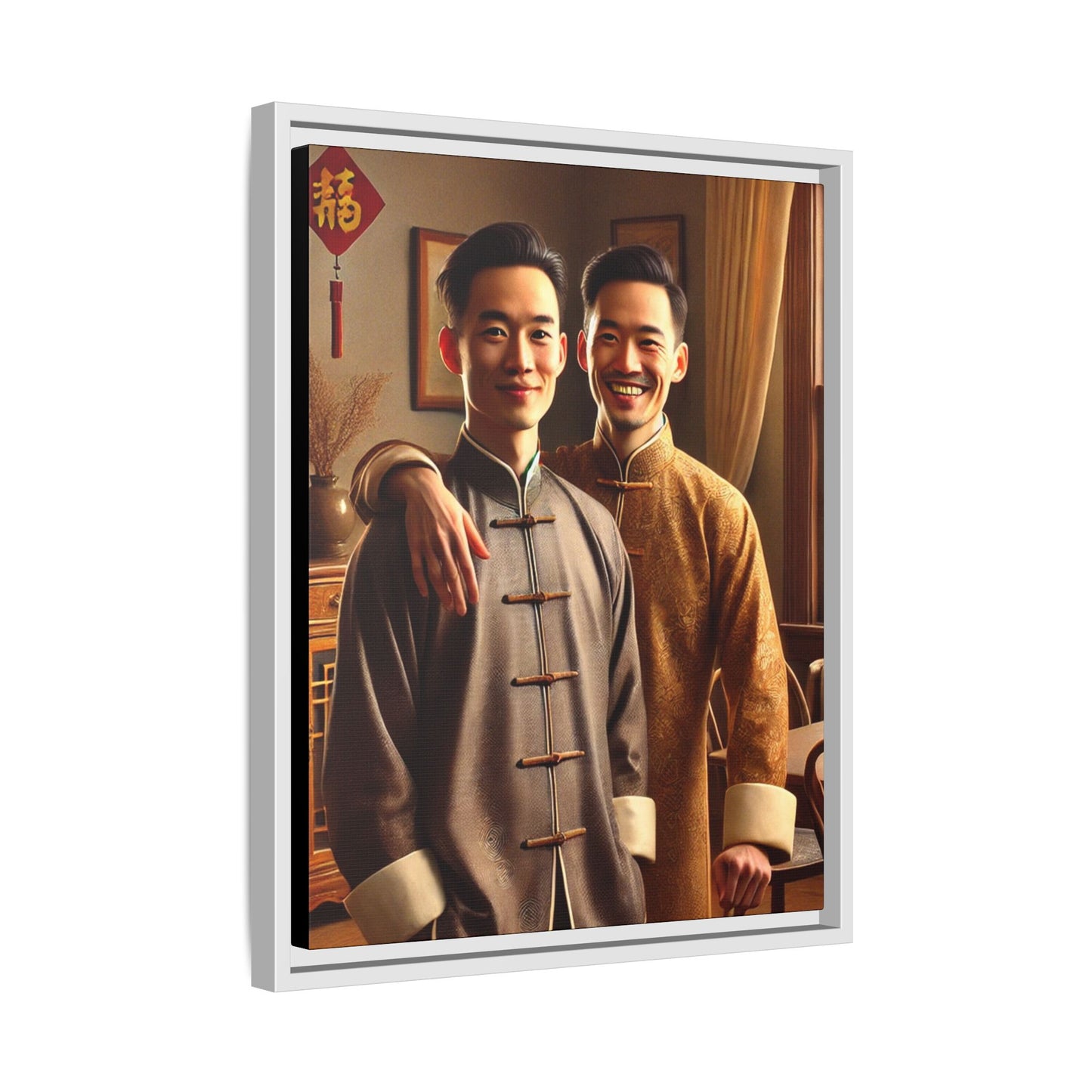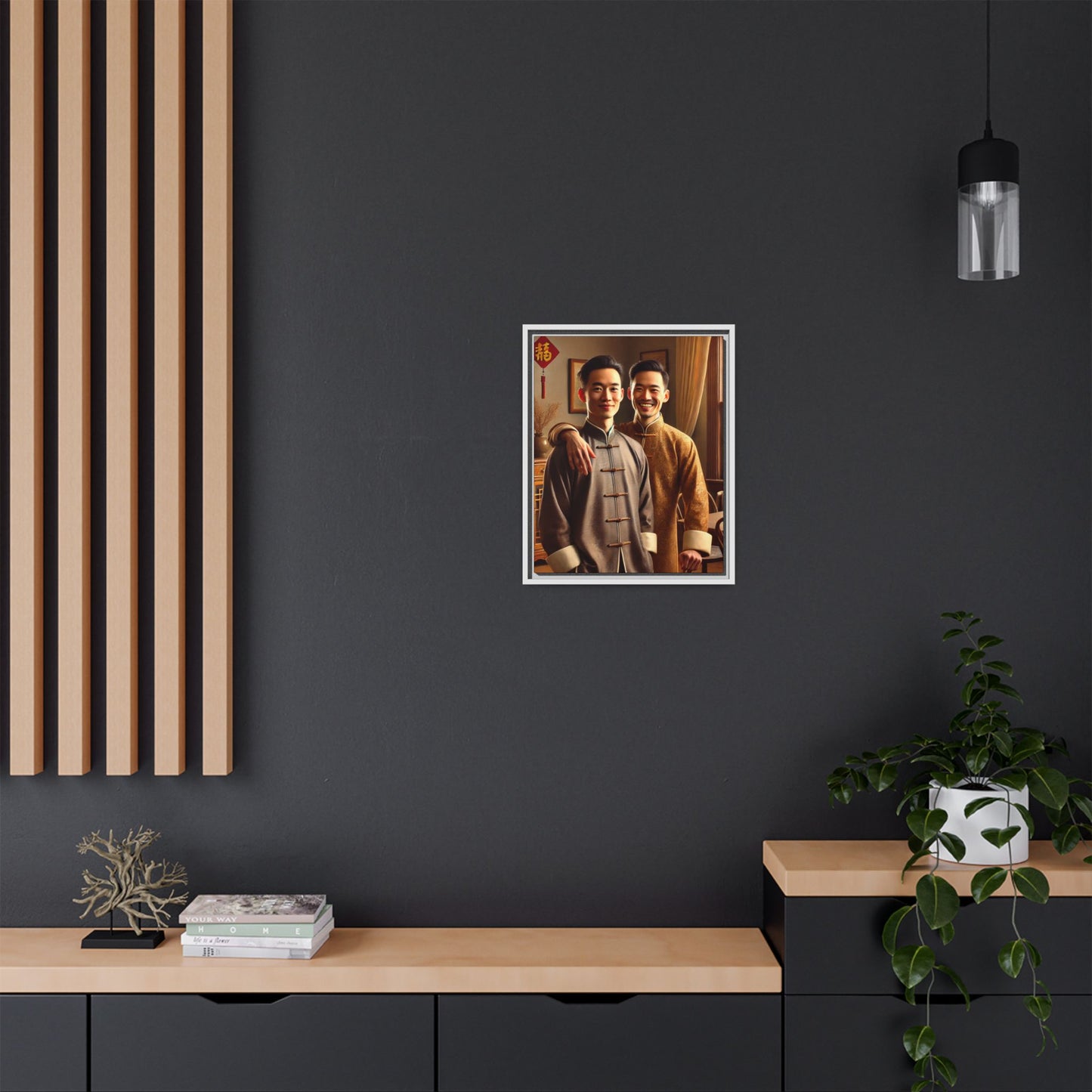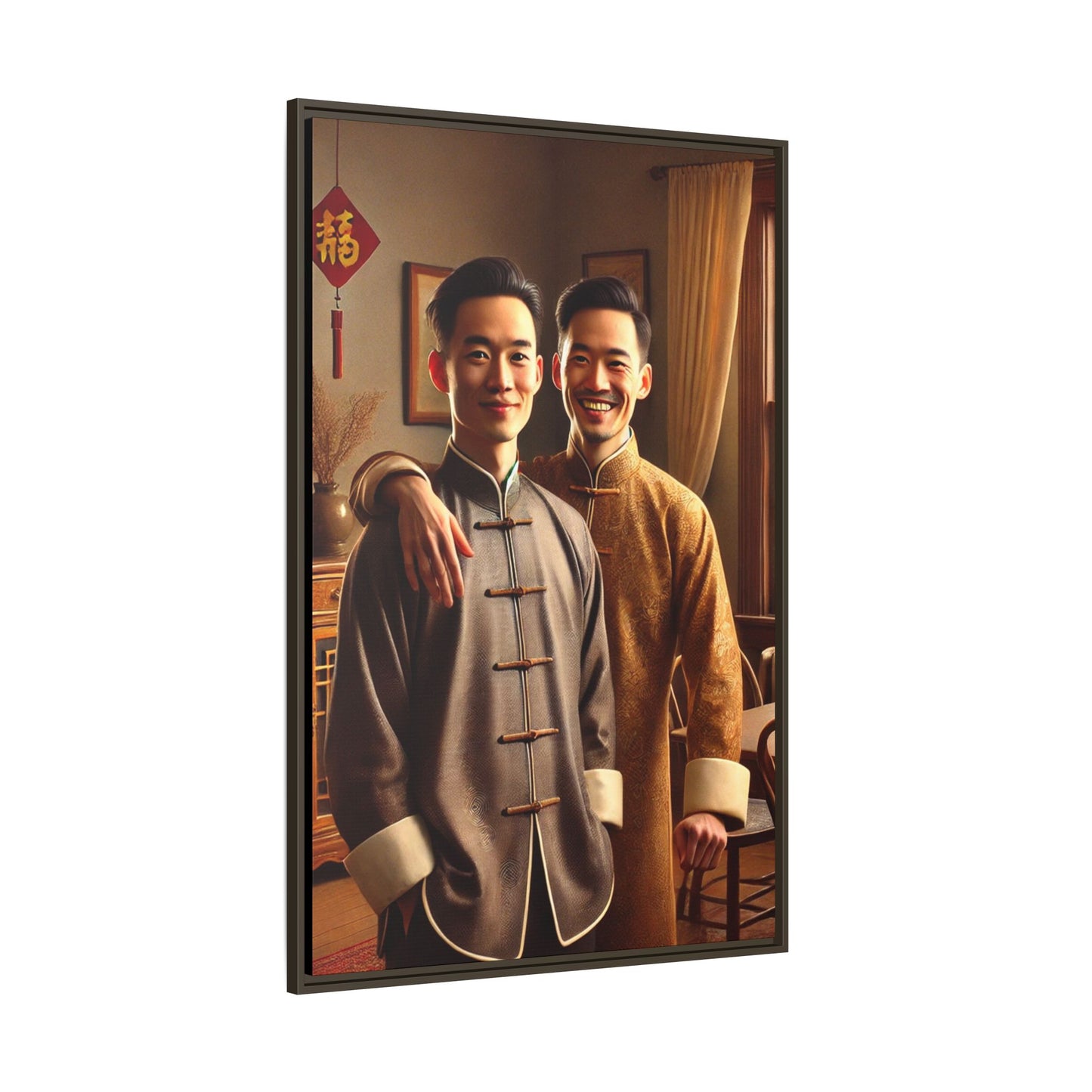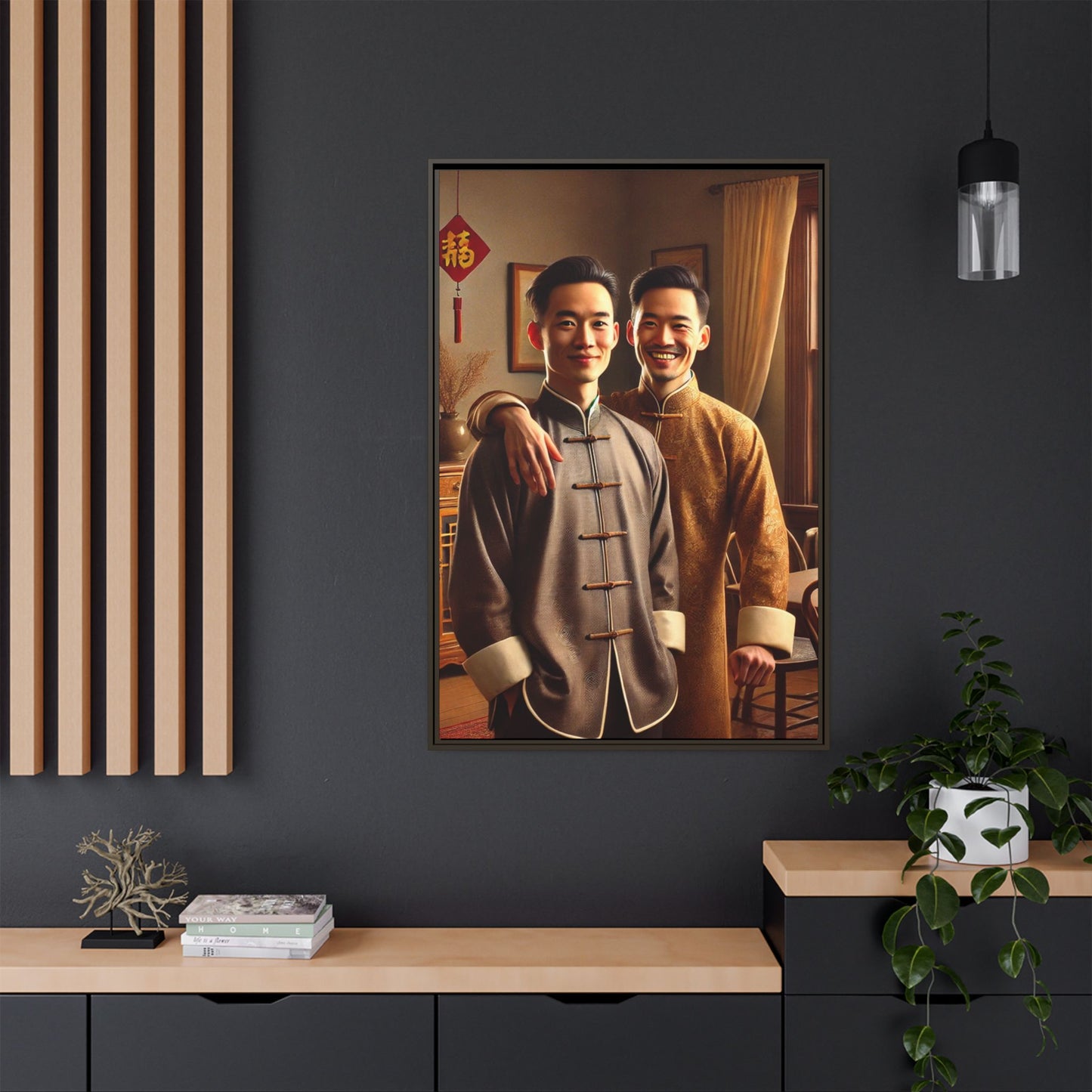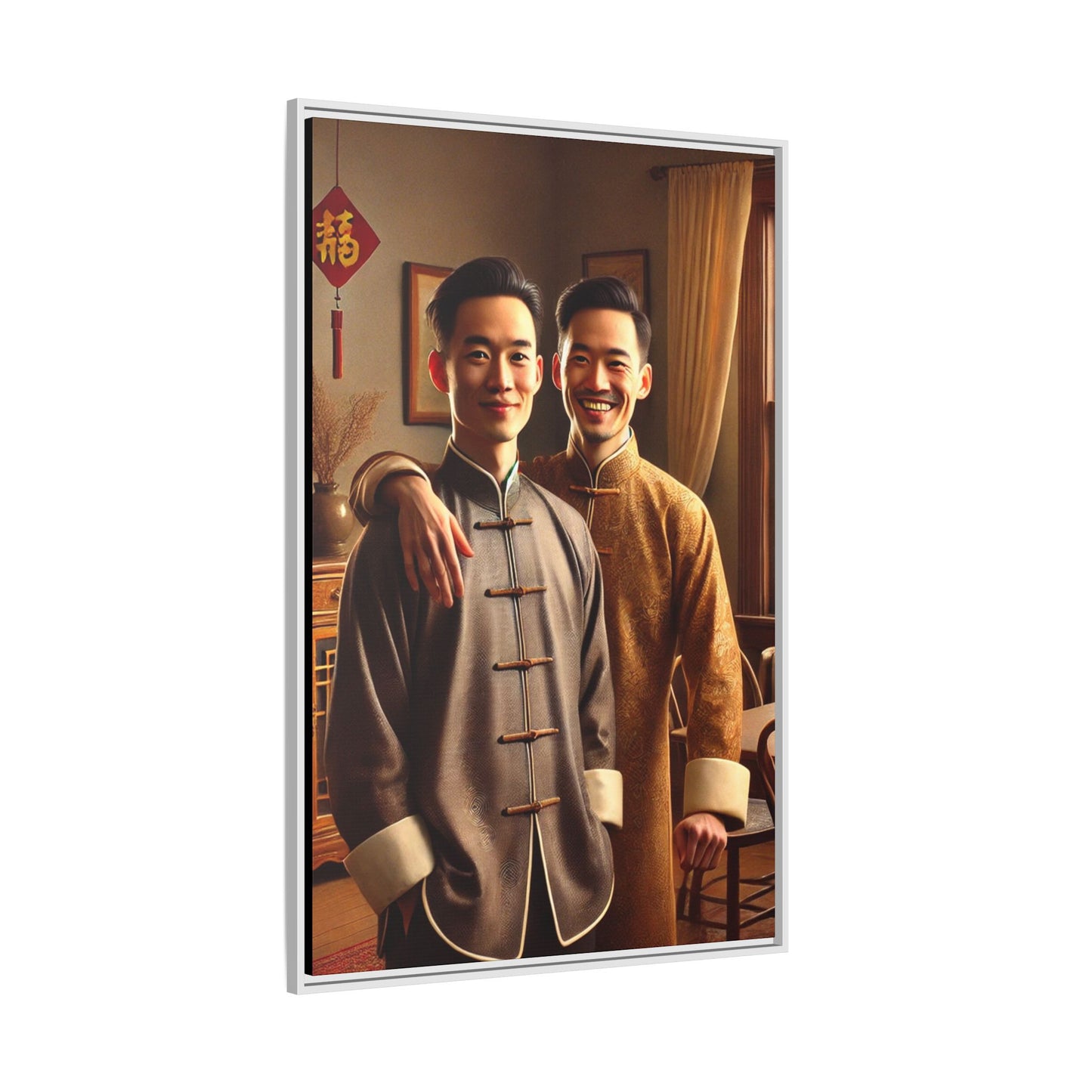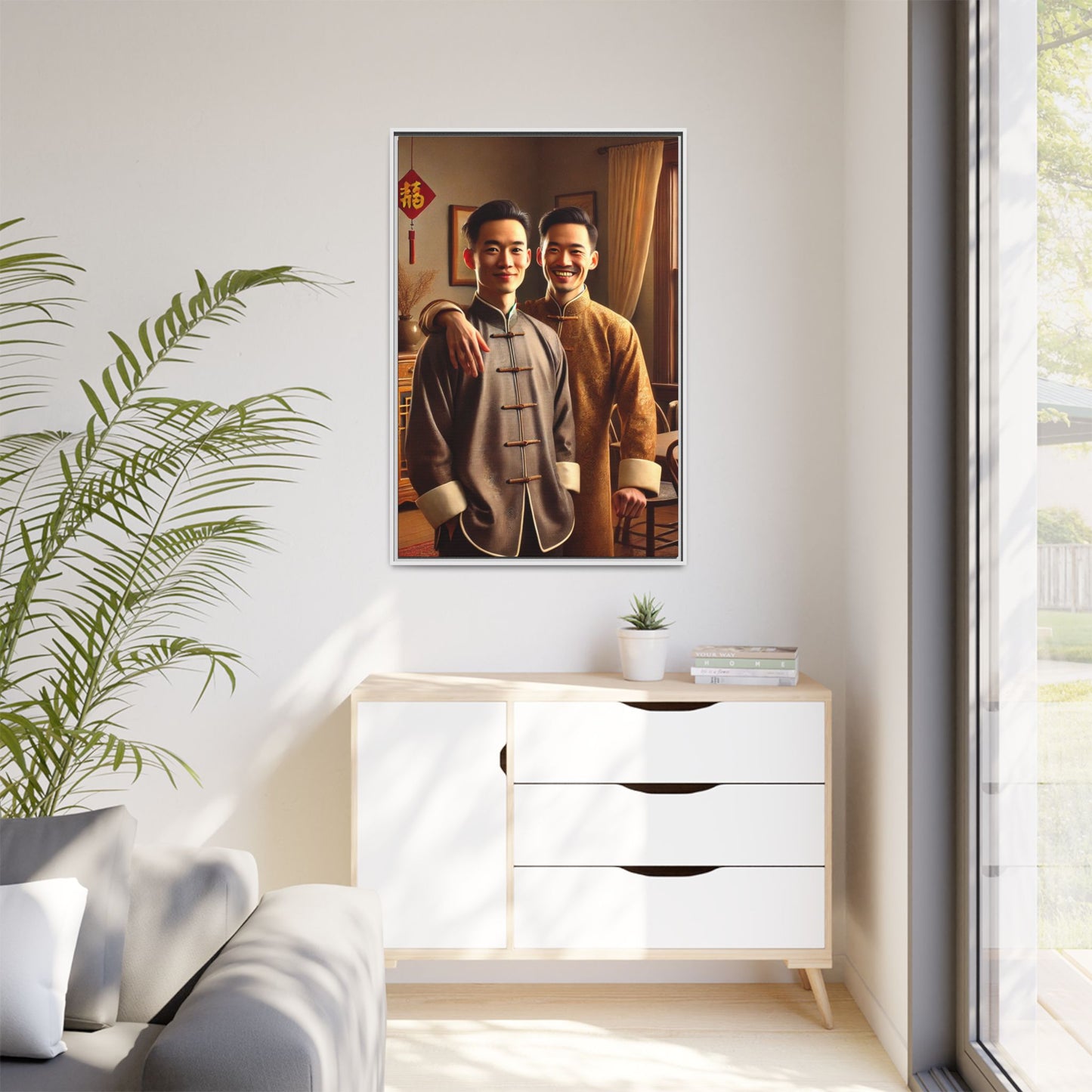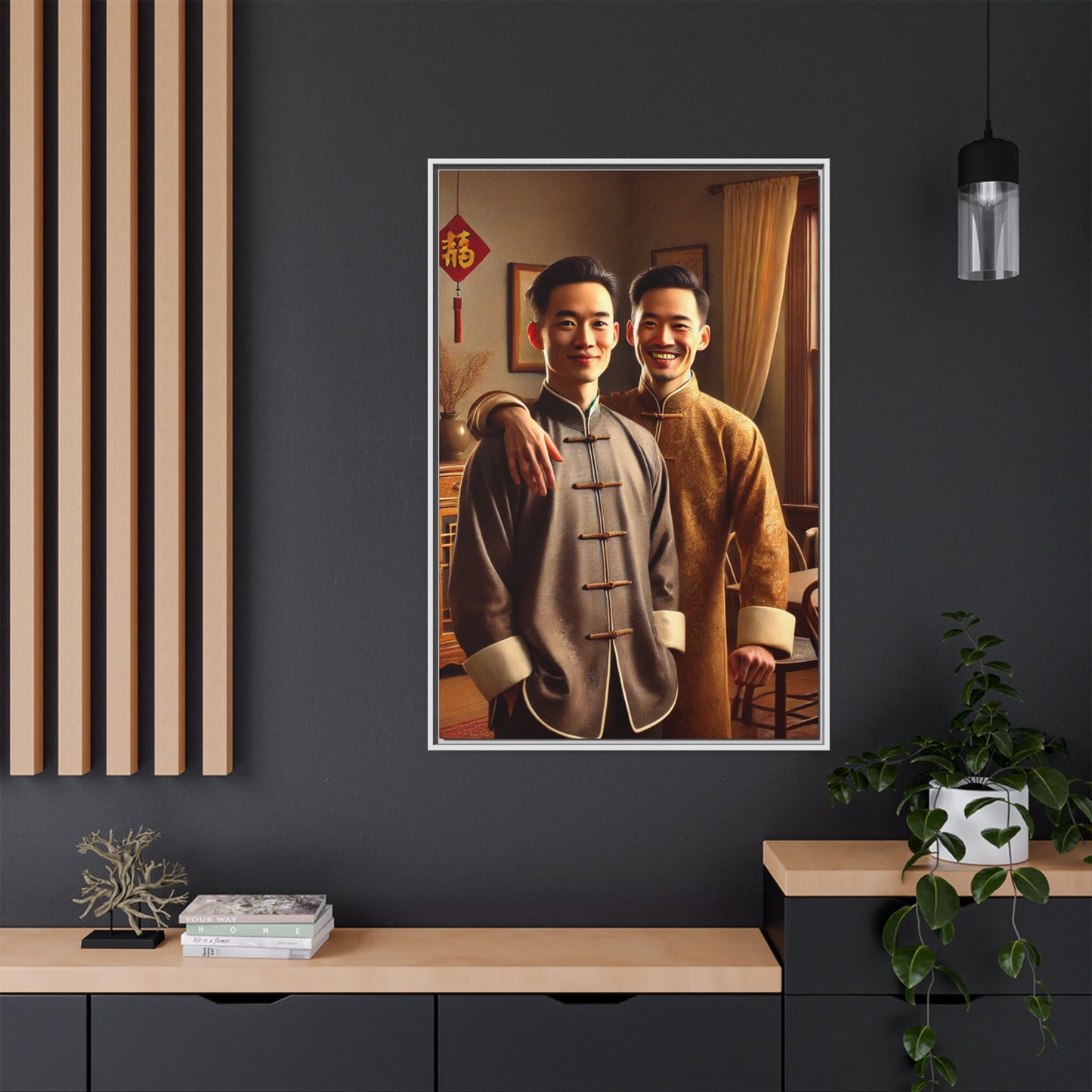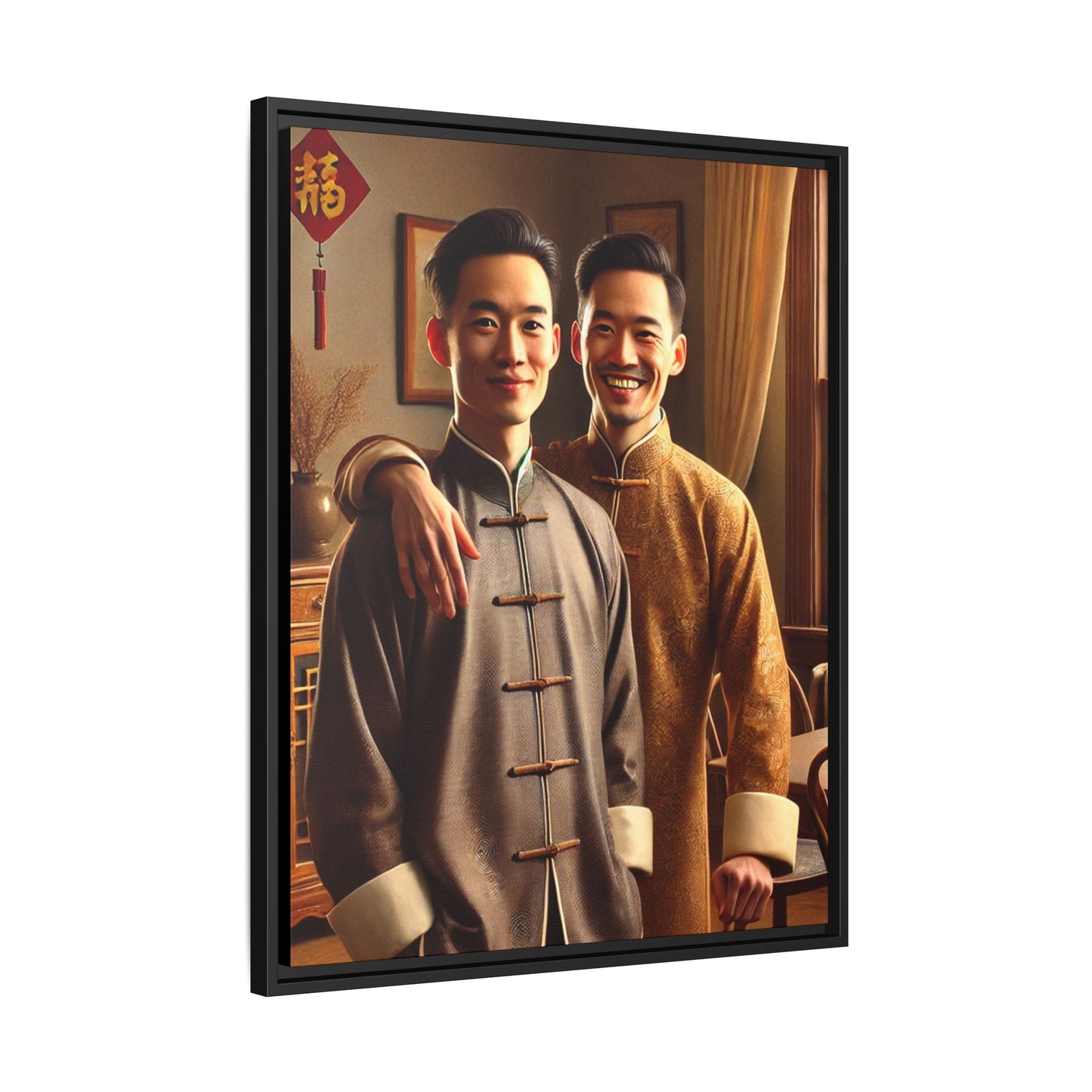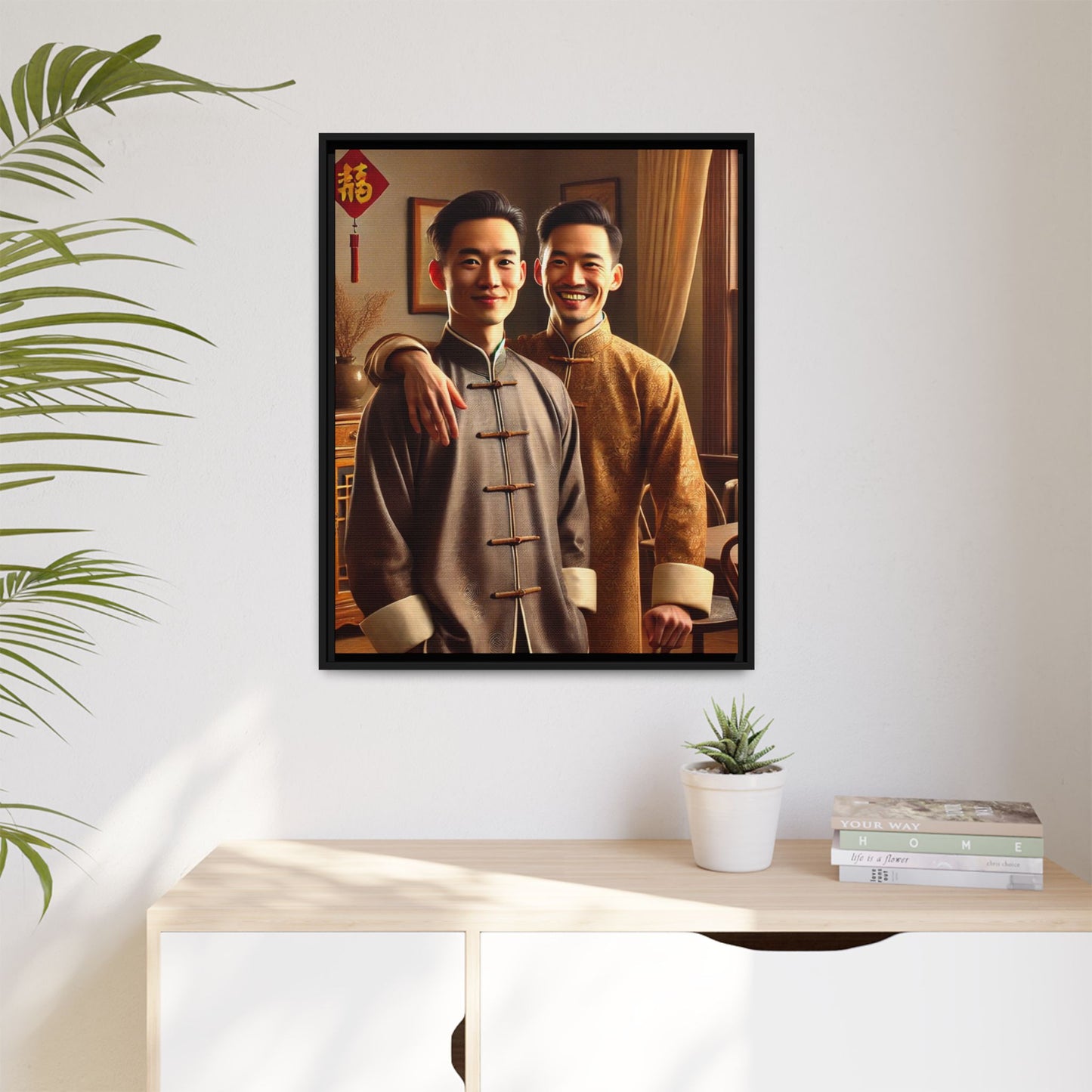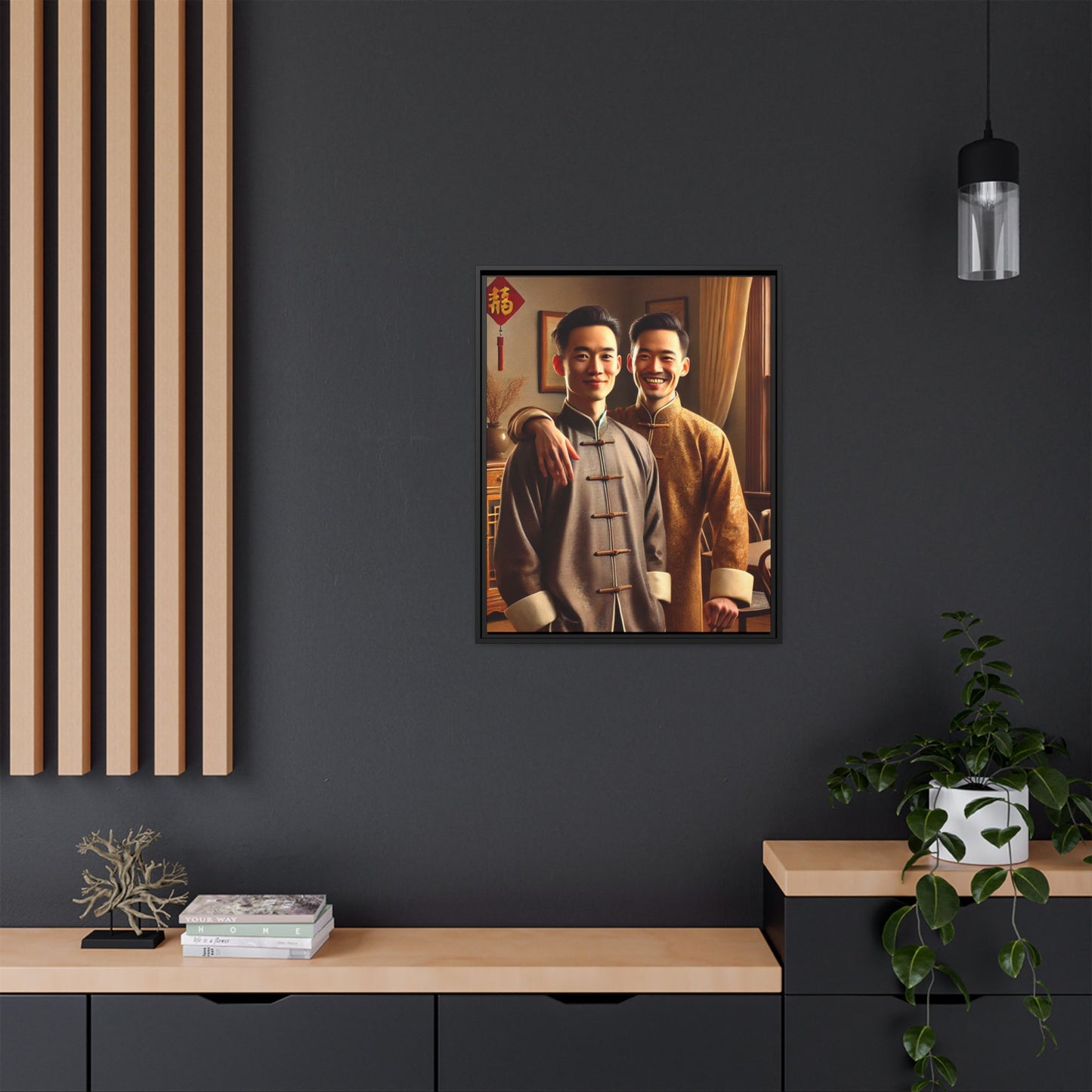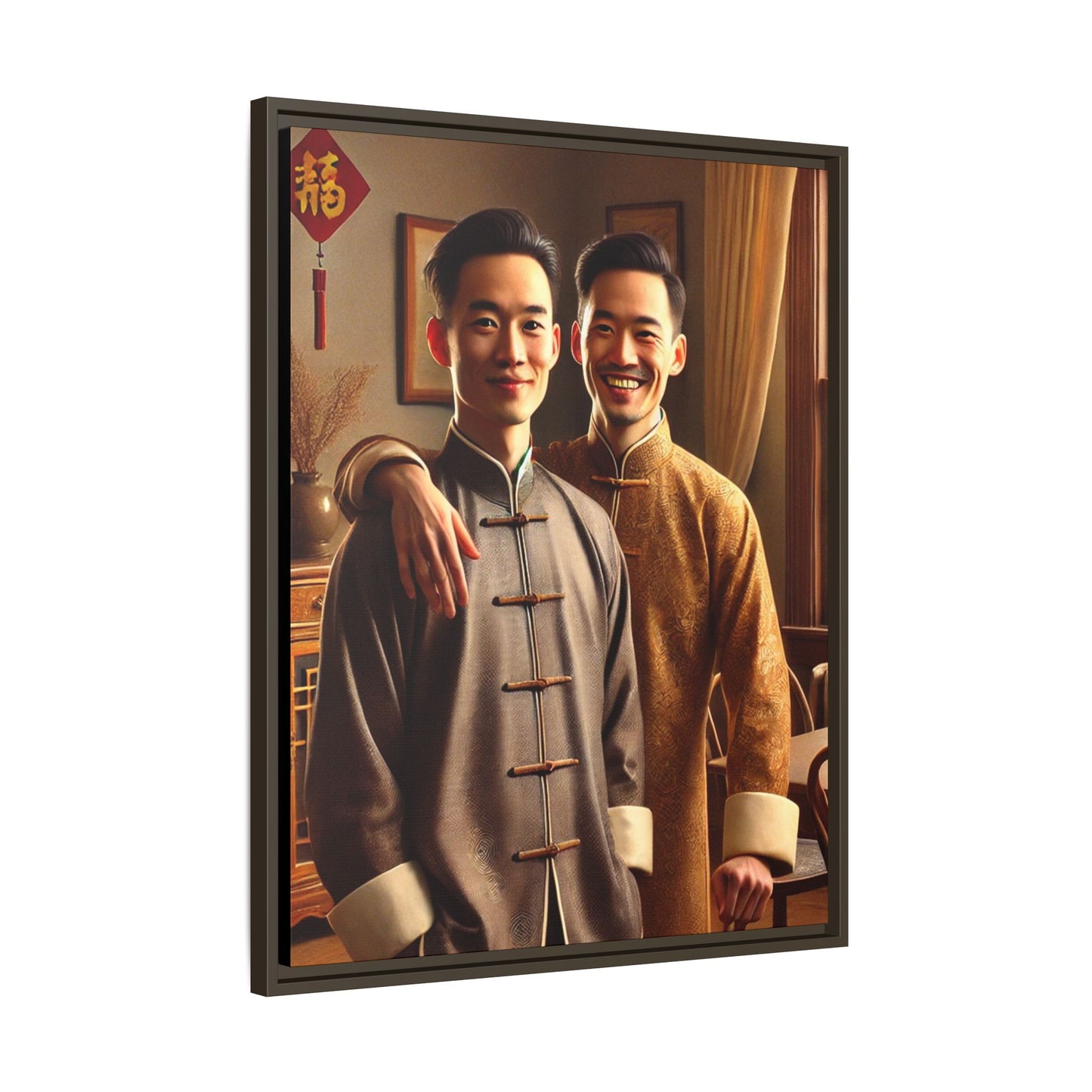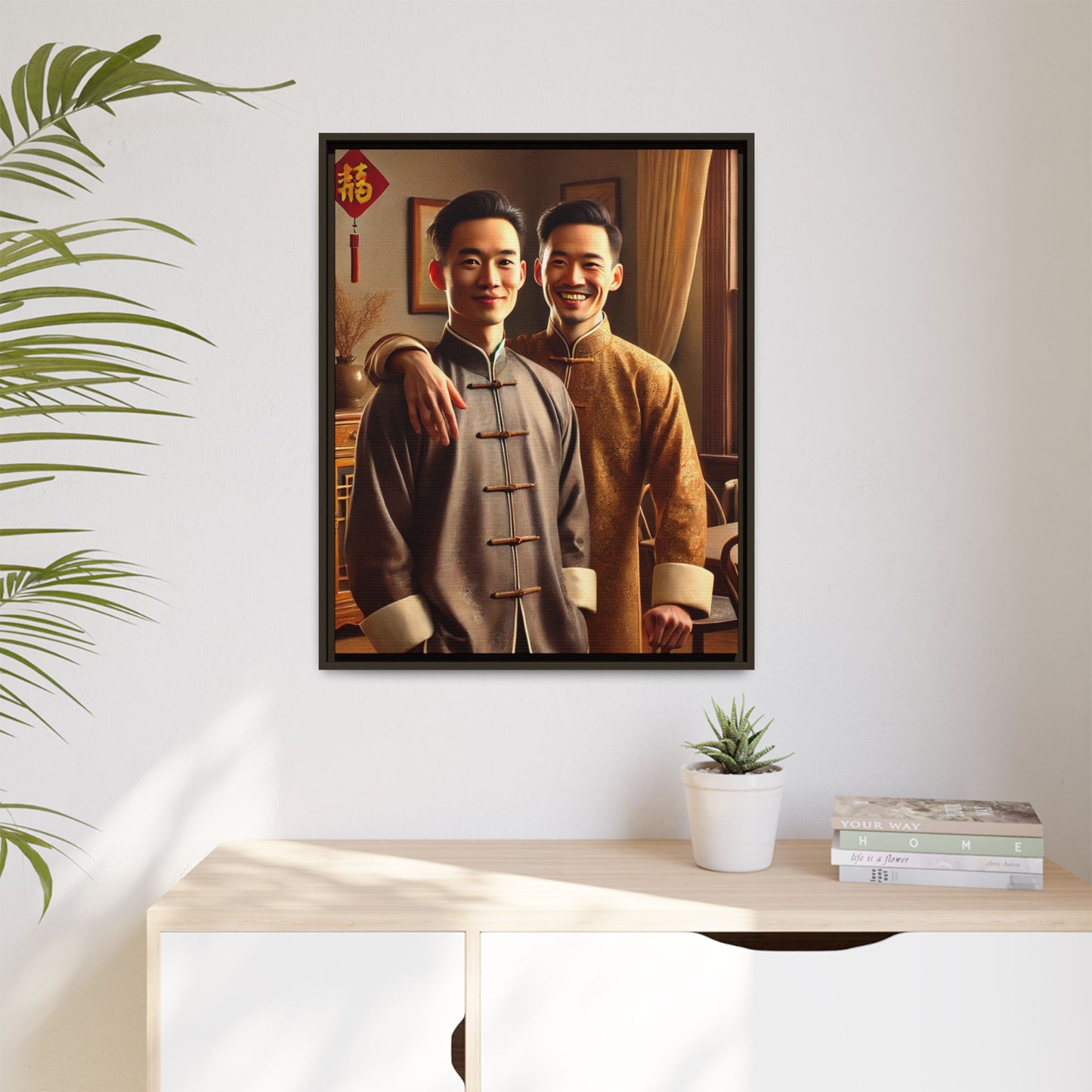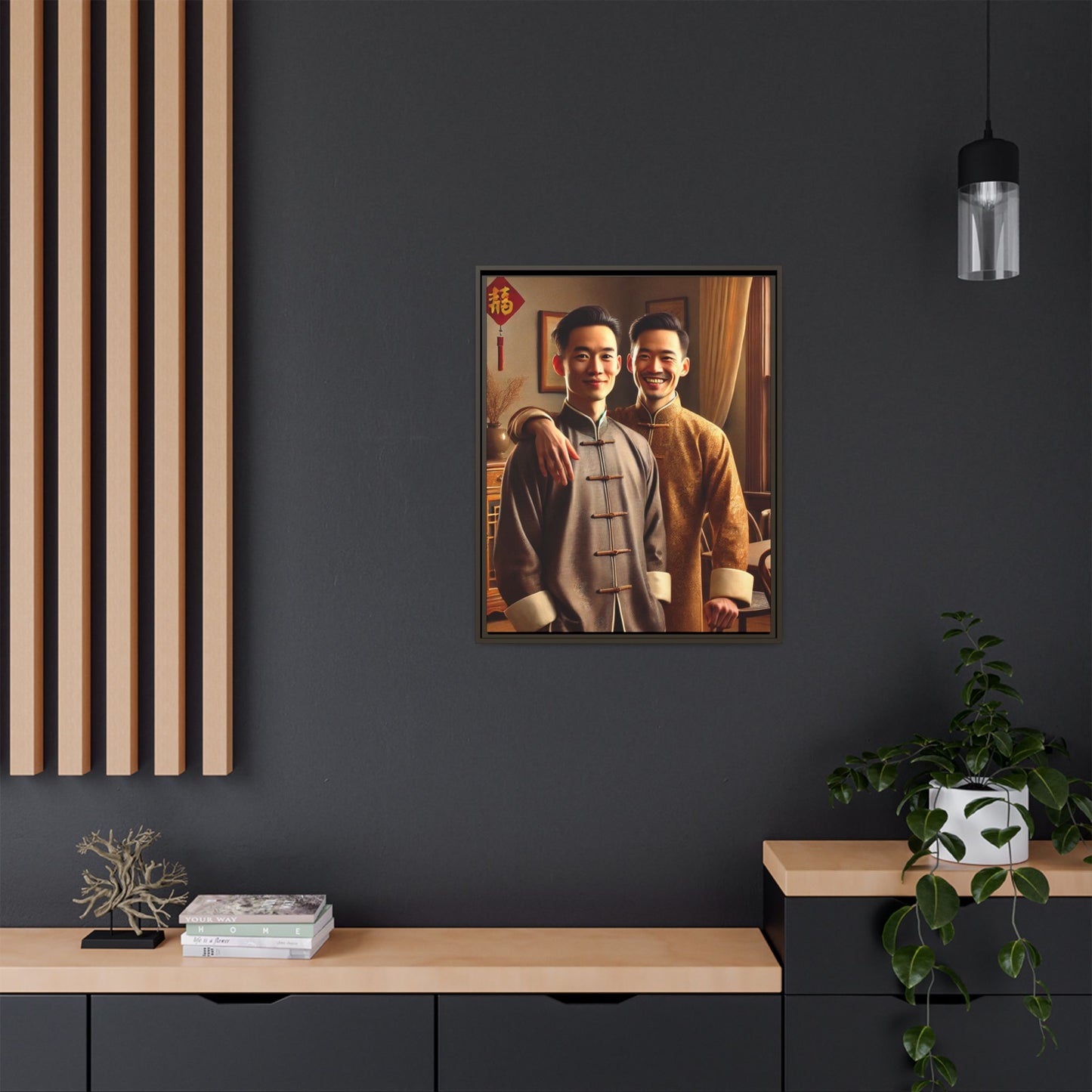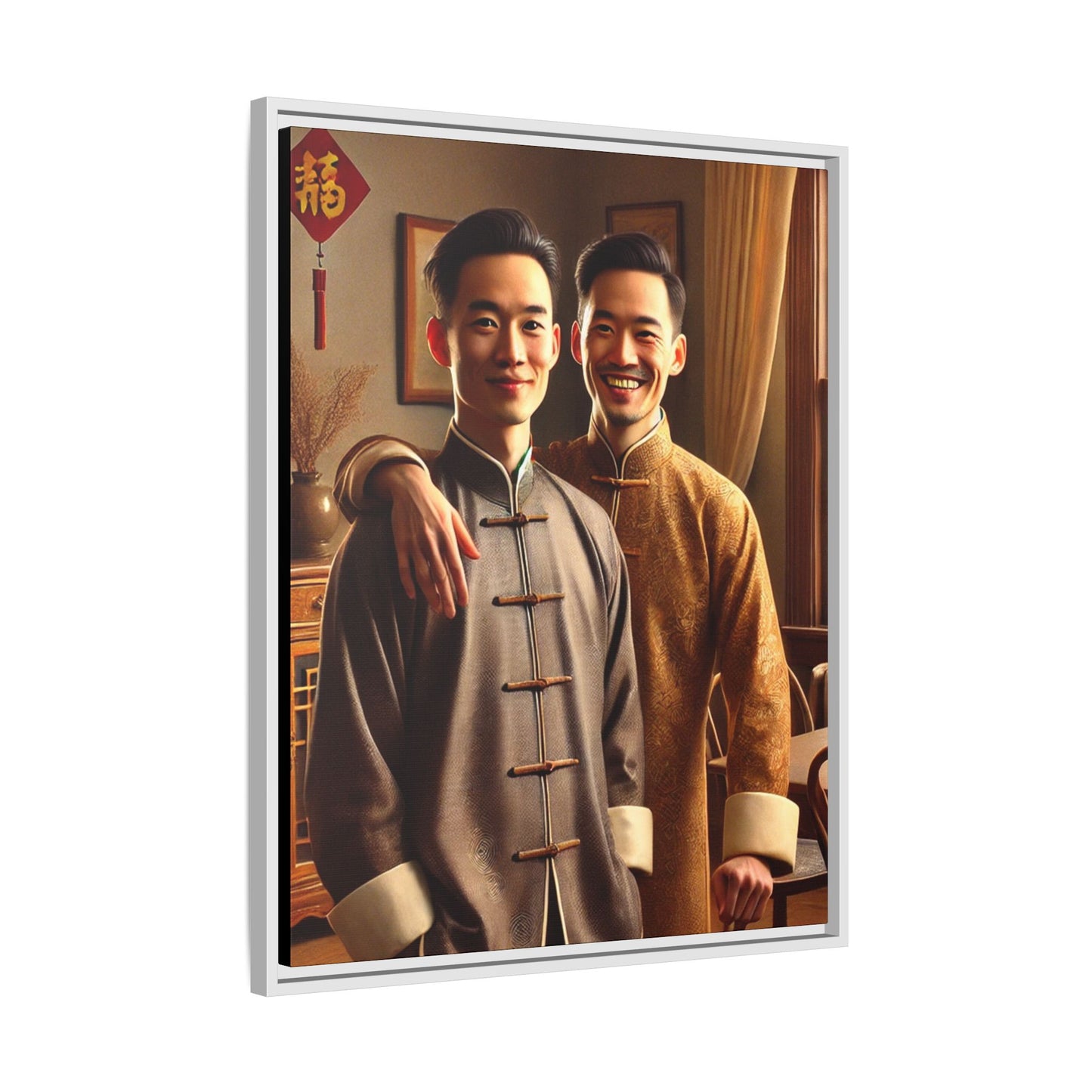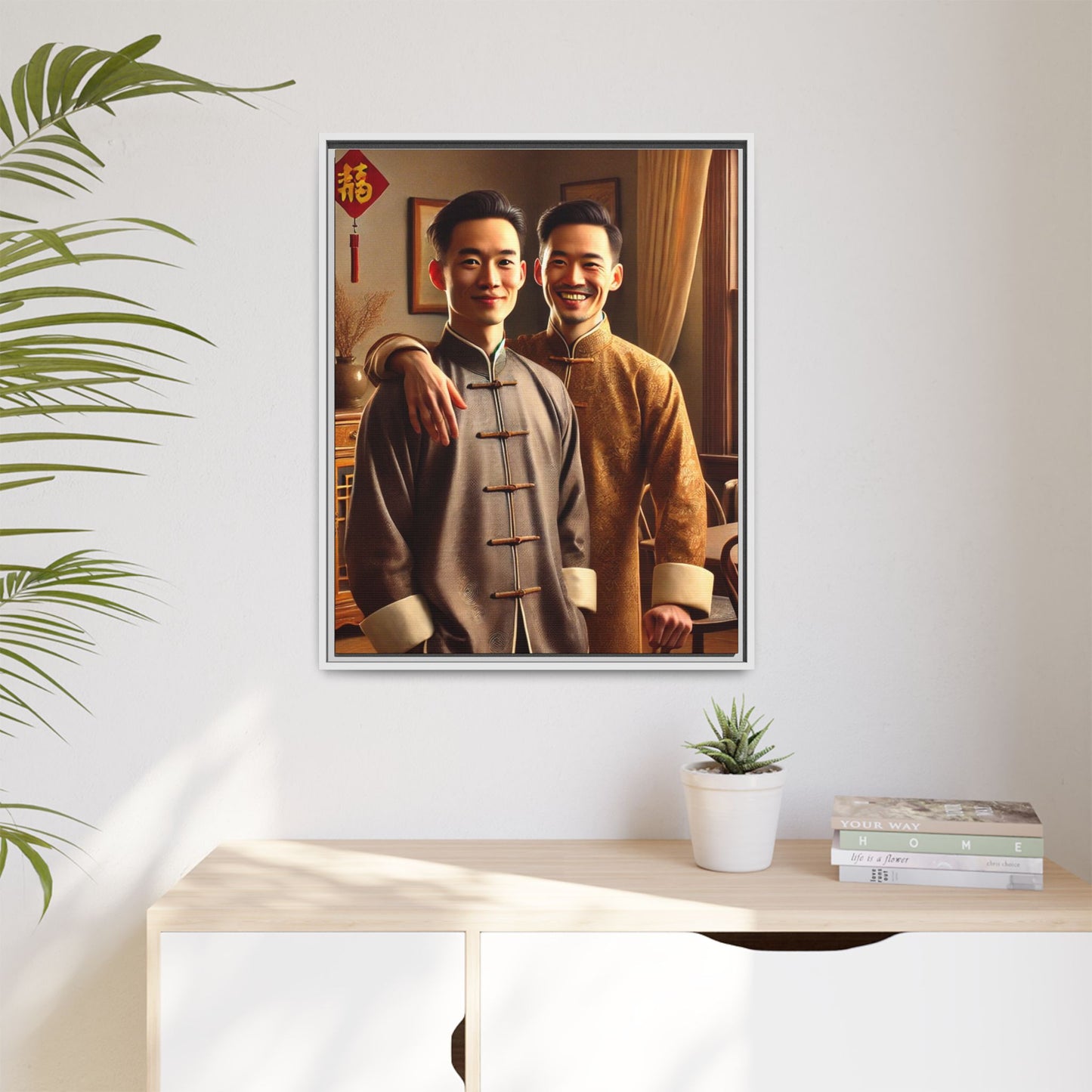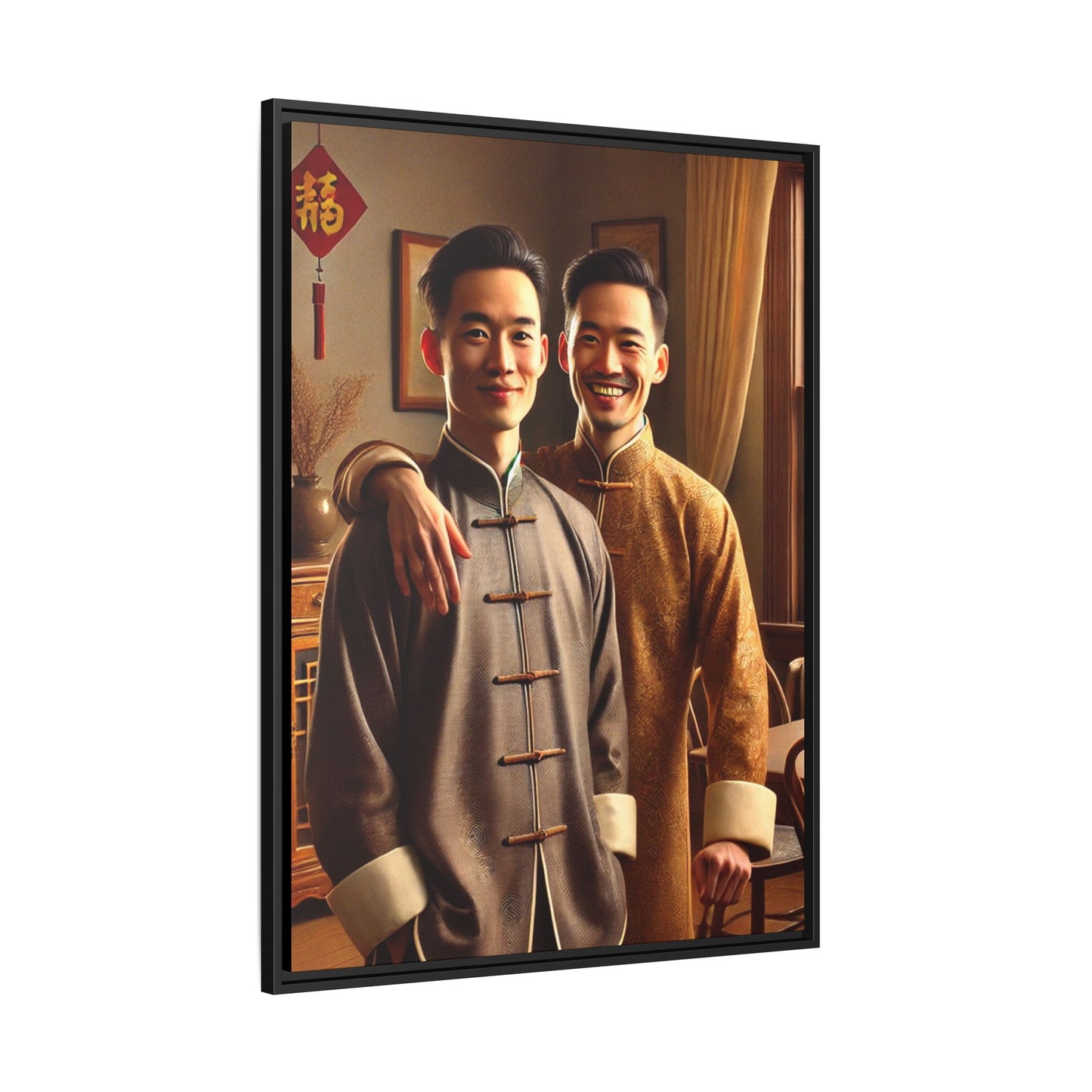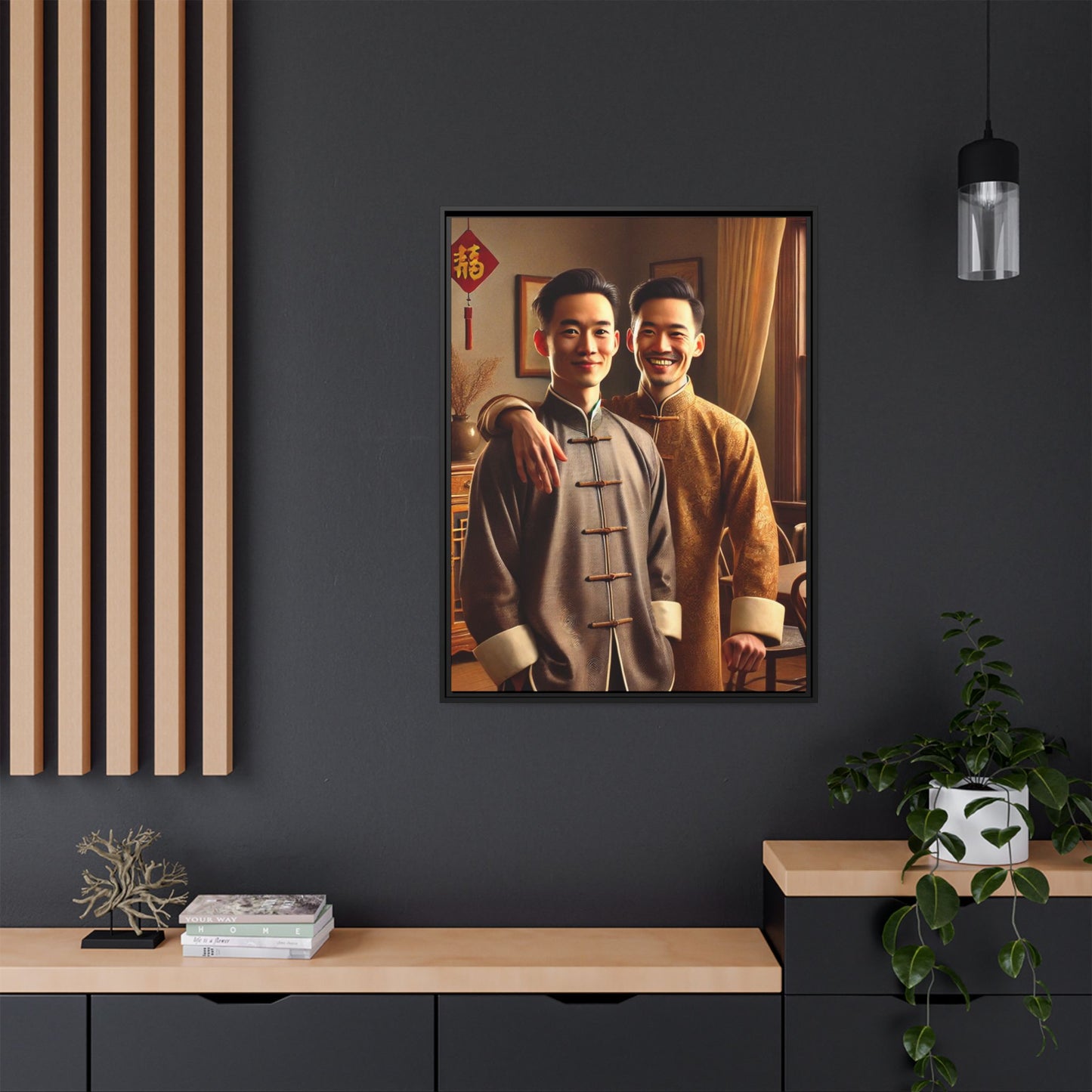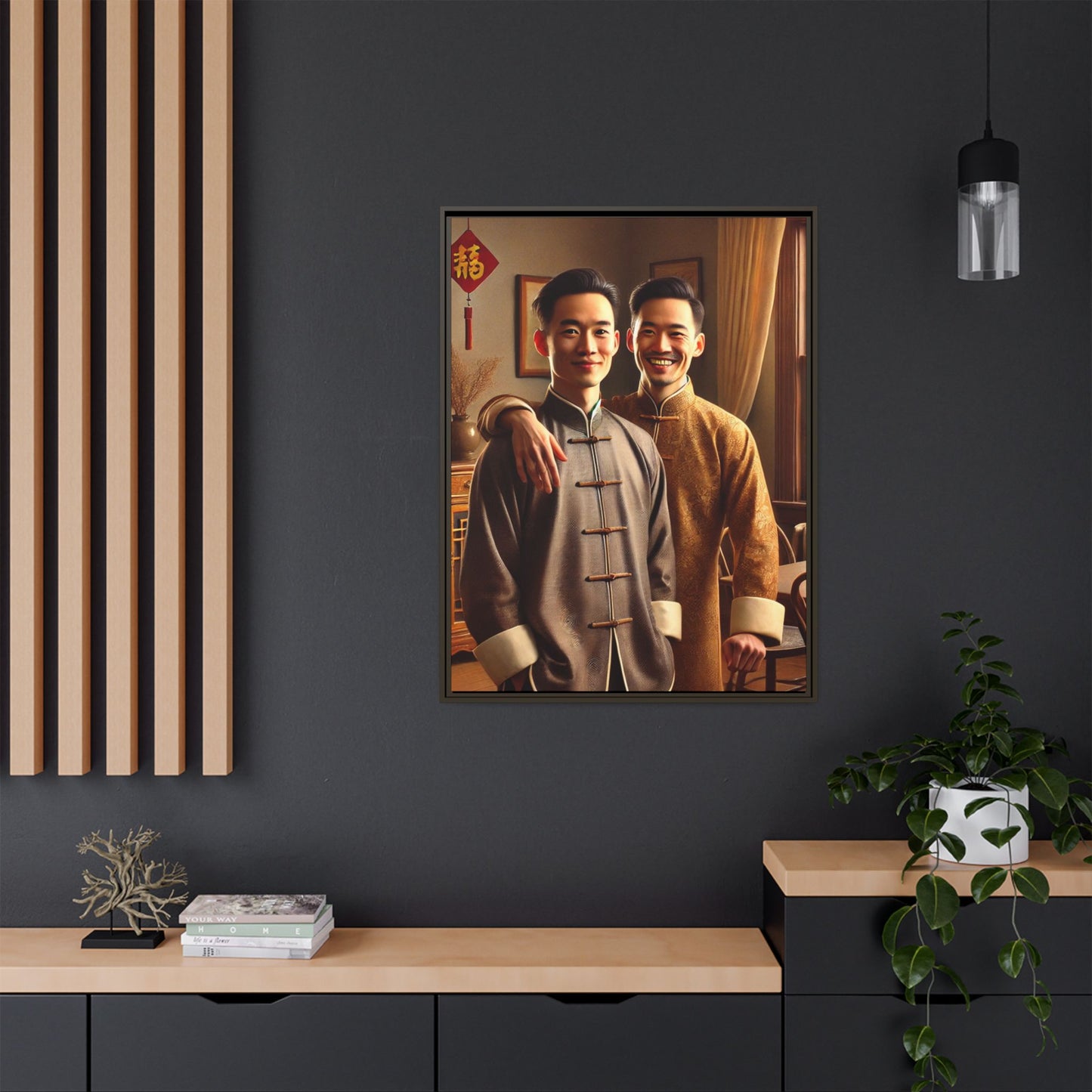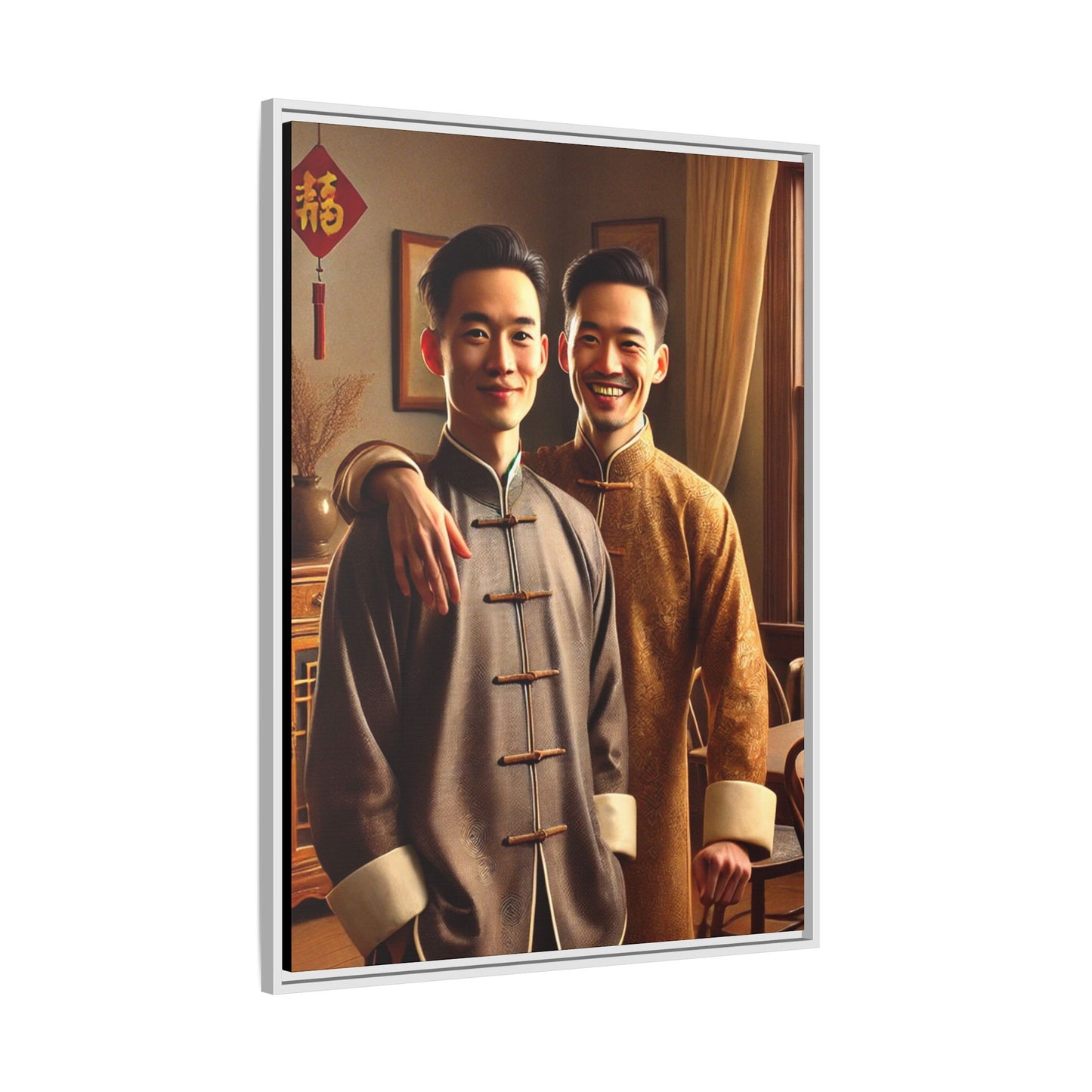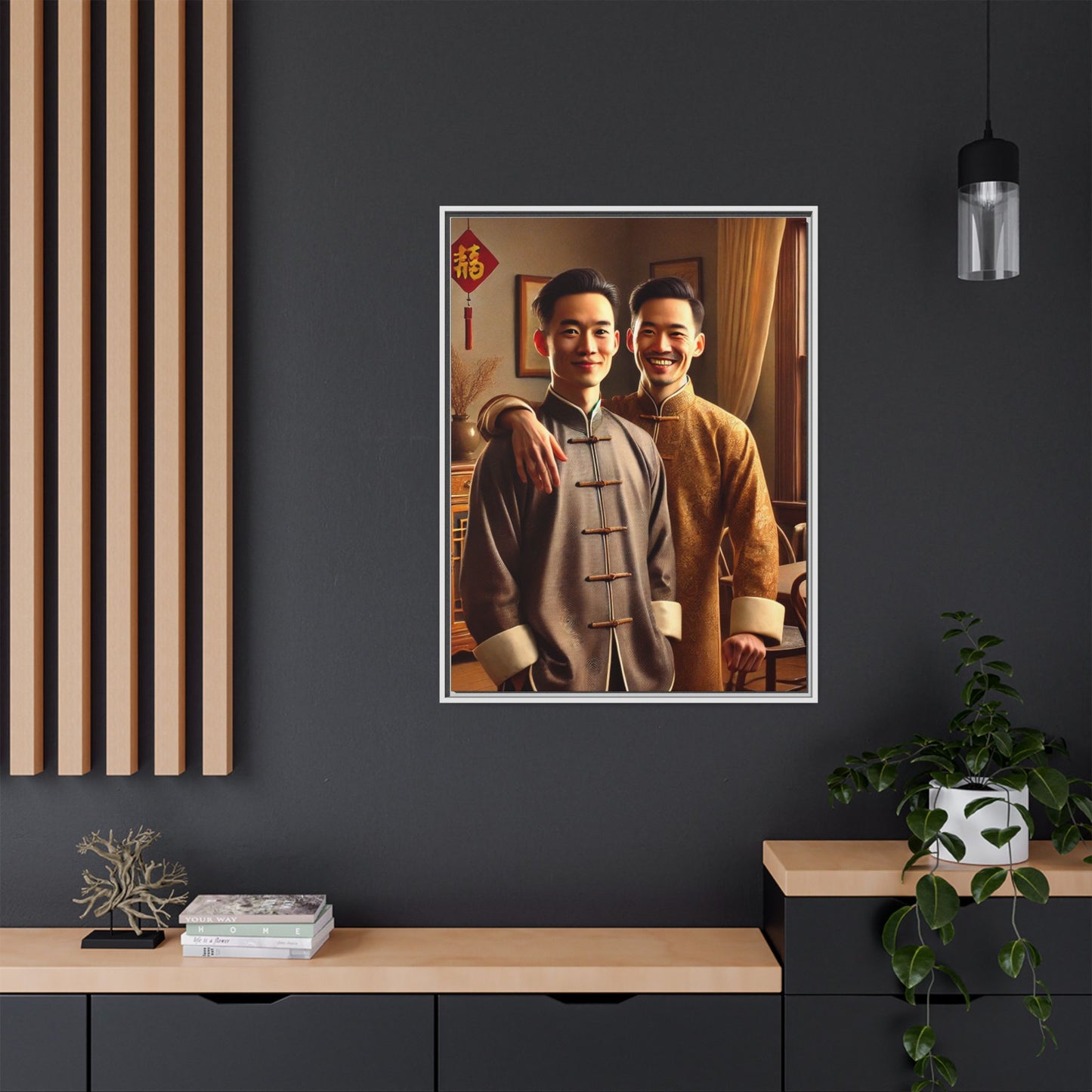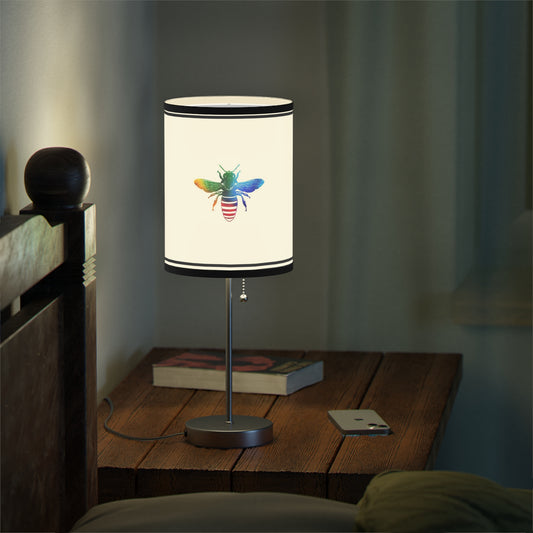This artwork captures a joyful and intimate portrait of a Chinese queer couple celebrating Chinese New Year in a cozy setting, perhaps in Iowa City, Iowa. The two men stand close together, with one wrapping his arm around the other’s shoulder, both dressed in traditional Chinese attire—one in a gold-patterned silk tunic and the other in a muted gray tunic with elegant details. Their warm expressions and confident postures convey a deep bond and a shared happiness in the moment.
The setting is adorned with subtle Chinese New Year decorations, including a red "福" (fu) character hanging on the wall, symbolizing good fortune and happiness. The warm, ambient lighting gives the scene a nostalgic, intimate feel, highlighting the textures of their clothing and the gentle warmth in their smiles. The blend of traditional Chinese culture with the cozy American home setting symbolizes their connection to heritage and the celebration of their love in a place that may be far from their ancestral home.
This artwork beautifully conveys the themes of love, cultural pride, and unity, celebrating queer love within the context of Chinese traditions. It captures the essence of belonging and cultural celebration, creating a sense of warmth and authenticity in a Midwestern setting.
This case study series examines the life and work of Midwestern artist Grant Wood. Known for his role in the Regionalist art movement, Wood’s paintings capture the spirit of rural American life with a distinct style inspired by Gothic and Renaissance art. His most iconic works, like American Gothic, reflect a meticulous attention to detail and a flat, decorative approach, showcasing earthy, muted colors—greens, browns, and blues—that echo the landscapes and life of the Midwest. These colors, punctuated occasionally with bright reds or yellows, create a grounded yet nostalgic atmosphere, resonating with the enduring American spirit.
This study is also a tribute to Wood as a queer artist—a truth that he may have kept concealed due to the social and cultural norms of his time. While the term gay didn’t gain mainstream use until the 1960s, queer has since become an inclusive, positive label within the LGBTQ+ community. It embraces a spectrum of identities that defy traditional definitions of sexuality and gender, reflecting the diversity and resilience of those who navigate life outside conventional norms. Reclaiming the term allows us to acknowledge the full breadth of Wood’s identity as part of his legacy.
In exploring Wood’s work, this series imagines what his art might have looked like if he had the freedom to express his authentic self openly, without societal restrictions. It also raises questions about the impact of cultural bias on art preservation—wondering if some pieces that might have reflected same-sex relationships were perhaps destroyed or never created due to the fear of judgment. These case studies honor Grant Wood’s authenticity, celebrating his contributions as a trailblazer in American art and recognizing the need for broader representation in galleries and museums today.
Please note: Slight size variations of +/- 1/8" (3.2mm) may occur due to the production process.
- Cotton and polyester canvas composite with a special proprietary coating
- Sustainably sourced pinewood frame
- Available in multiple sizes and frame colors
- Horizontal, vertical, and square options available
- Sawtooth hanging hardware included.
